Egypt, Part 9: The Oasis of Bahariya
— Egypt — 9 min read
26 - 27 May 2011
After more than two weeks in Cairo, I was looking forward to getting back on sanDRina and heading south. I enjoyed my time in the hectic city, but the open space of the desert was calling. There are multiple routes heading south from Cairo: one follows the Red Sea coast, another follows the Nile going through every little town along the way, then there's a brand new highway through the desert along the Nile and lastly the path I took, The Oasis Route through the Western Desert.
As its name implies, the route goes through several oases that are scattered in Egypt's vast Western Desert, which is on the eastern end of the grand Sahara desert. My destination was the first oasis of Bahariya, where I connected with Hamada through CouchSurfing and had a wonderful experience of water in the desert and sleeping under the stars.
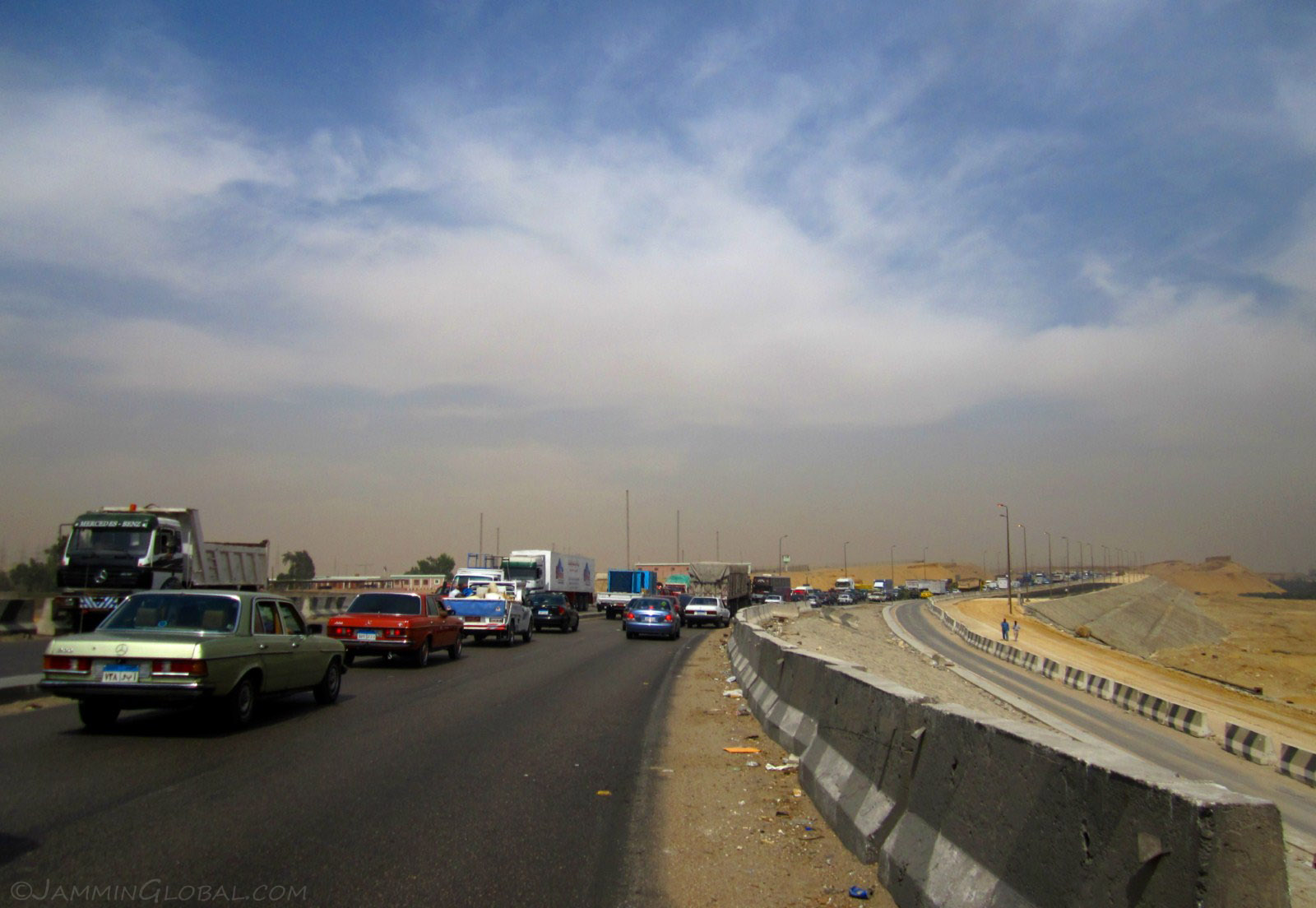
Getting out of Cairo after more than two weeks there and I was eager to leave the cacophony of traffic behind.
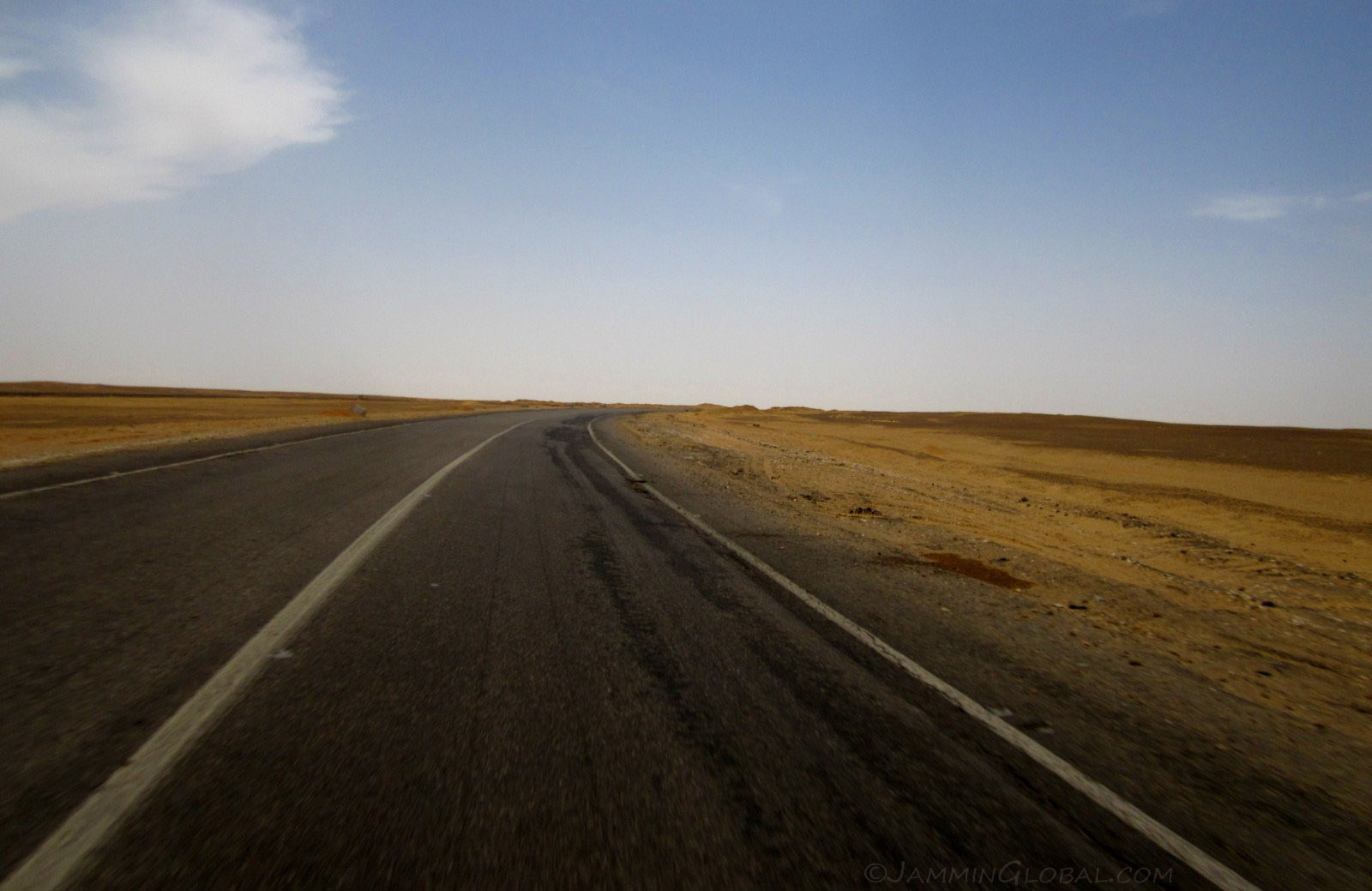
Aah, finally out on the open road and heading southwest to the oasis of Bahariya.
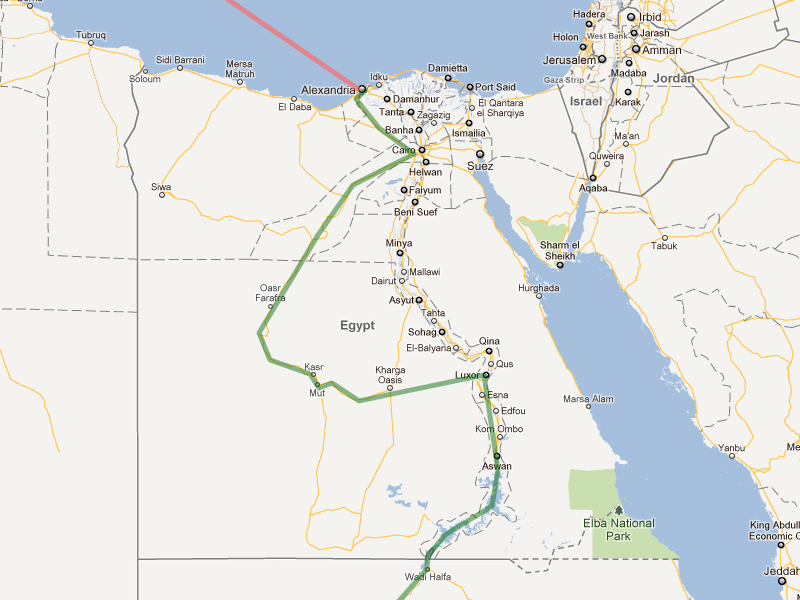
My route through Egypt. Bahariya is at the intersection of where the road from Siwa joins the Oasis Route. Click on it to go to the interactive version in Google Maps.
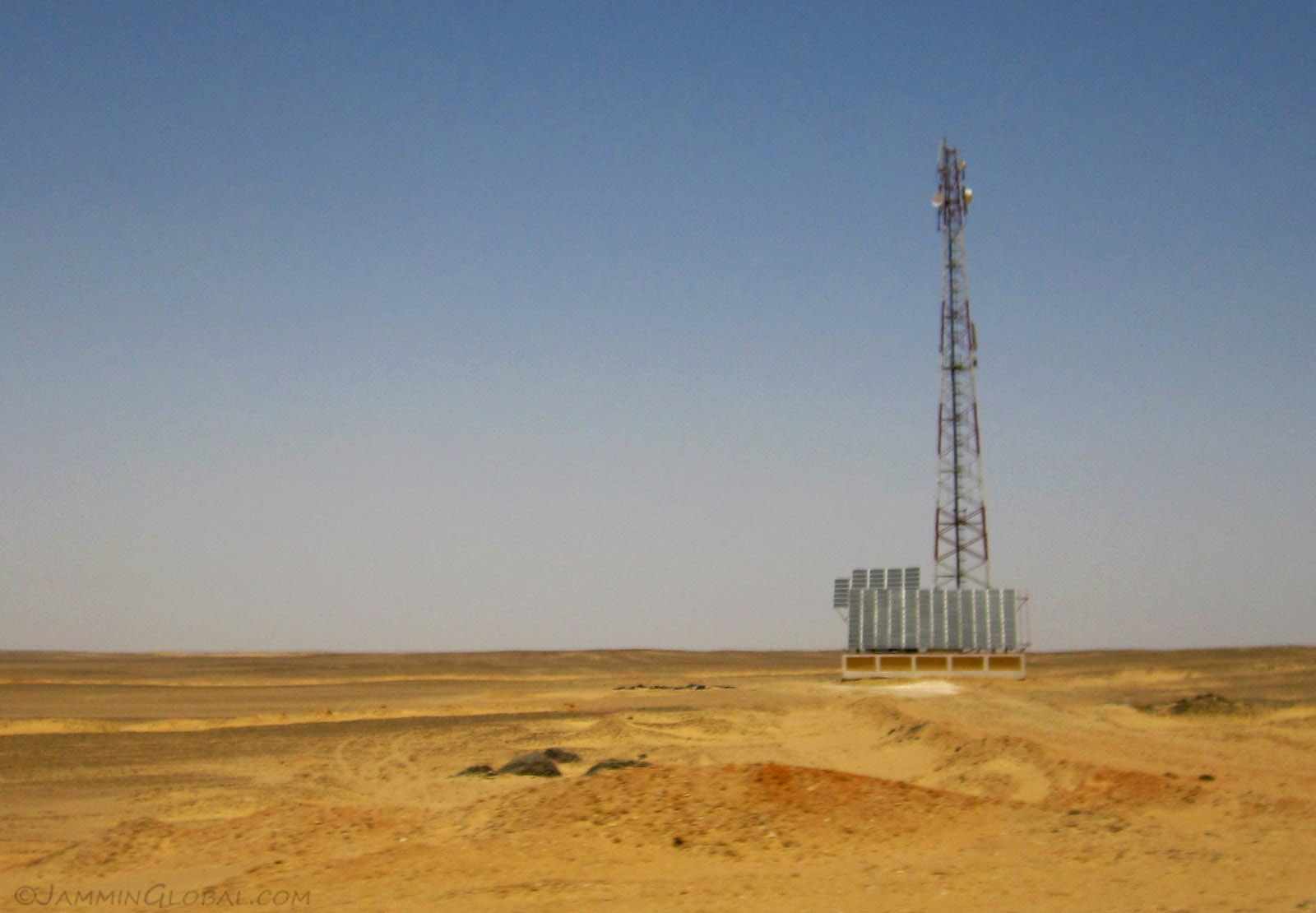
Solar-powered cell phone towers in the desert. Mobile technology is spreading fast throughout the world and there are not many places where you can't get a cell signal these days. Comforting for some, annoying for others who want to get away from it all. I bought a local Mobinil Sim card so that I could connect with my hosts along the way.
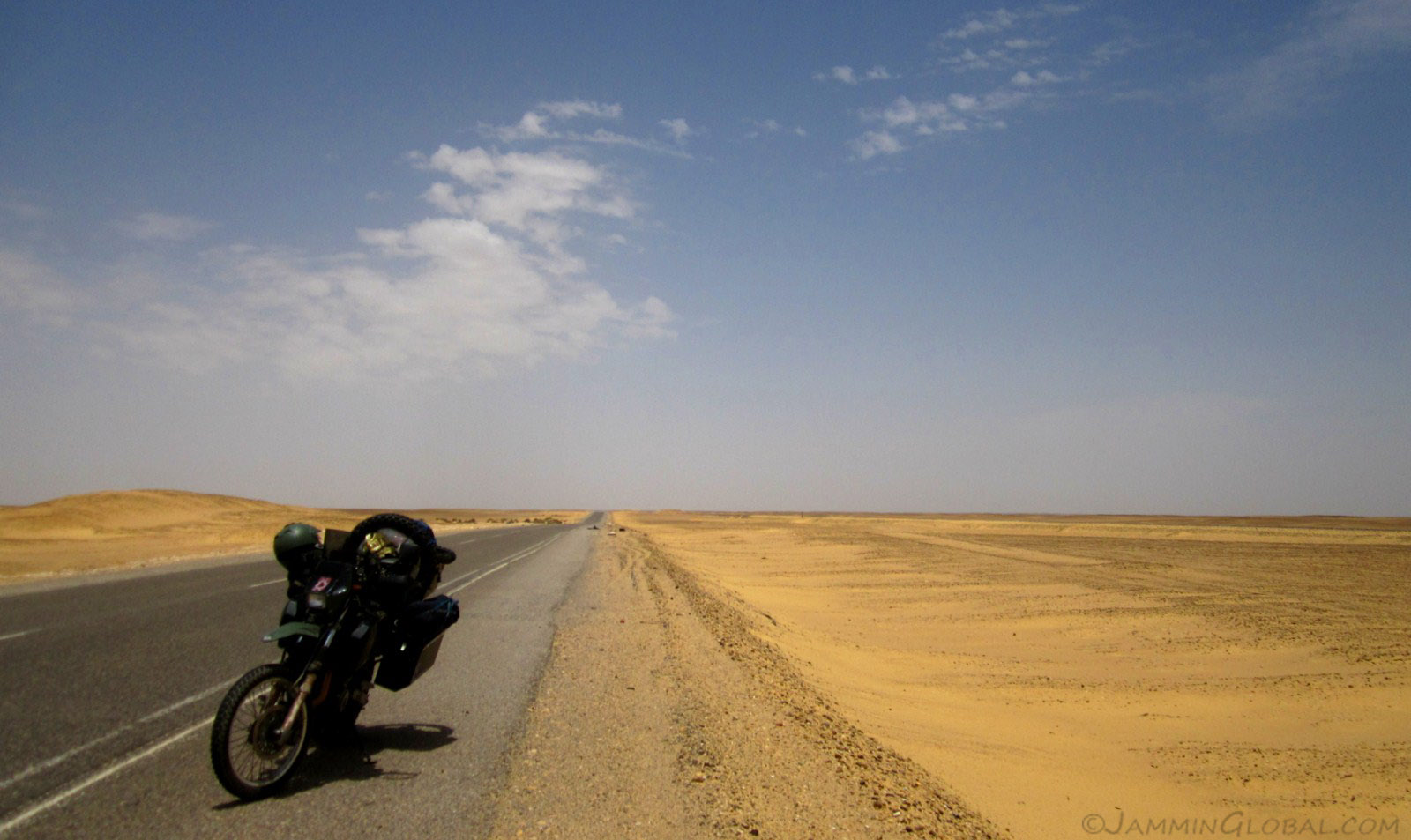
sanDRina out on the Oasis Route in Egypt's Western Desert. It was about 12:30 and the dry heat was intense. The 400 kms (248 mi) from Cairo to Bahariya was easy riding but I stopped frequently to drink water. It wasn't just plain water as I had made my own rehydration solution, which my sister recommended. In a liter of water, I put 1 tablespoon of sugar, half a teaspoon of salt and squirted some concentrated lime juice in it.
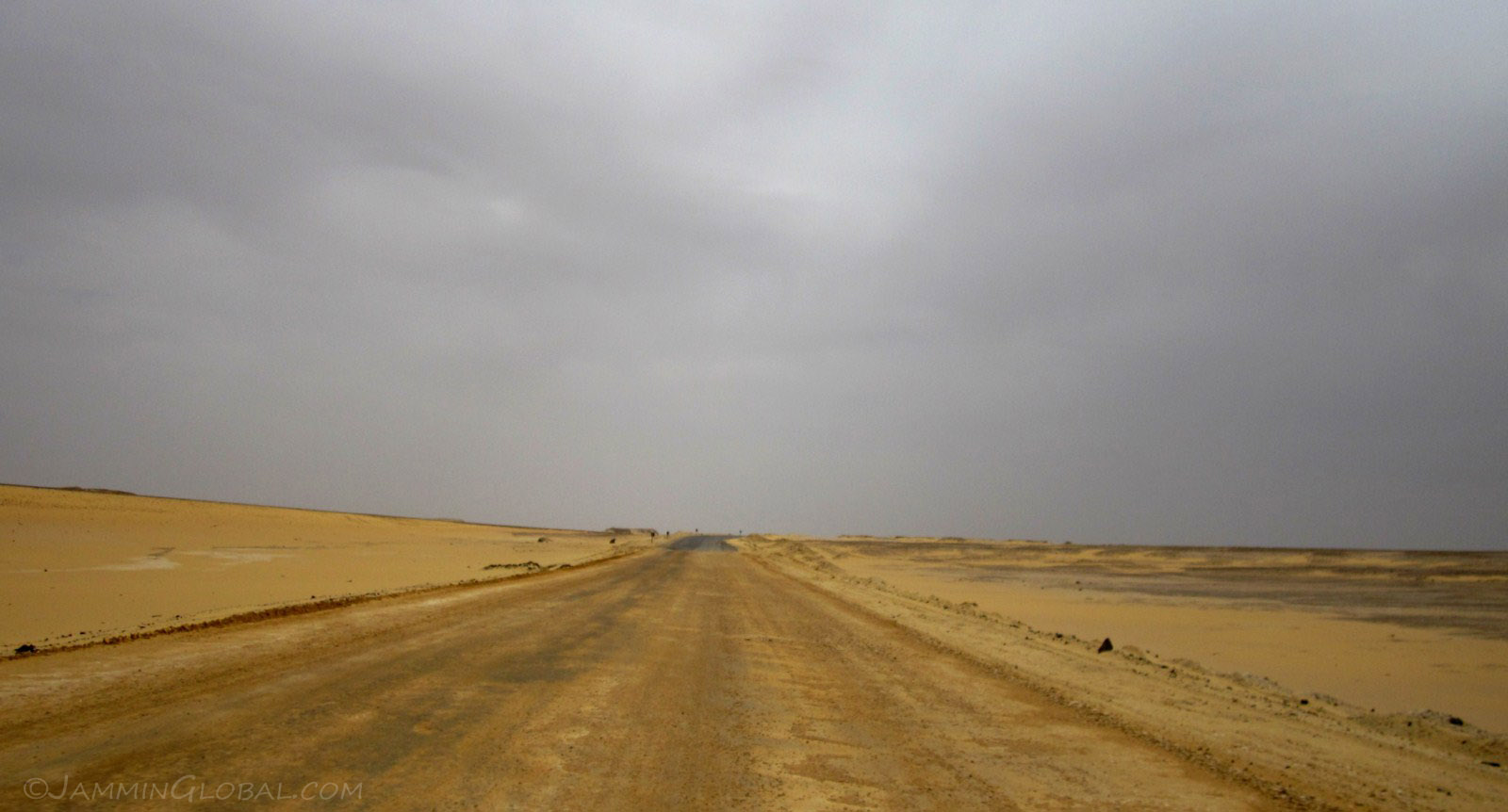
Passing through some construction that looked like the desert had taken back the tarmac. This whole route was off-road until just a few years back when it got paved all the way to Luxor. The sky also changed along the way, looking like it might rain at times.
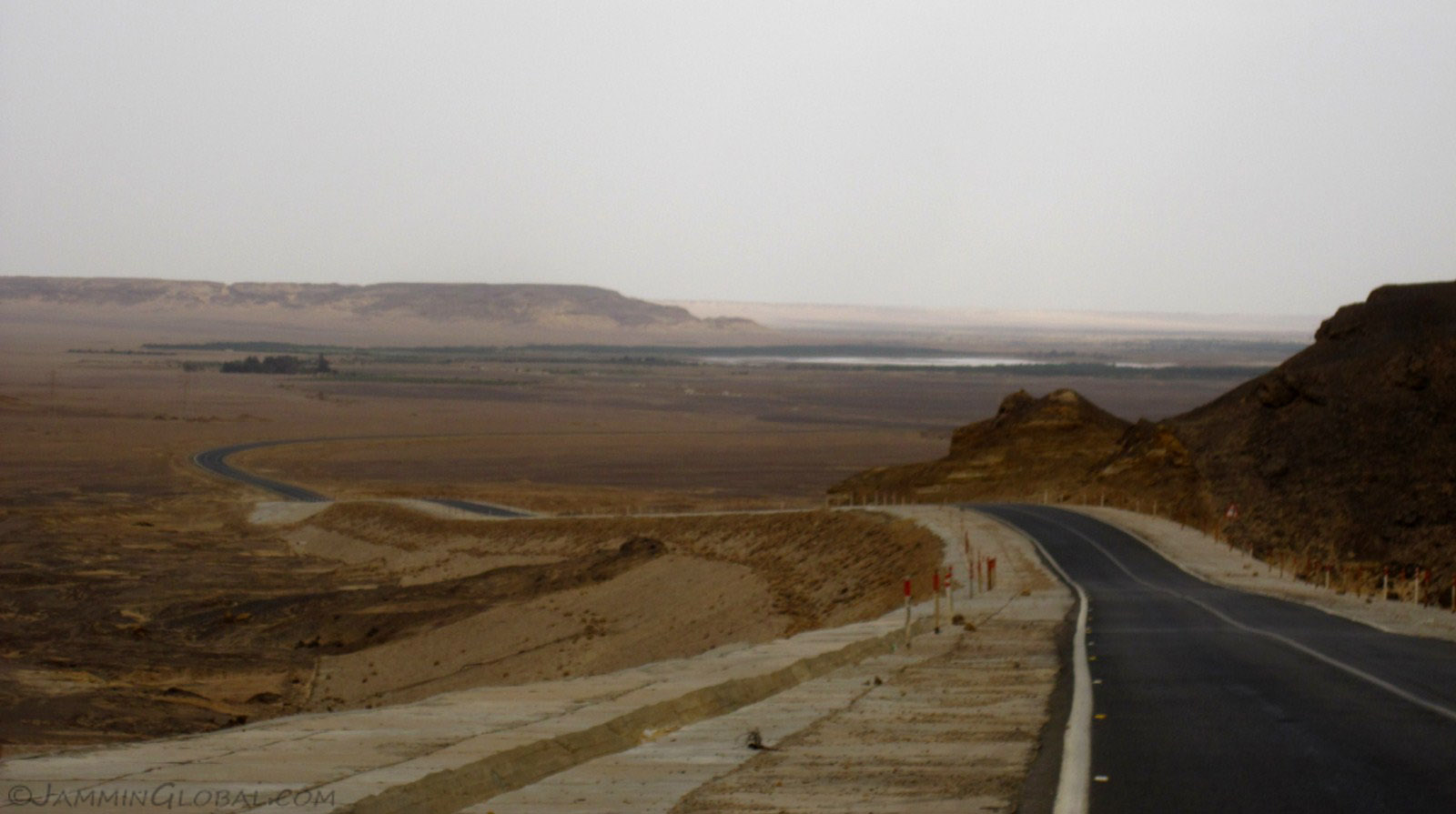
Climbing up and down big reliefs through the Western Desert. It's not all sand dunes in the Sahara. There are definitely vast seas of sand from here to Morocco, but there are also huge rocky mountains and plateaus, as well.
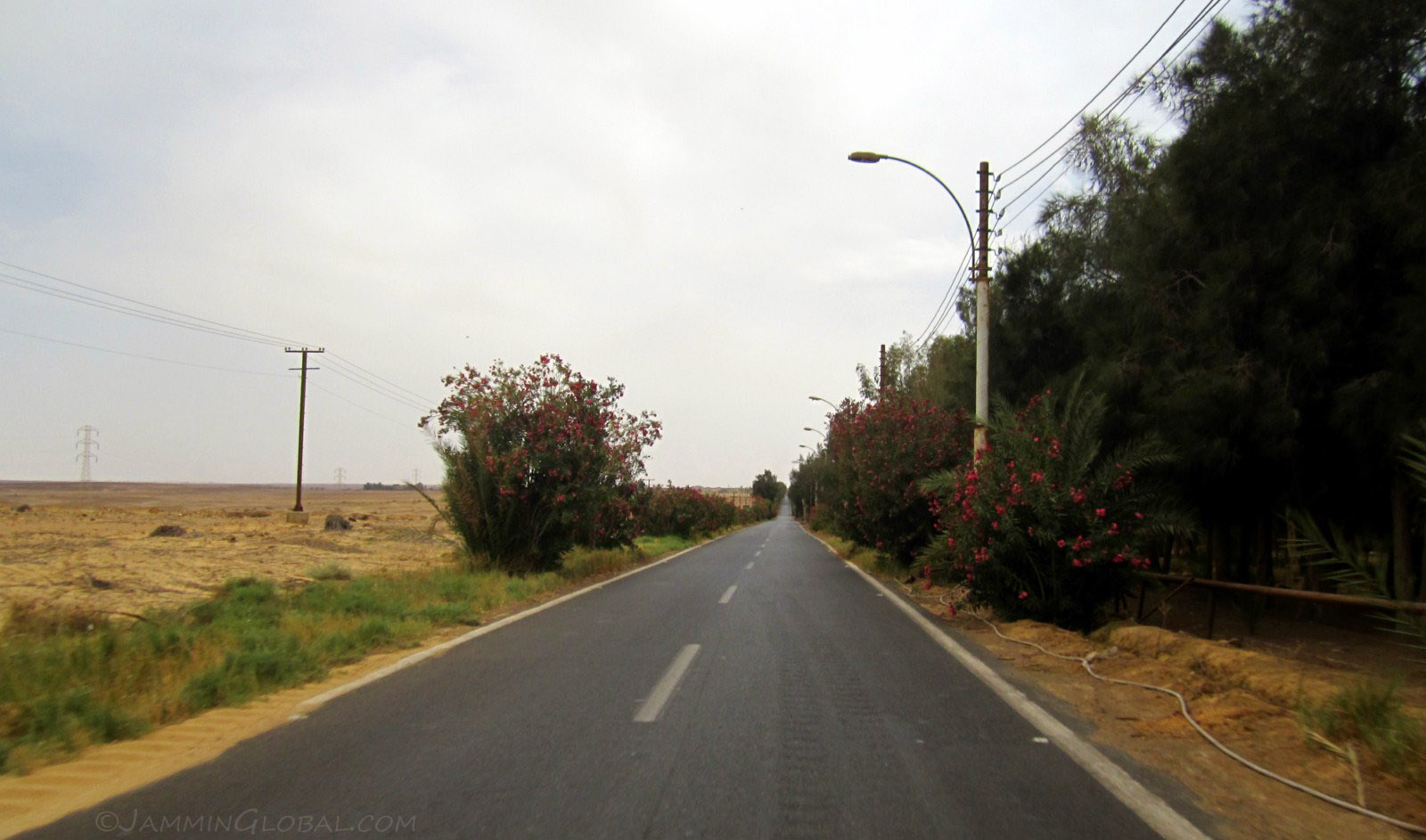
After not seeing any vegetation for hundreds of kilometers, this first sighting of green was a welcome relief. I had arrived in the oasis town of Bahariya.
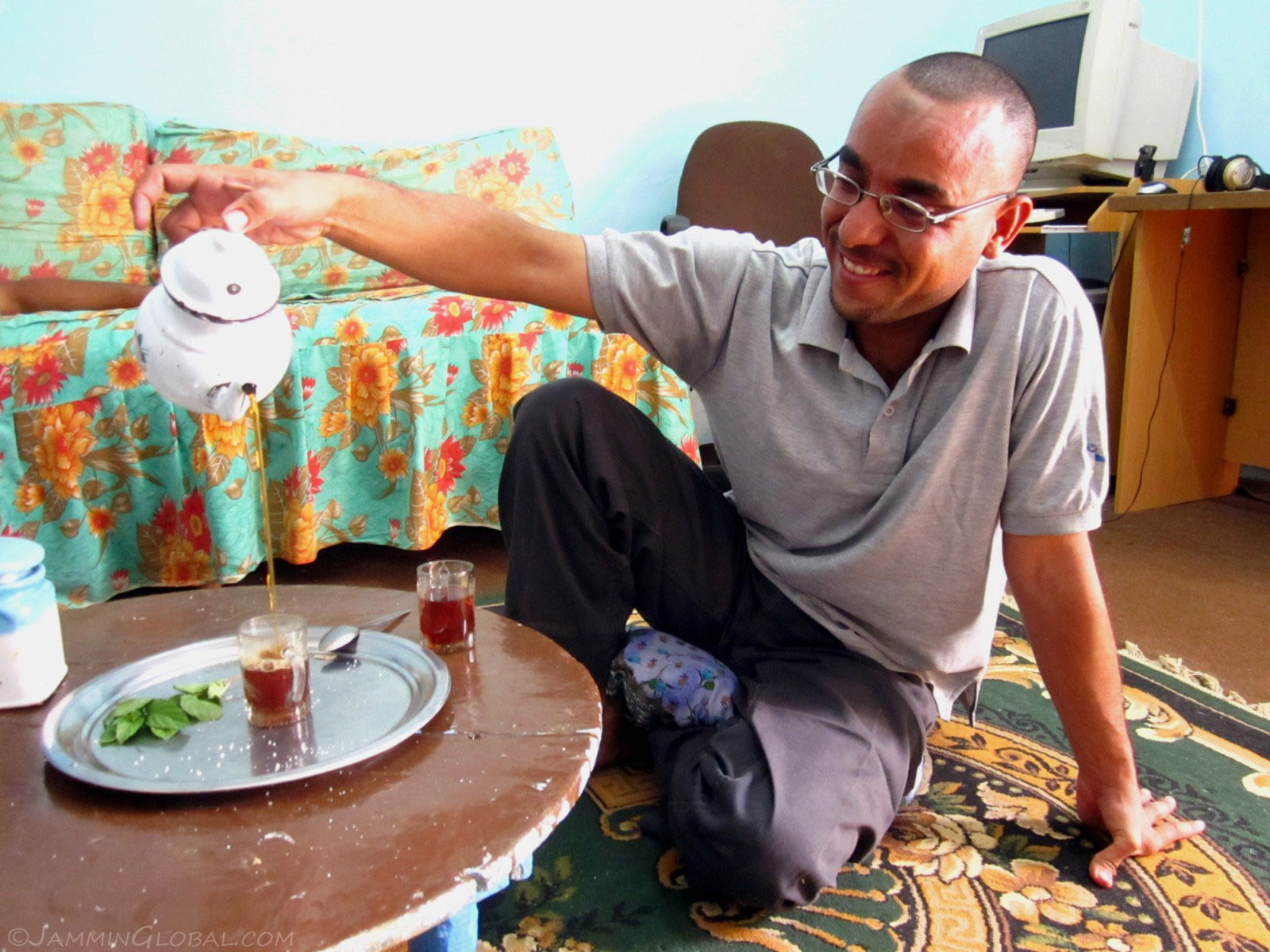
Hamada preparing some Bedouin Mint Tea. I contacted Hamada through CouchSurfing and he welcomed me into his home. I was quite lucky as he had just activated his account and I was his first guest through this network. He's a professional tour guide leading tourists on desert safaris. He comes from a Bedouin family, but they've now settled in the town of Bahariya, a common trend among many nomadic peoples in the Middle East.
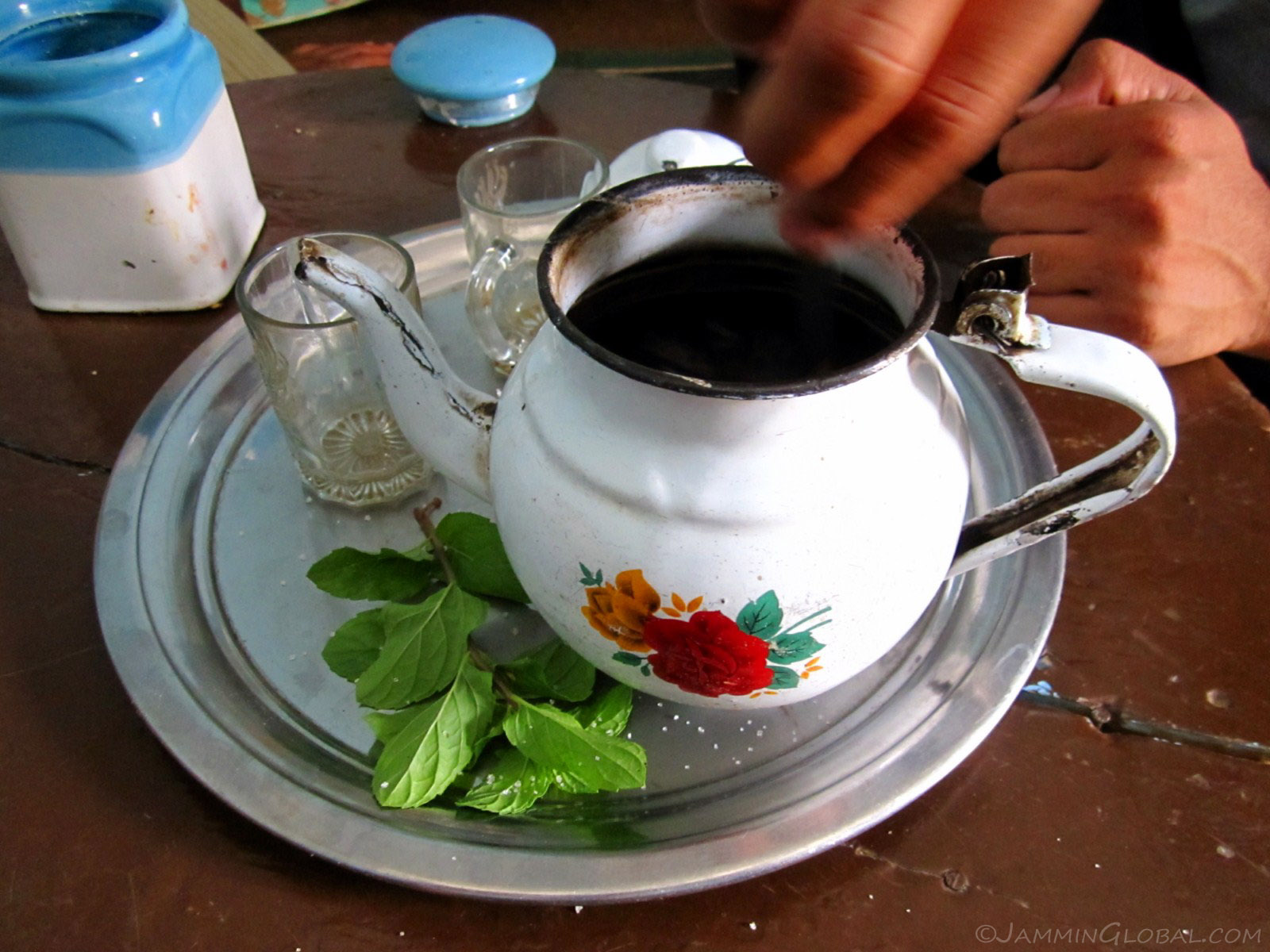
The Juice of the Desert: Bedouin Mint Tea. This drink flows freely all through the desert and is prepared with regular tea leaves, fresh mint leaves and copious amounts of sugar. My Indian heritage has blessed me with a sweet tooth to enjoy the two heaped spoons of sugar that go with every small cup of tea here. I soon realized that this is how the locals stay hydrated as the tea helps your body absorb more water than just drinking it plain.
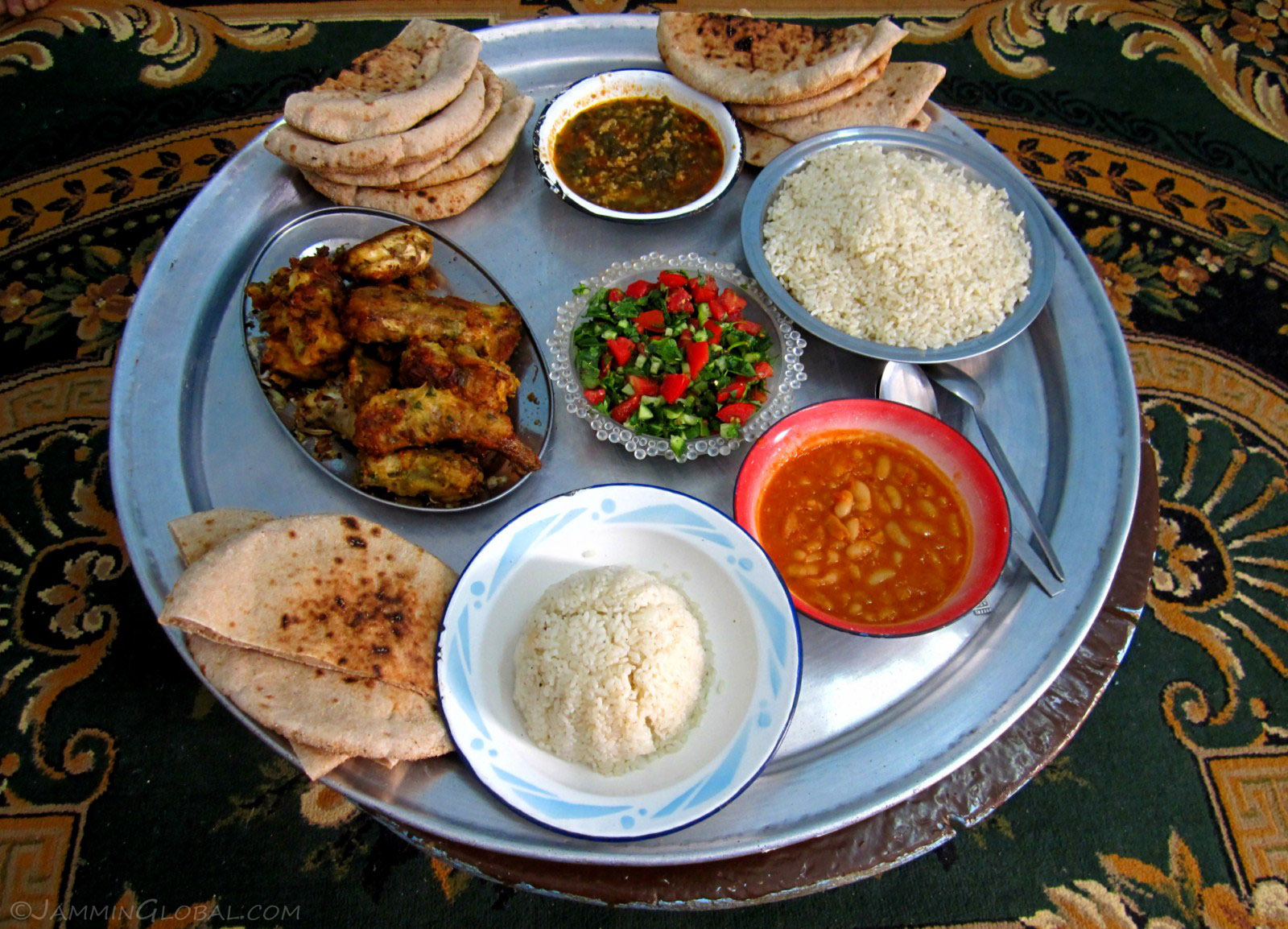
Before the tea, Hamada's mother prepared a fantastic lunch. There was fried fish, beans, a veggie dish and fresh tomato and pepper salad with lots of rice and lafa, Egyptian flat bread. There are no individual plates as the Bedouin habit of communal eating is still strong, which I really enjoyed. It breeds a sense of trust and creates strong bonds.
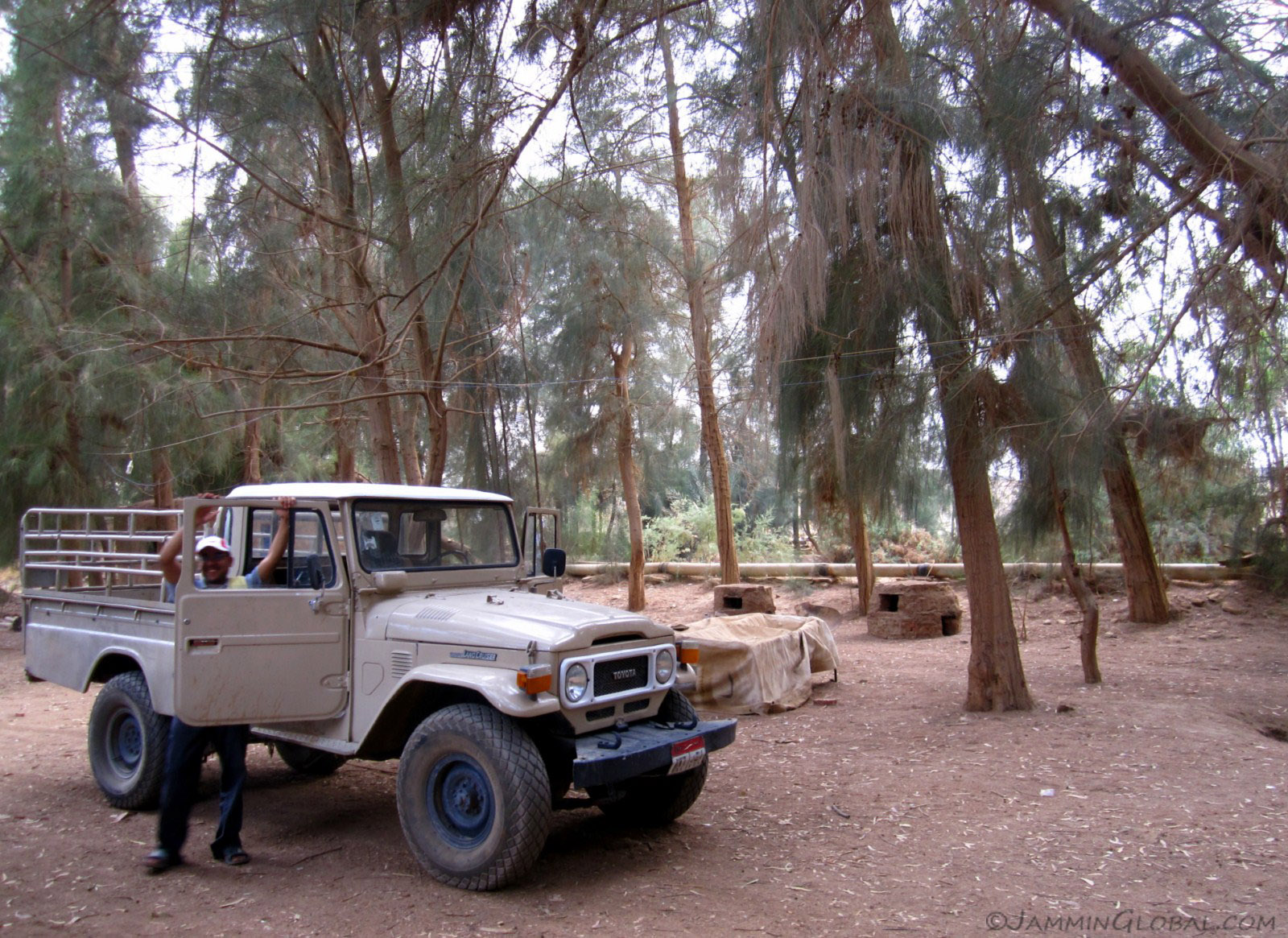
After a short nap through the hottest part of the day, Hamada and his friend, Taheer, took me for a tour around the oasis.
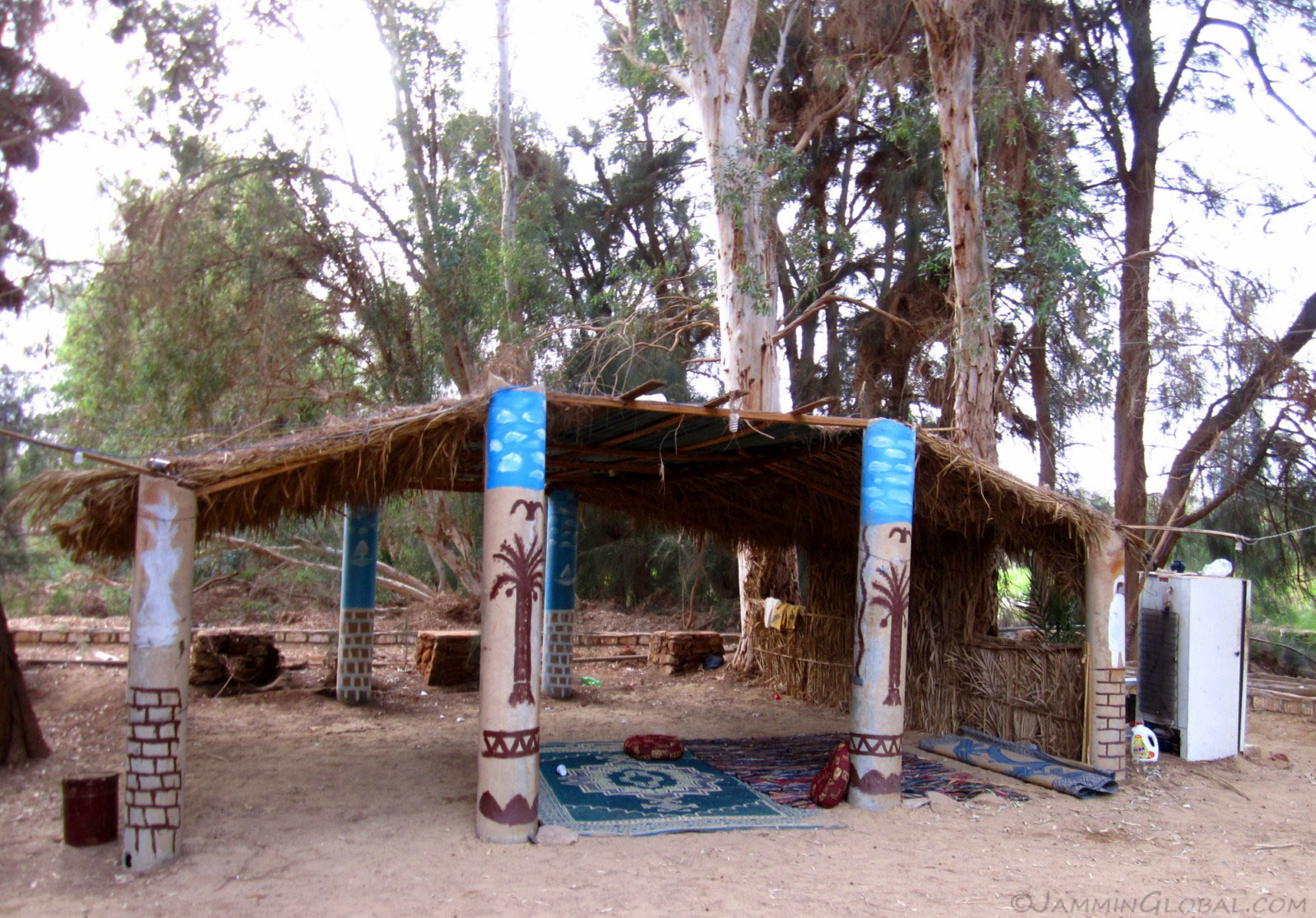
We stopped at this spring where tall pines trees were growing.
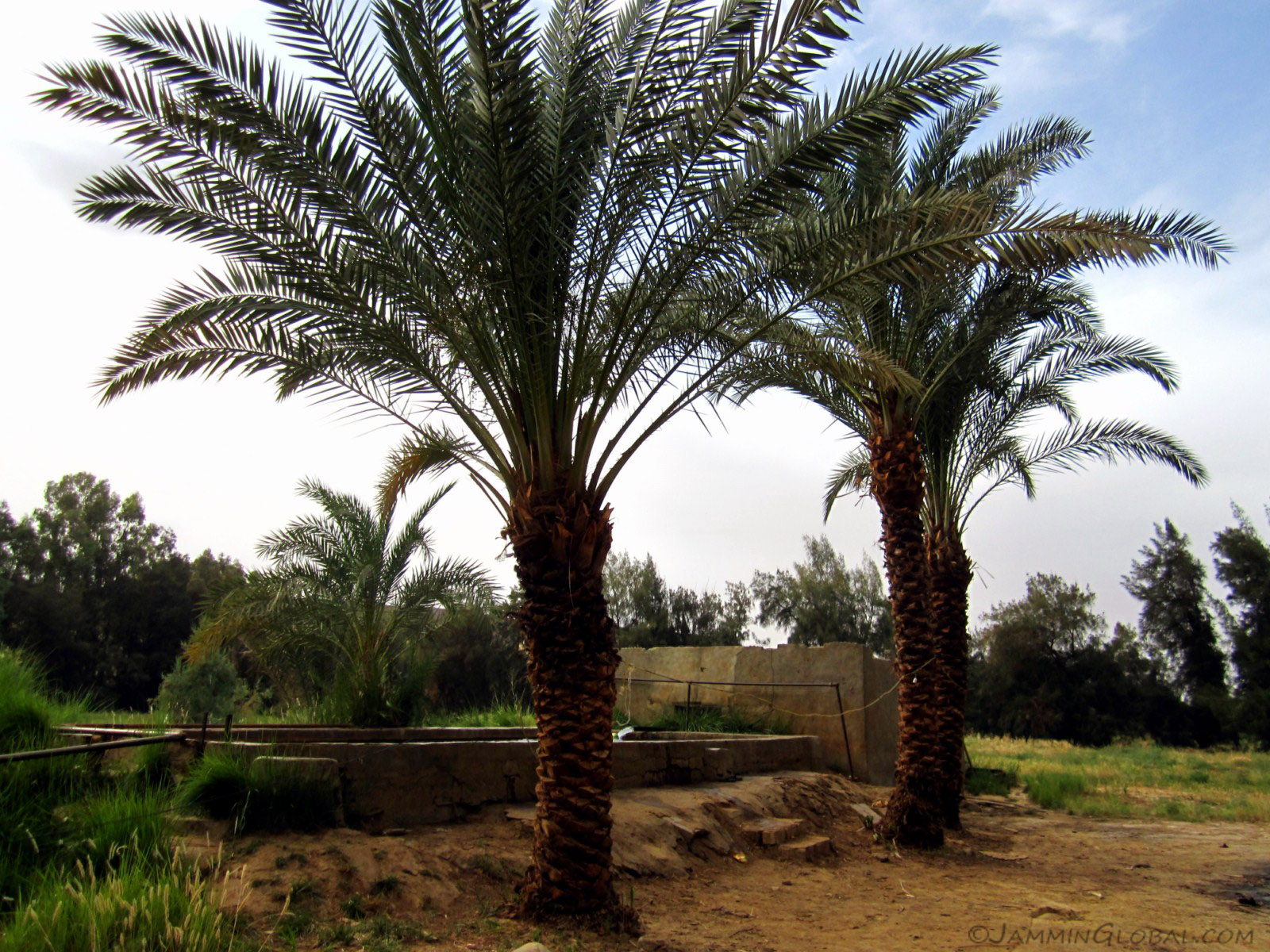
There was a tank built around the spring, which was feeding water to the nearby area.
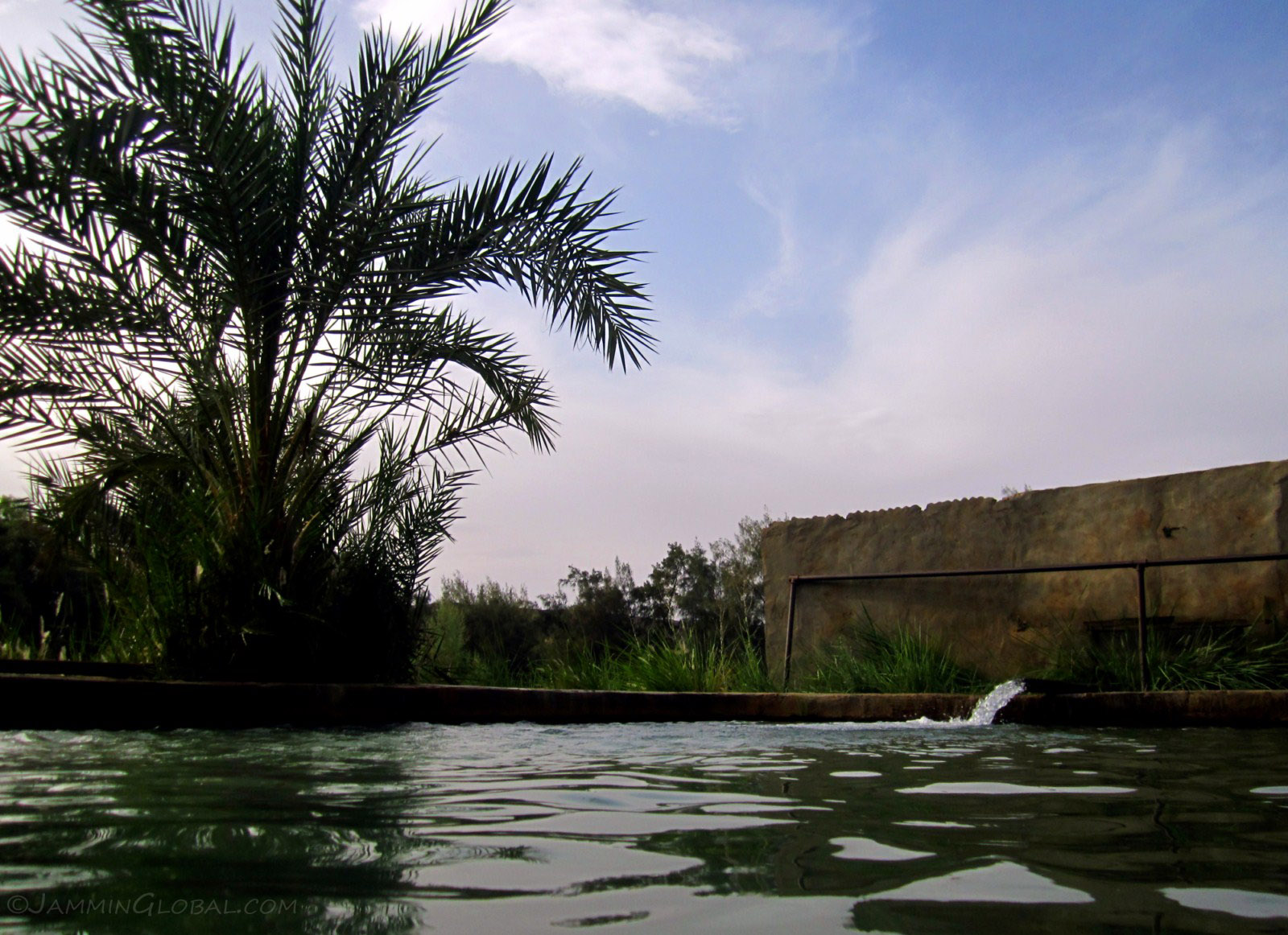
It looked really inviting...
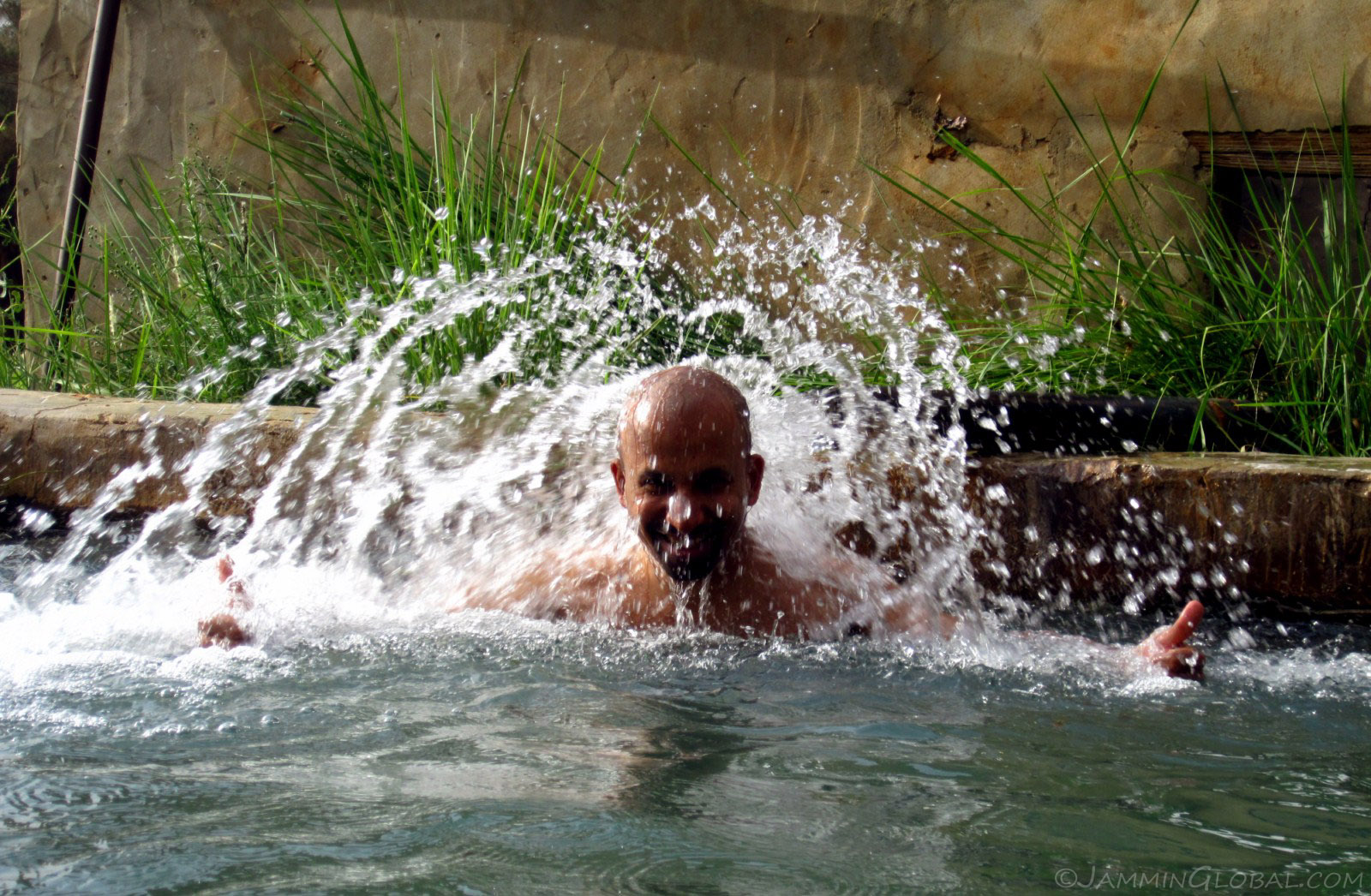
...and we jumped in to cool off with the fresh water flowing from aquifers deep underground. The force of the water gave me an excellent massage.
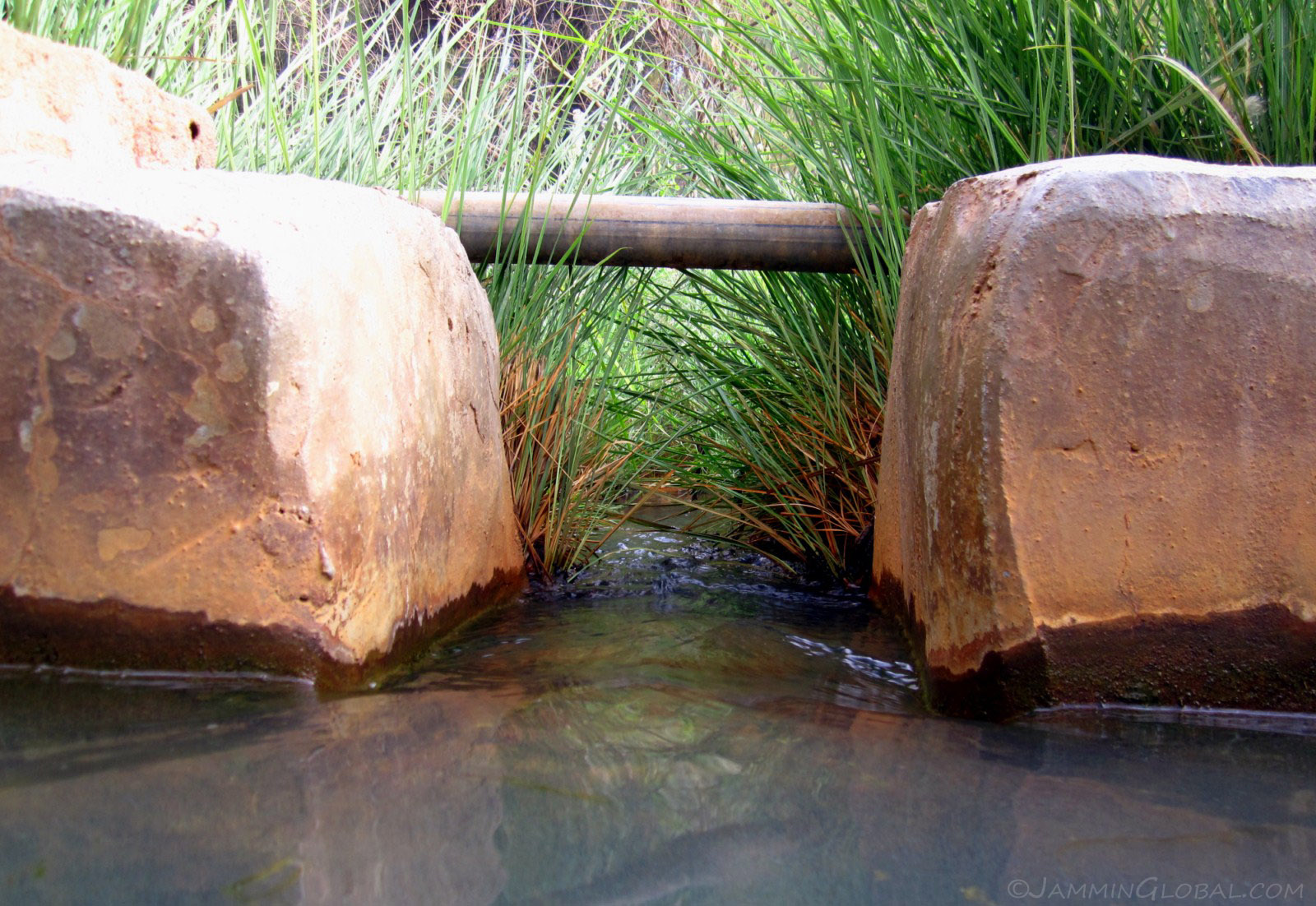
The exit from the tank flowing out to irrigate the land. Where does all this fresh water come from? Surprisingly, deep under the parched surface of the Sahara lies a vast quantity of ground water in aquifers. Most of this is fossil water, meaning that it got there millions of years ago and is not being recharged by rain water, so it is a non-renewable resource, like oil. At Bahariya, some of its water is recharged by rains but the rate of extraction is exceeding the rate of replenishment making for an unsustainable future.
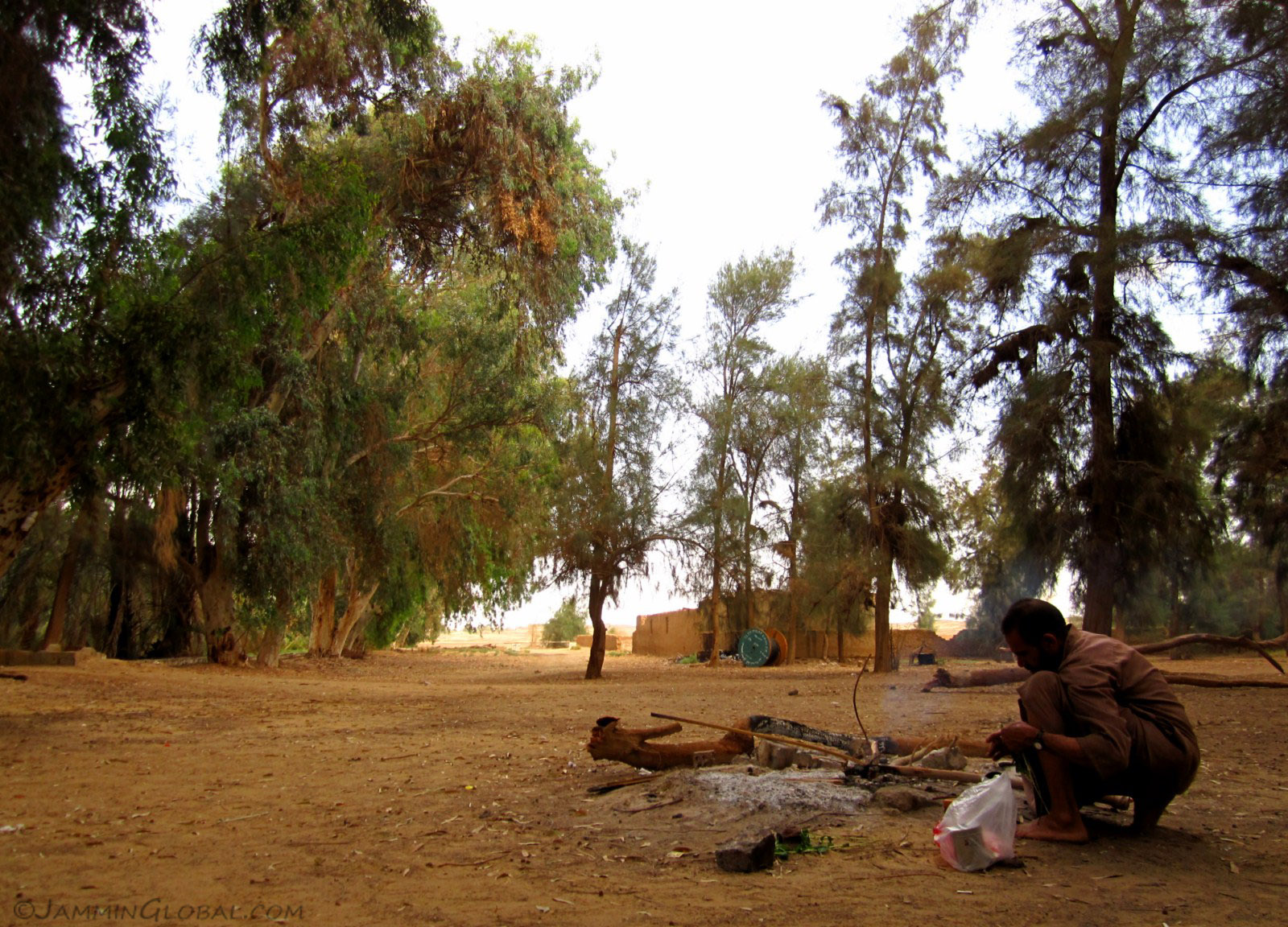
After an enjoyable swim, a small fire was prepared for...
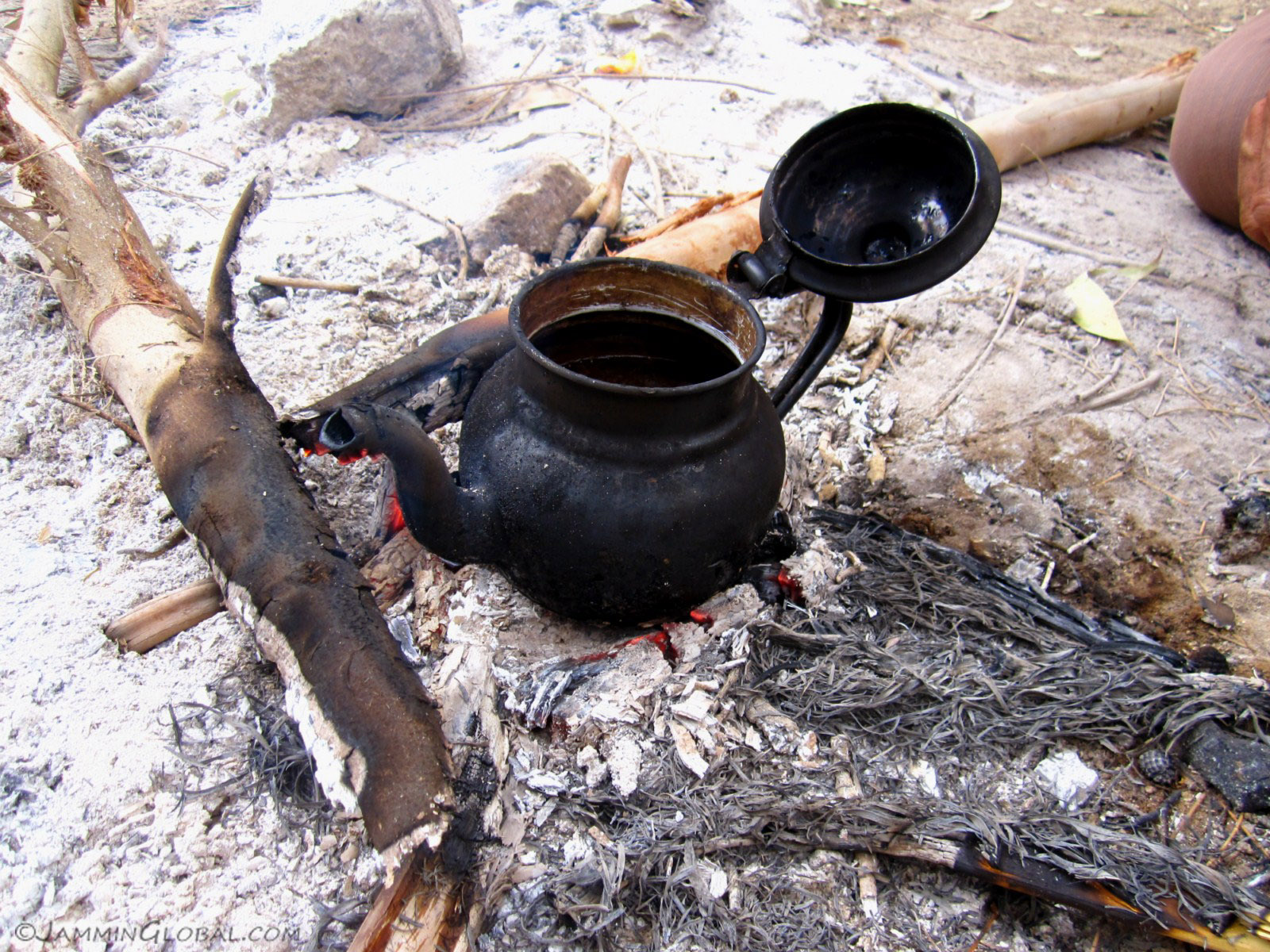
...a pot of tea that looked well used on open fires.
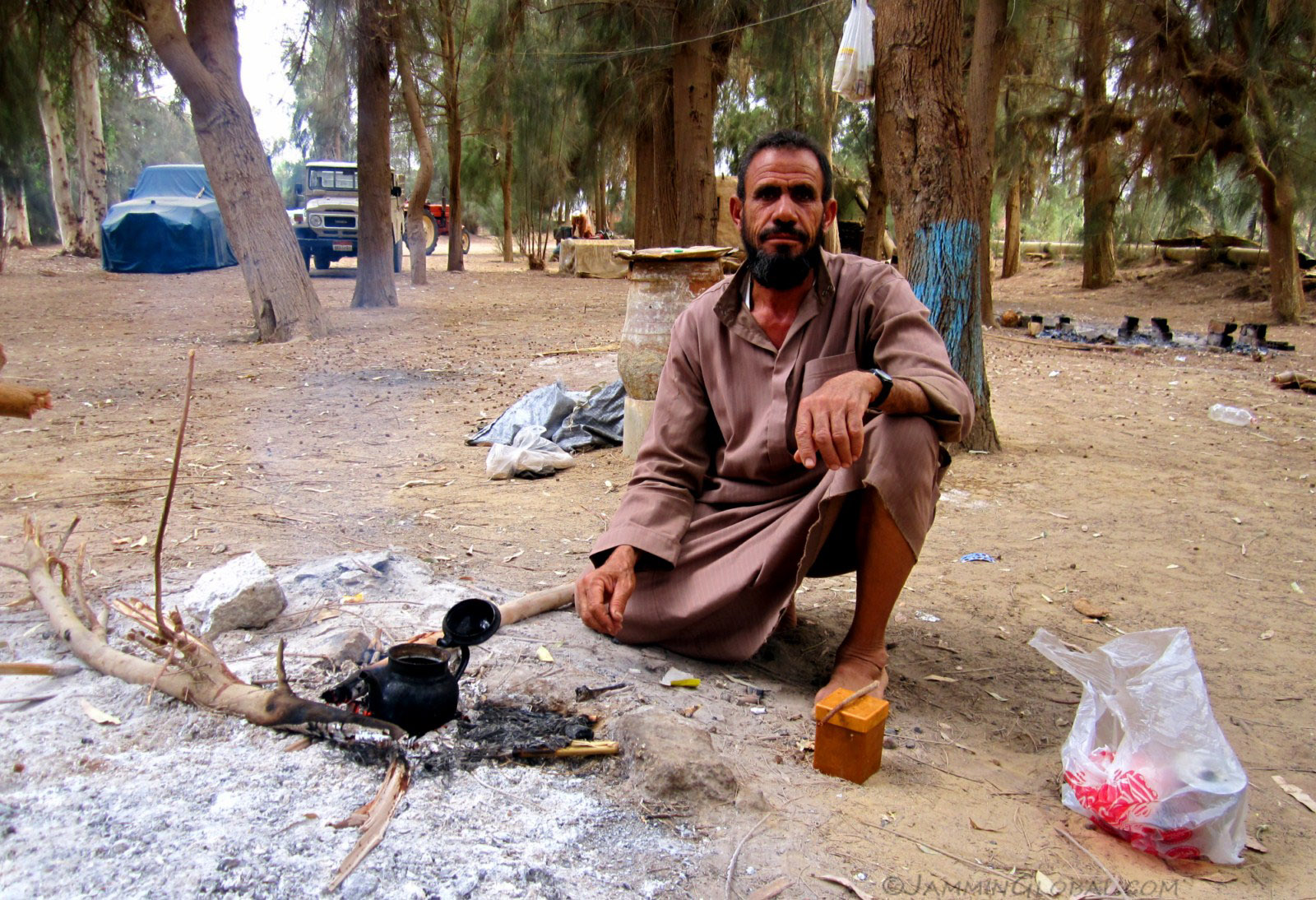
Hamada's friend who was running this spring looked like a proper Bedouin just settled after years of roaming the desert.
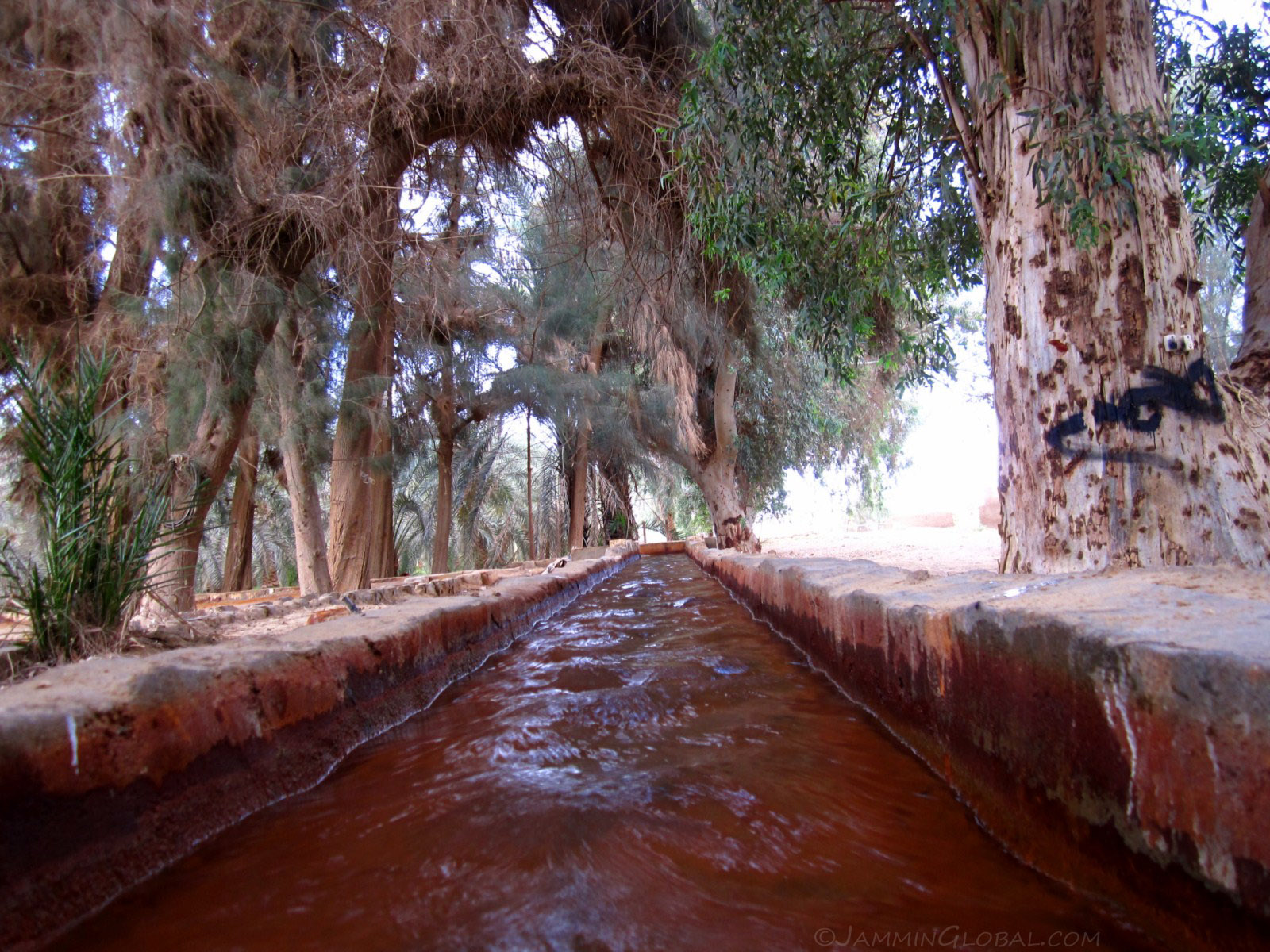
A moss and sediment-lined canal flowing through the spring, nourishing the giant trees.
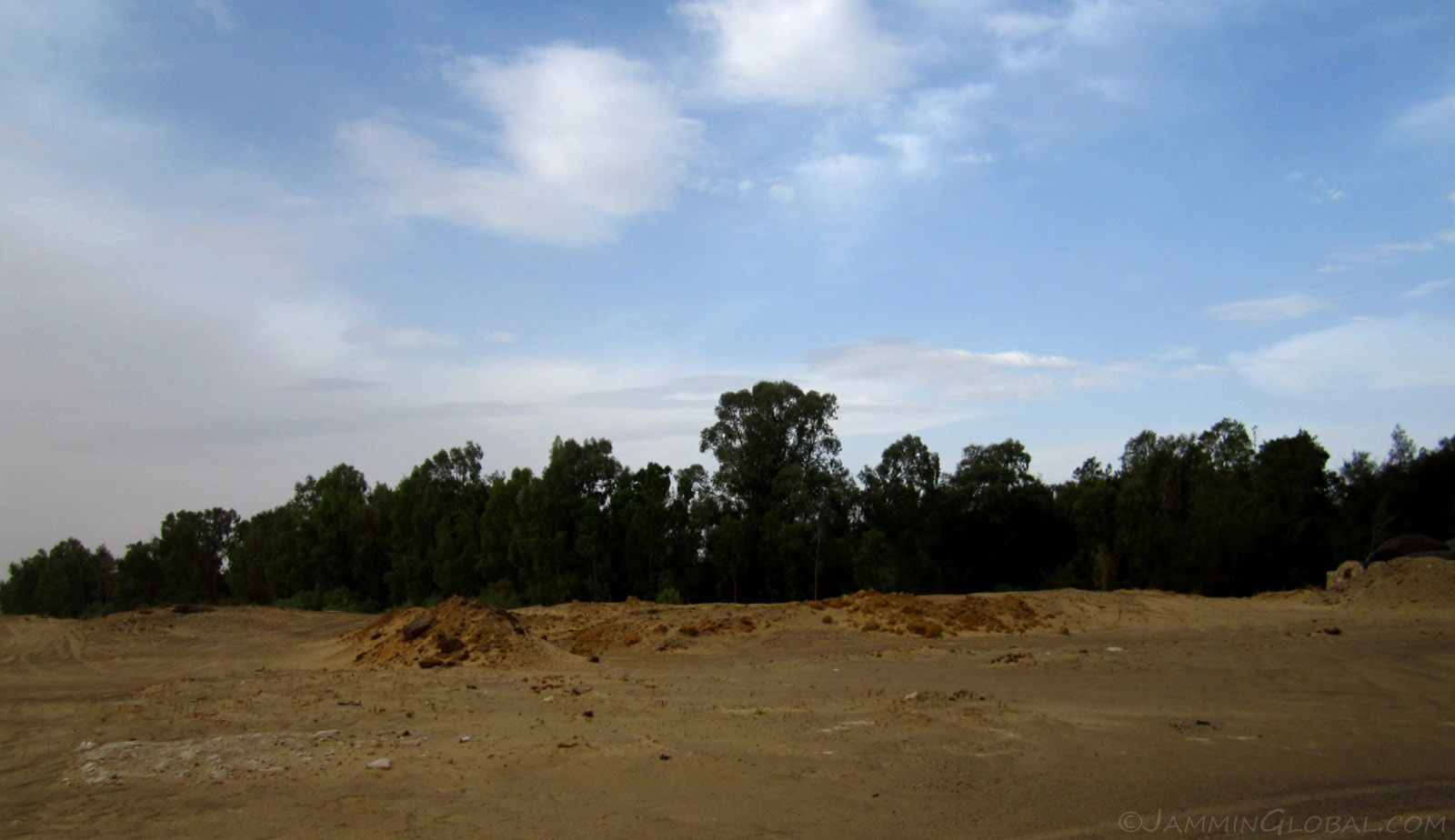
Right outside the spring was the desert, where the greenery stopped. Out of reach from water and life quickly becomes constrained.
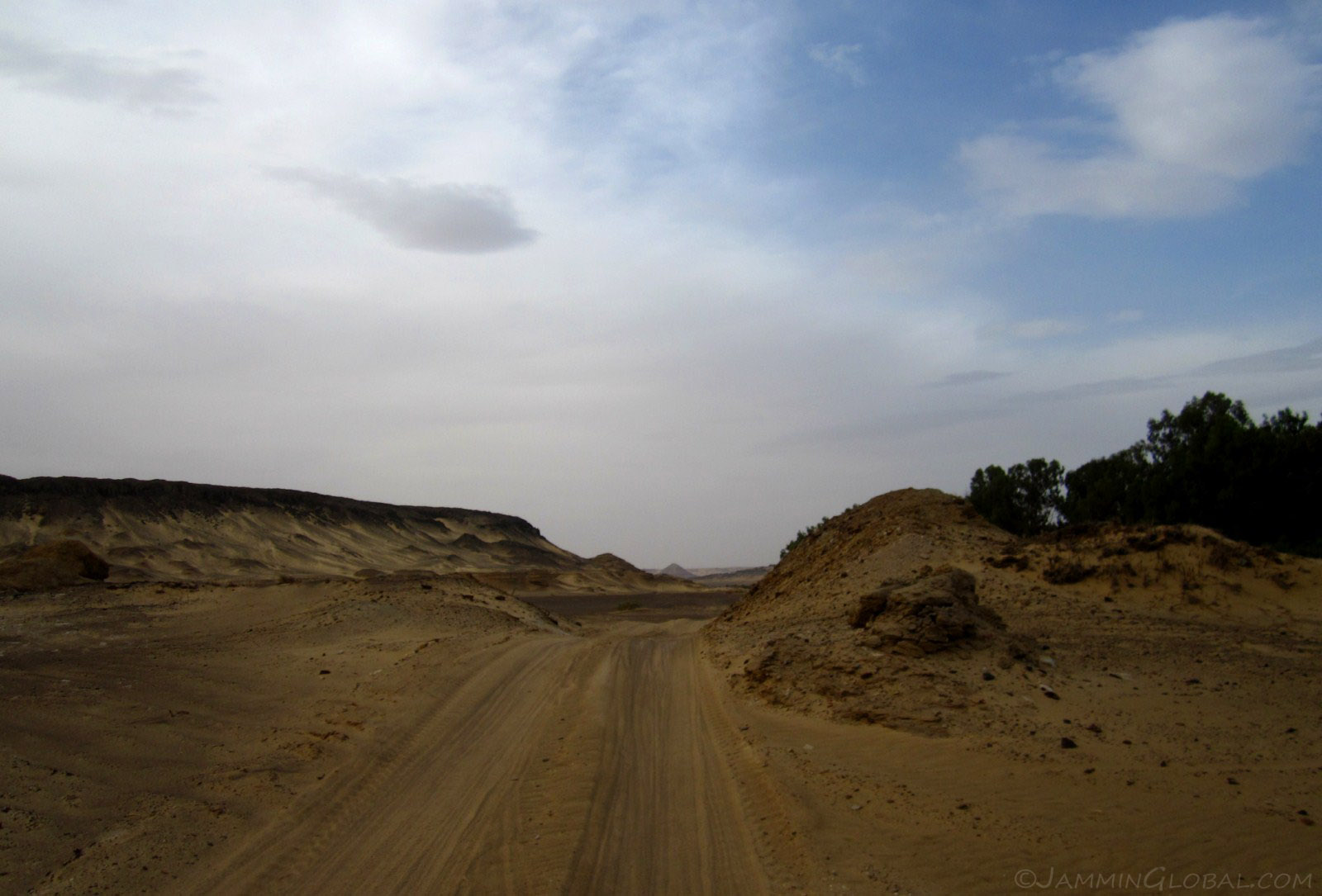
We headed out on a route through a sandy valley.
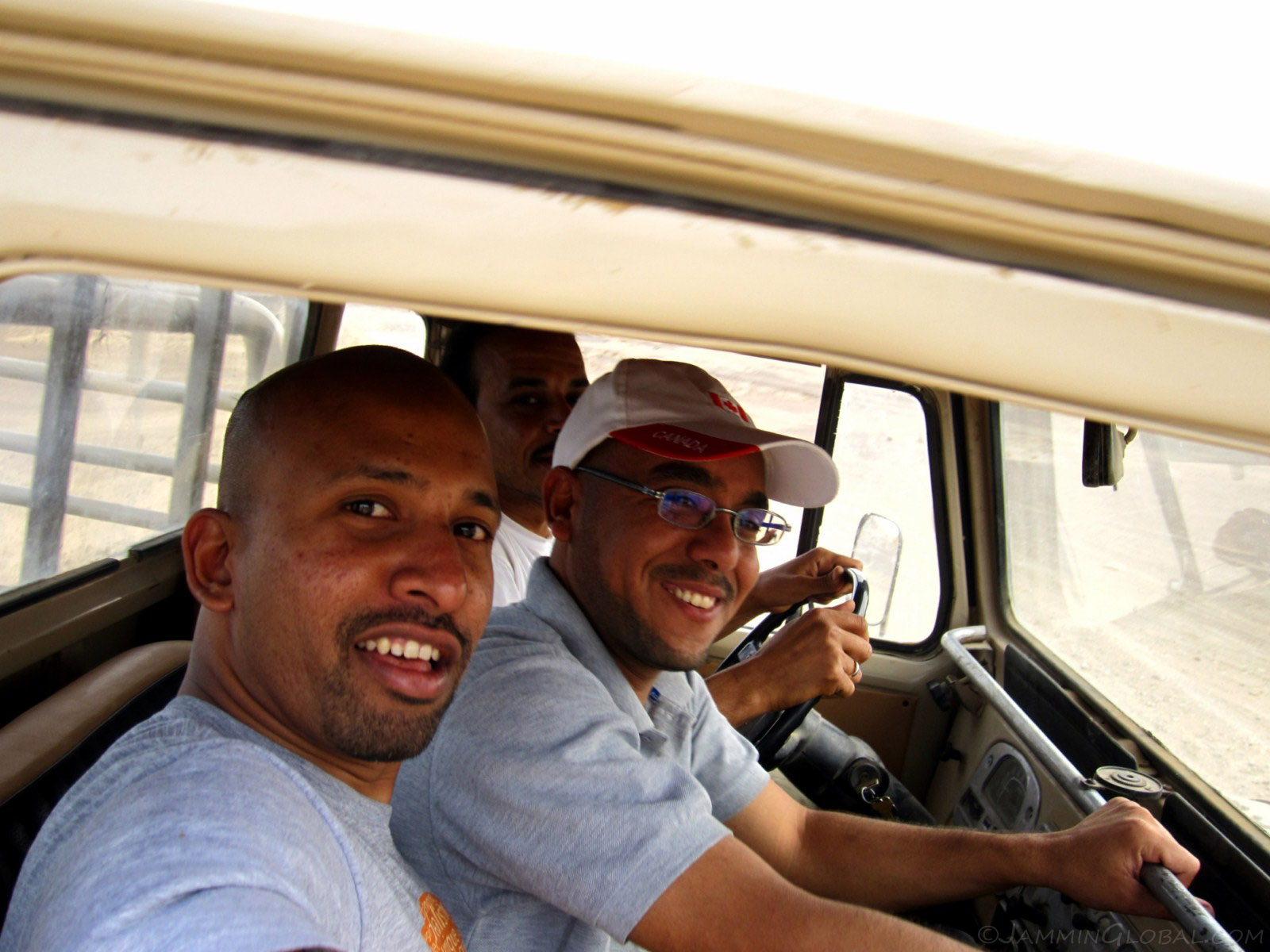
Taheer driving us in a trusty old Toyota Land Cruiser.
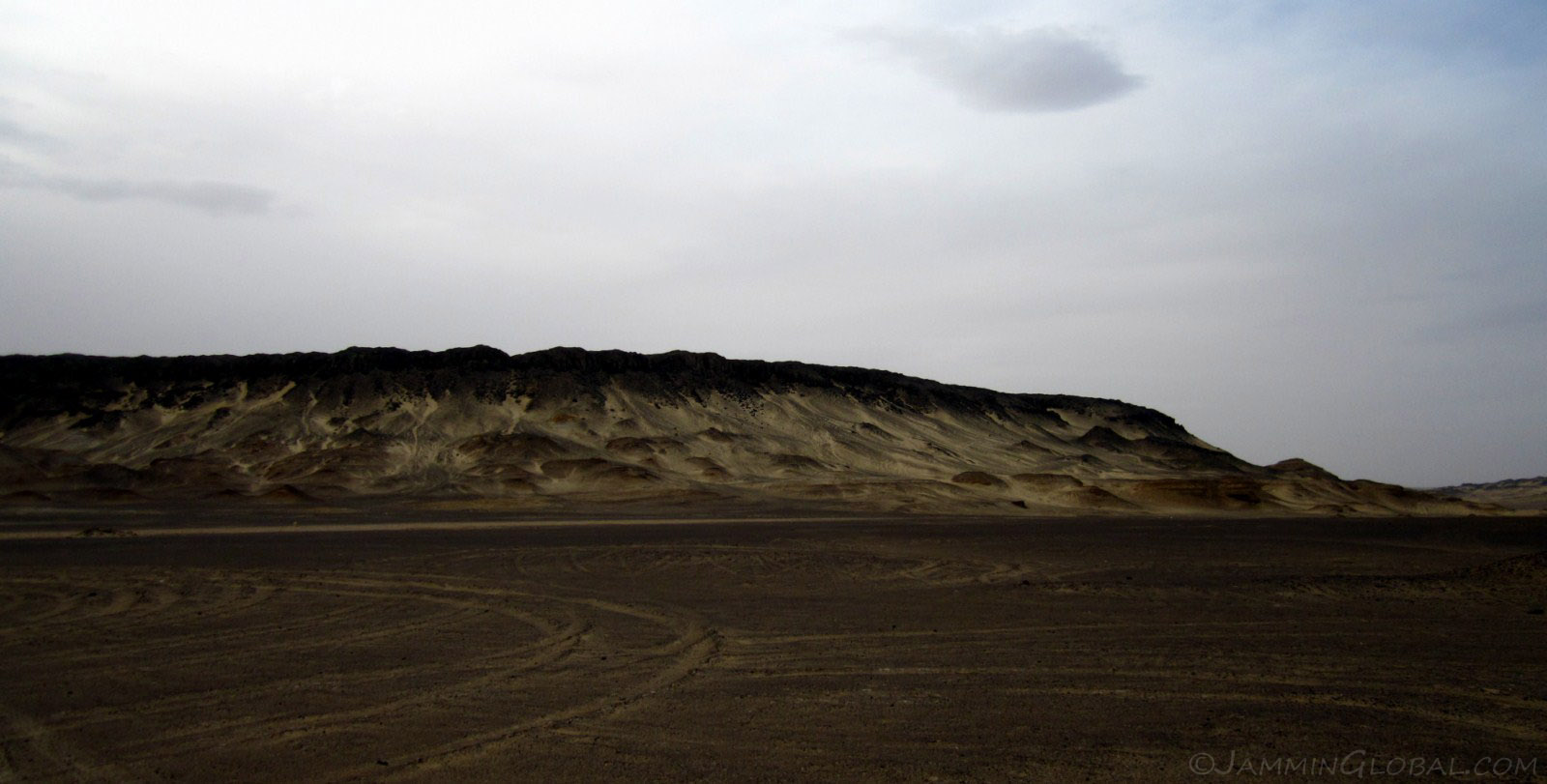
Passing by the English Mountains, which were capped in black rock. They got their name as this is where the British were perched looking for invaders from Libya during World War I.
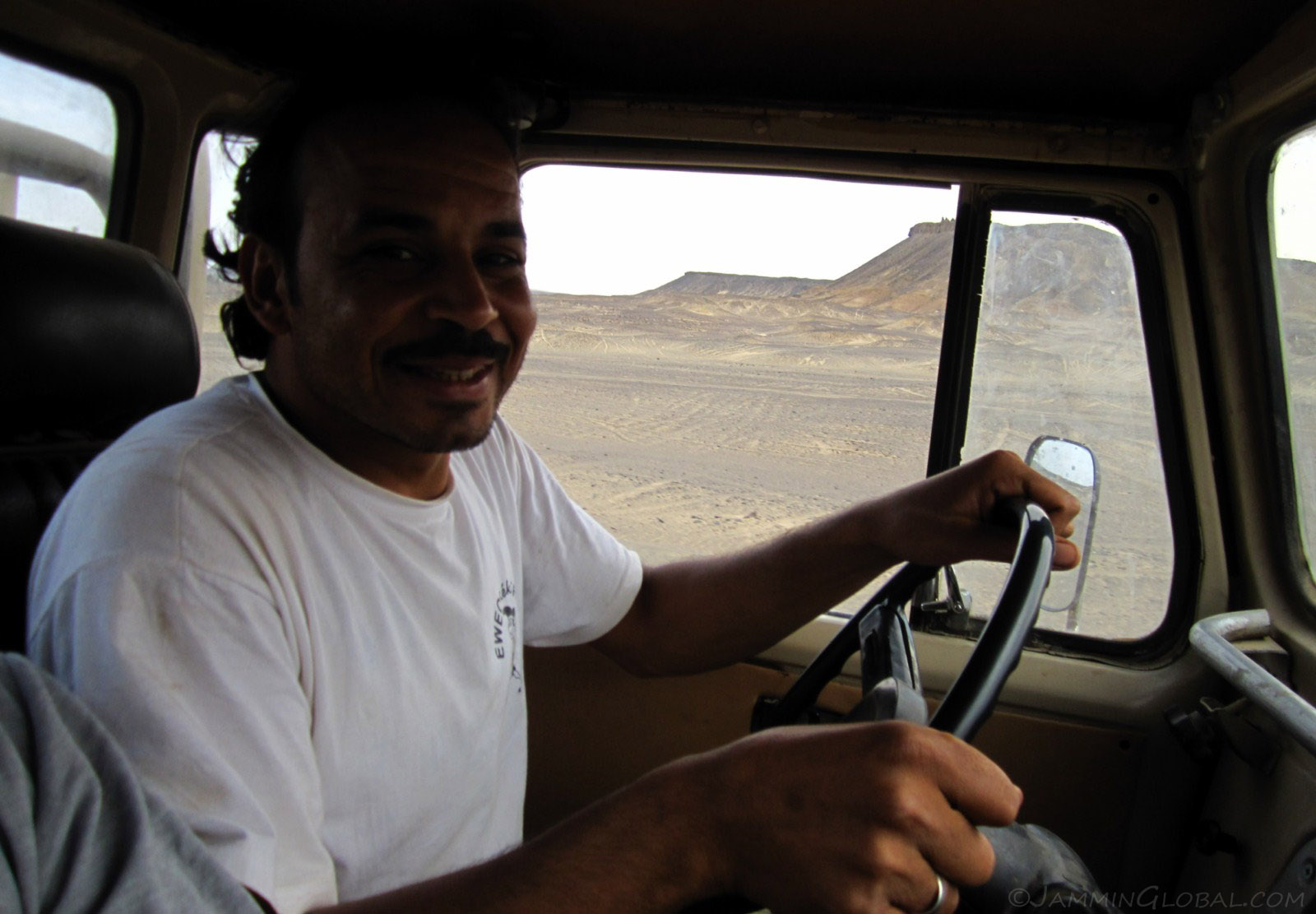
Taheer was a warm and friendly soul with heaps of experience of desert driving.
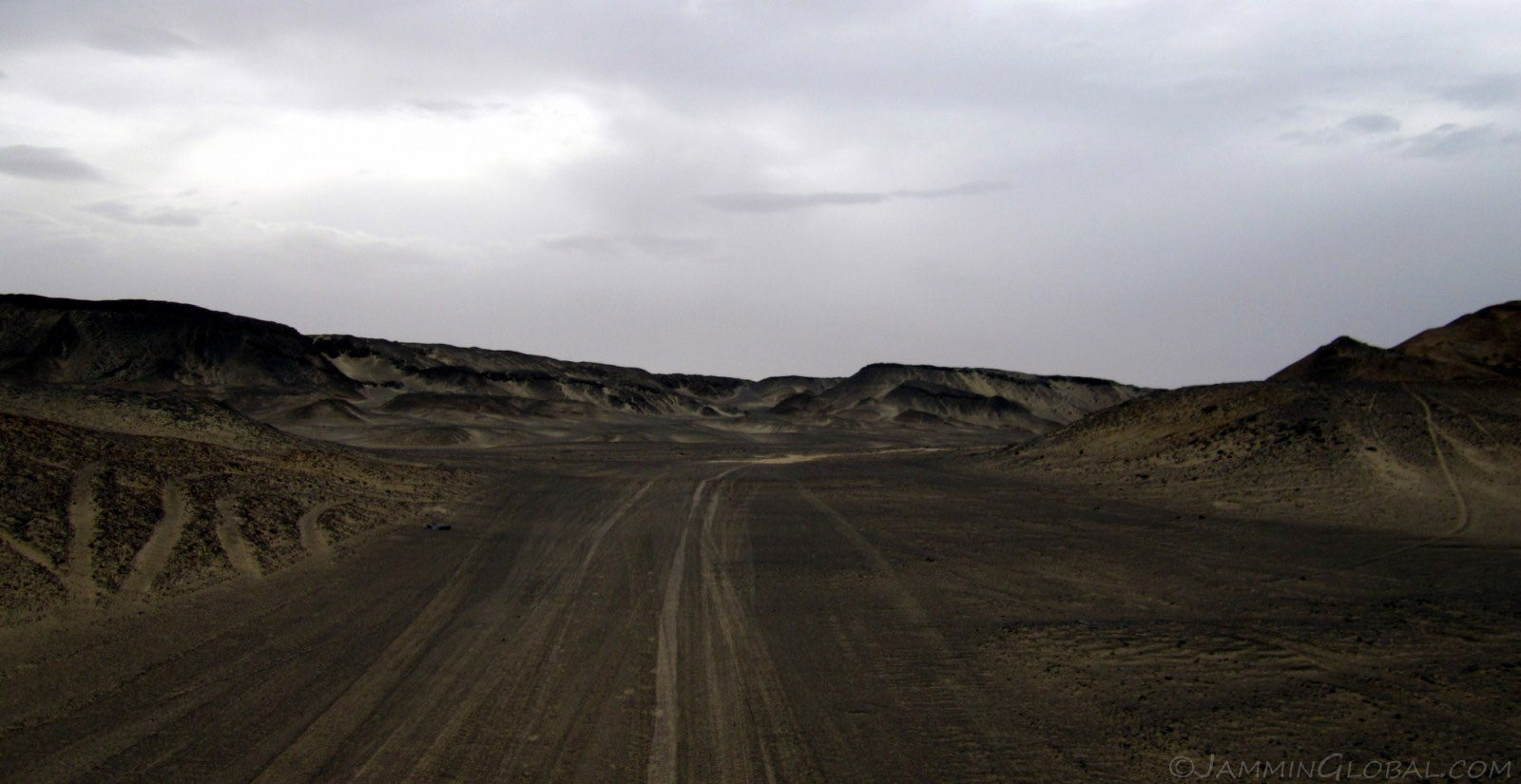
The landscape looked quite alien, even moon-like. This area is the southern end of the Black Desert, which a few kilometers to the north of here is dotted with volcanoes covered in the same black rocks.
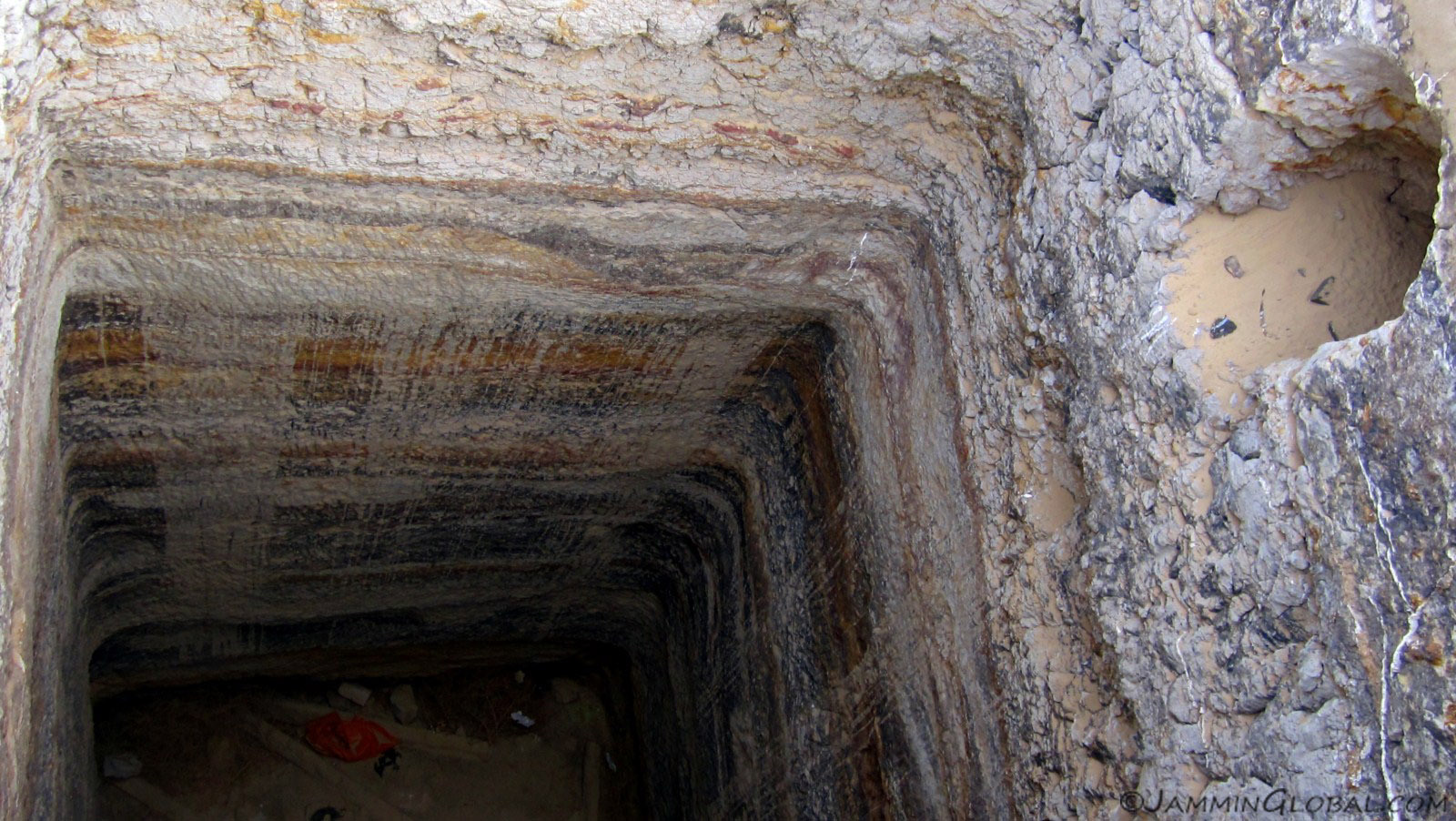
We stopped at a well that exposed the geologic past of this area. The distinctive sedimentary layers reveal the changing conditions of this basin as it shifted from wet to dry periods with the most recent drying out of the Sahara beginning only about 6,000 years ago, which coincides with Egyptians concentrating around the Nile and the growth of their famous civilization. Dinosaur fossils have also been found in these sediments, indicating the past richness of fauna and flora.
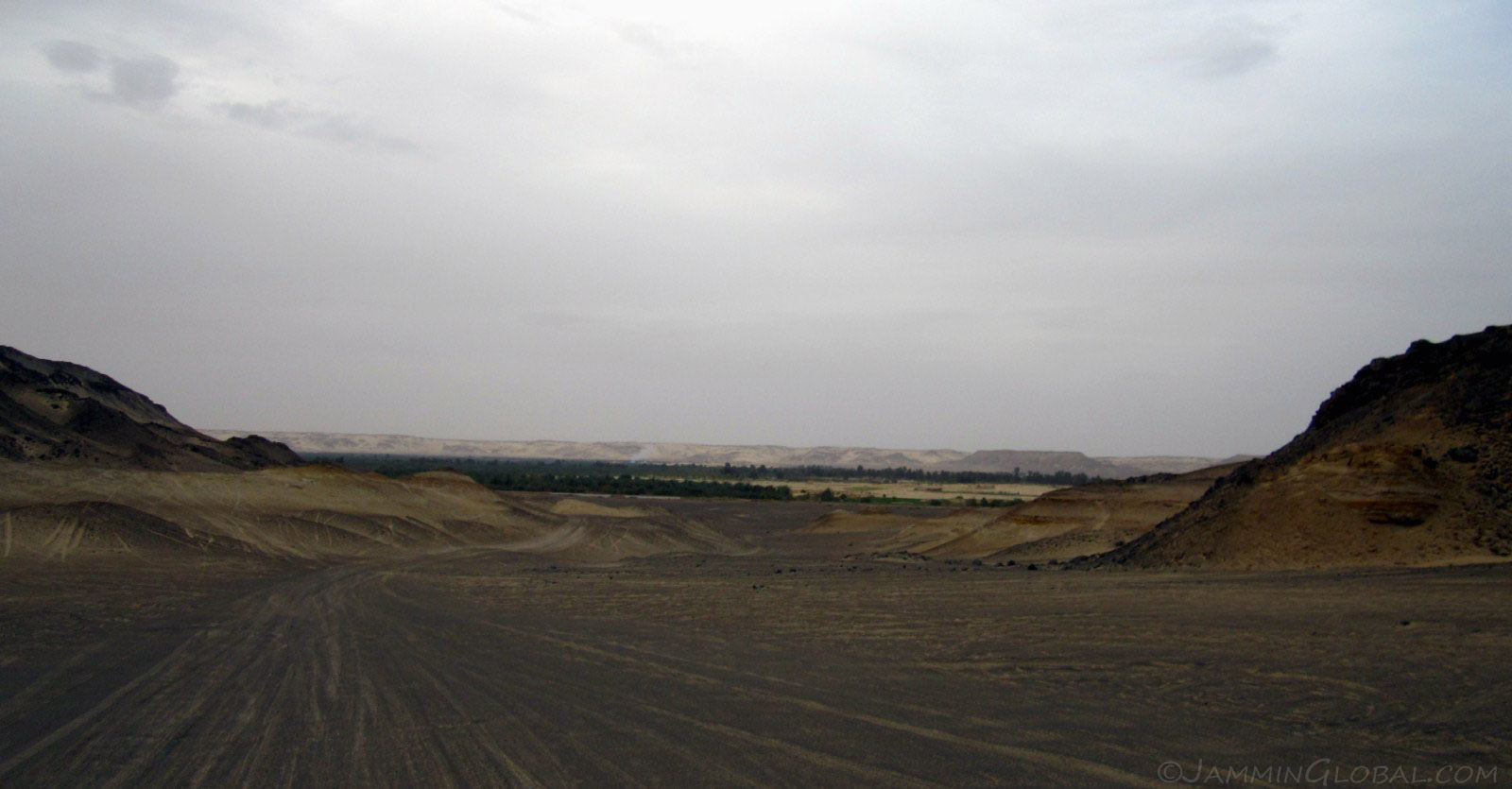
We exited the Black Desert and headed for another oasis.
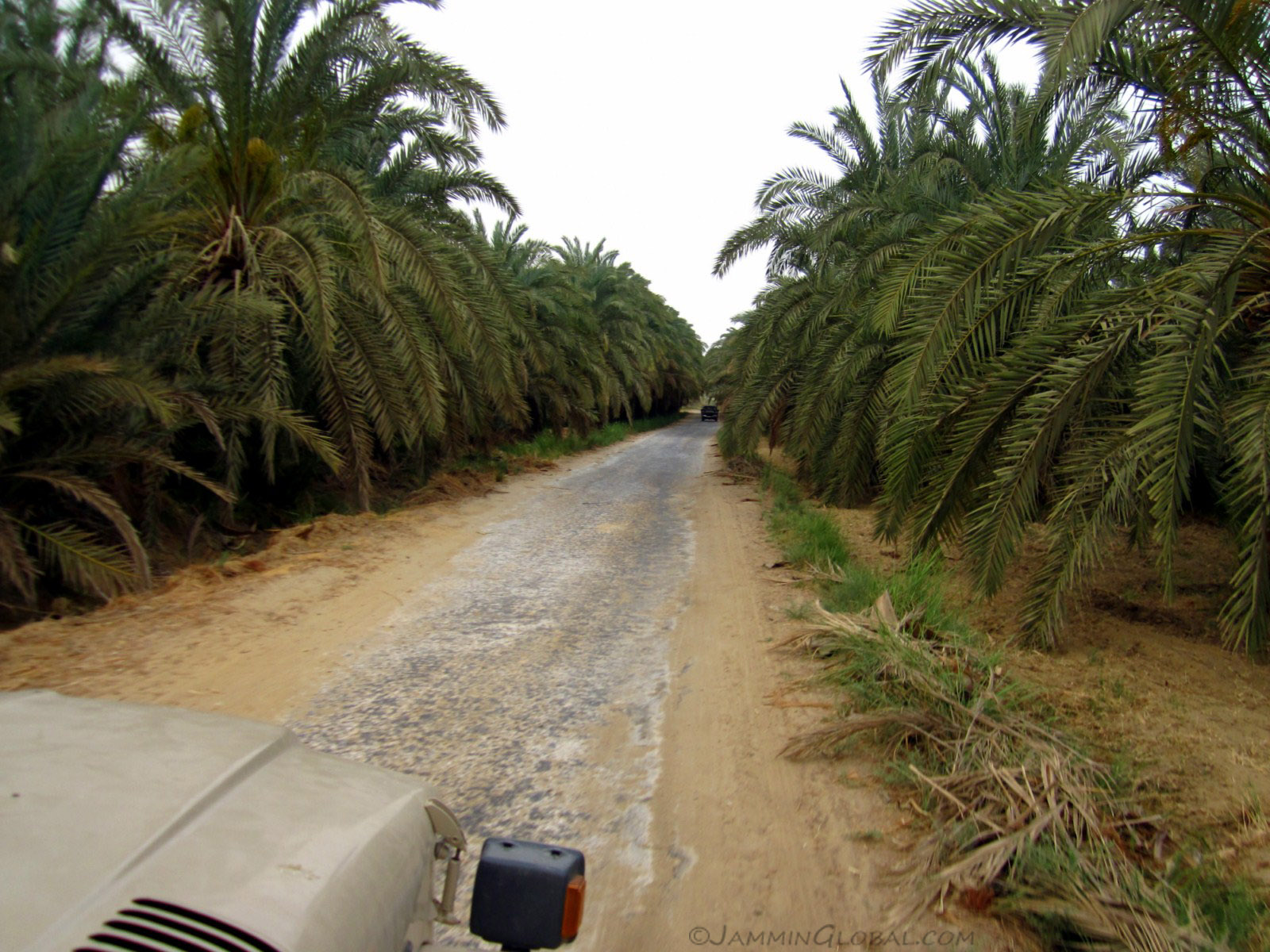
This was just north of Bahariya where most of the region's agriculture takes place. Besides dates and olives, guavas are a cash crop here.
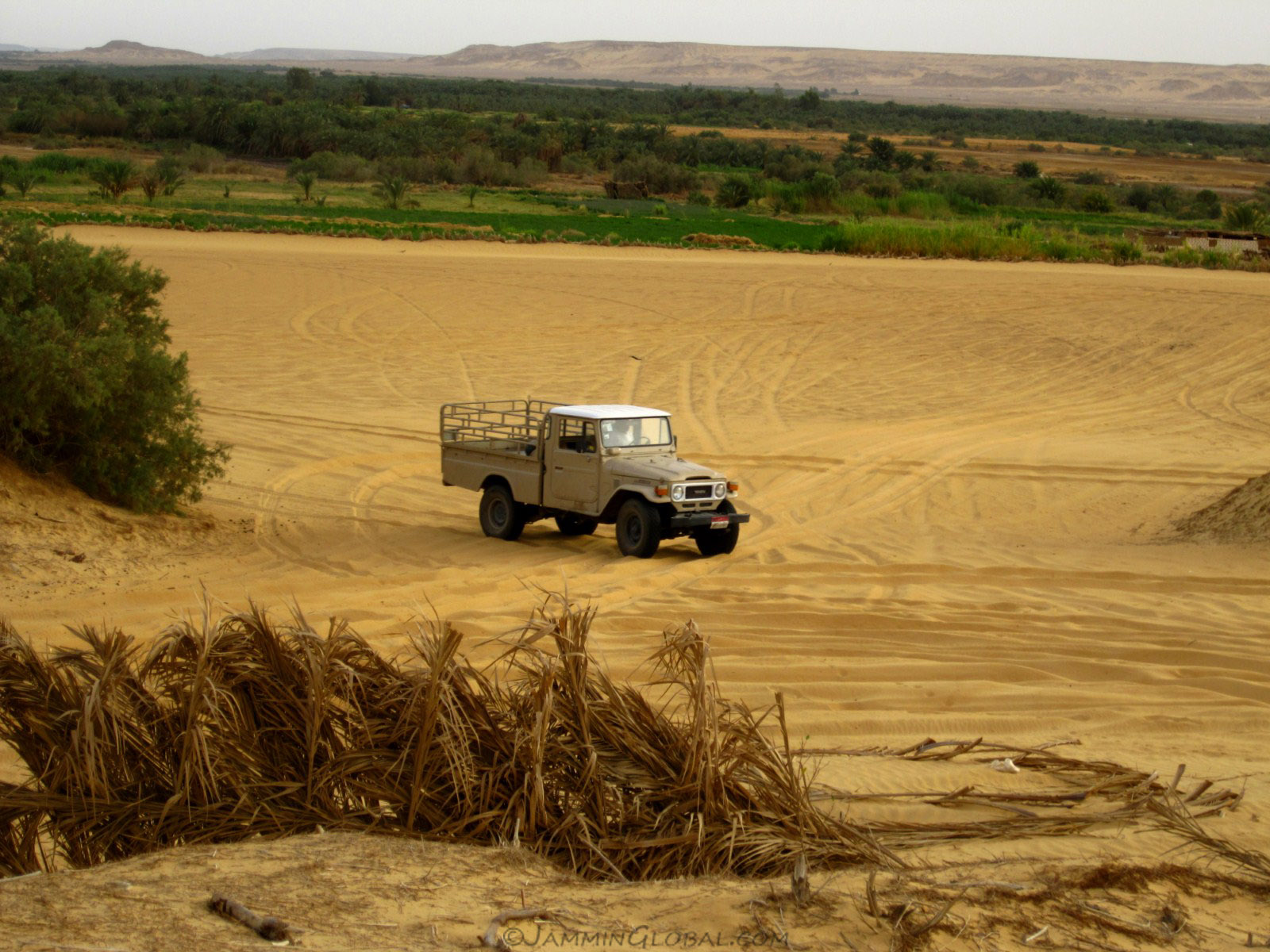
We headed for a small property just beyond the oasis...
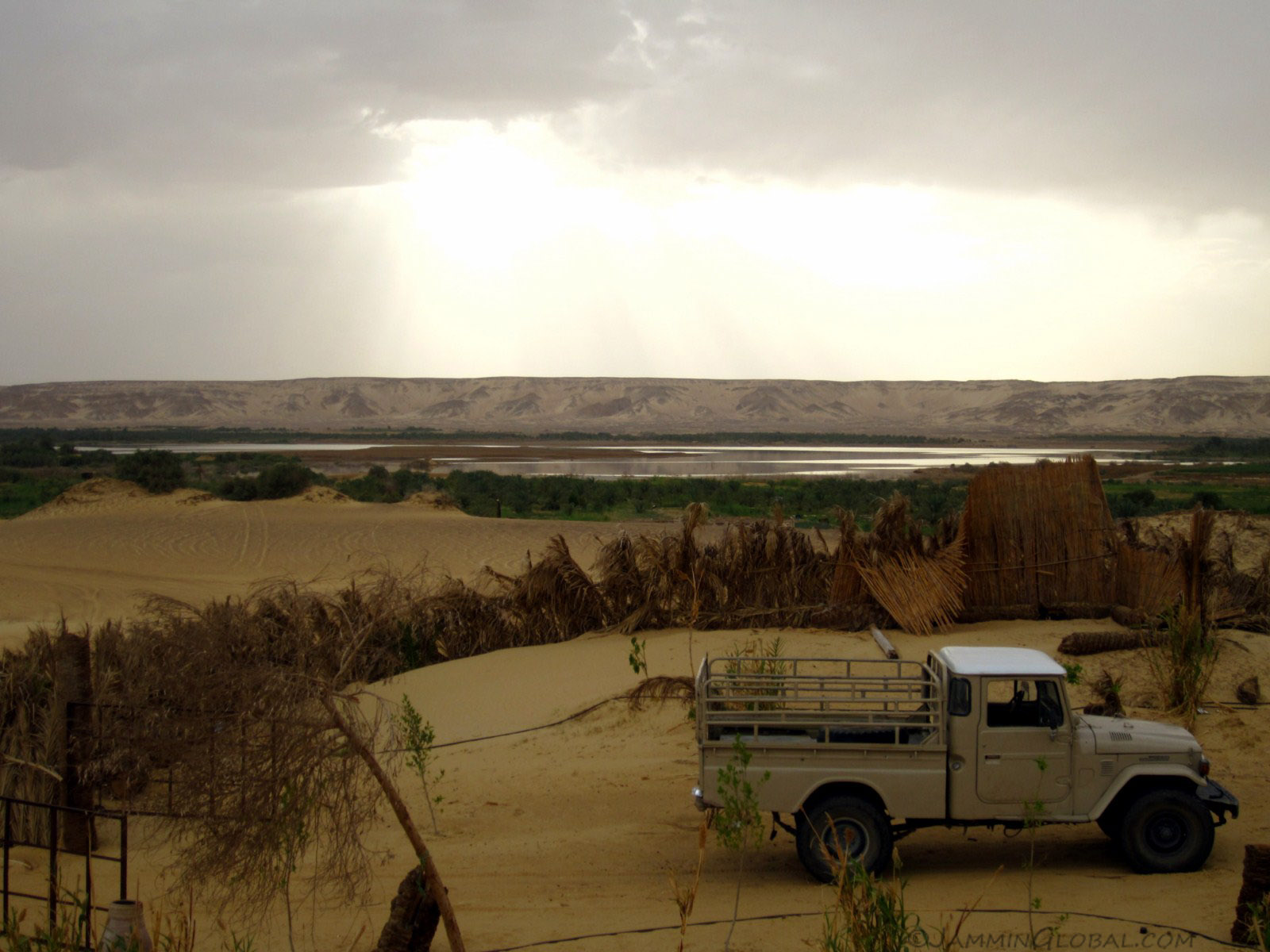
...that Hamada and Taheer had recently acquired and were looking to develop into an eco-tourist lodge.
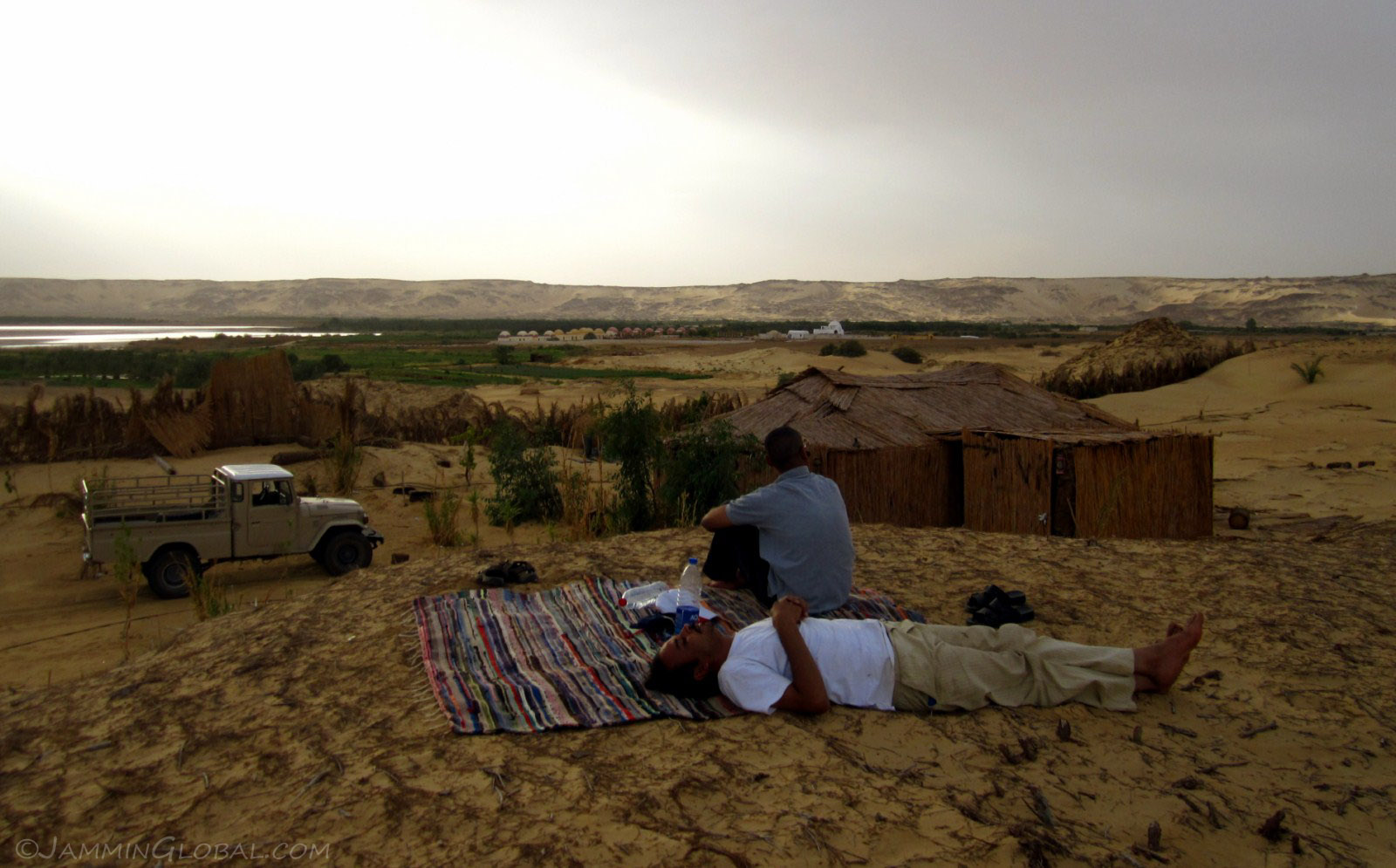
The location was fantastic with sweeping views from a small hill on the property, where they laid down a mat and we just relaxed and chatted about all things. They said when they acquired it, this place was all sand, so they put up the fence, built a rough shelter and were slowing developing it.
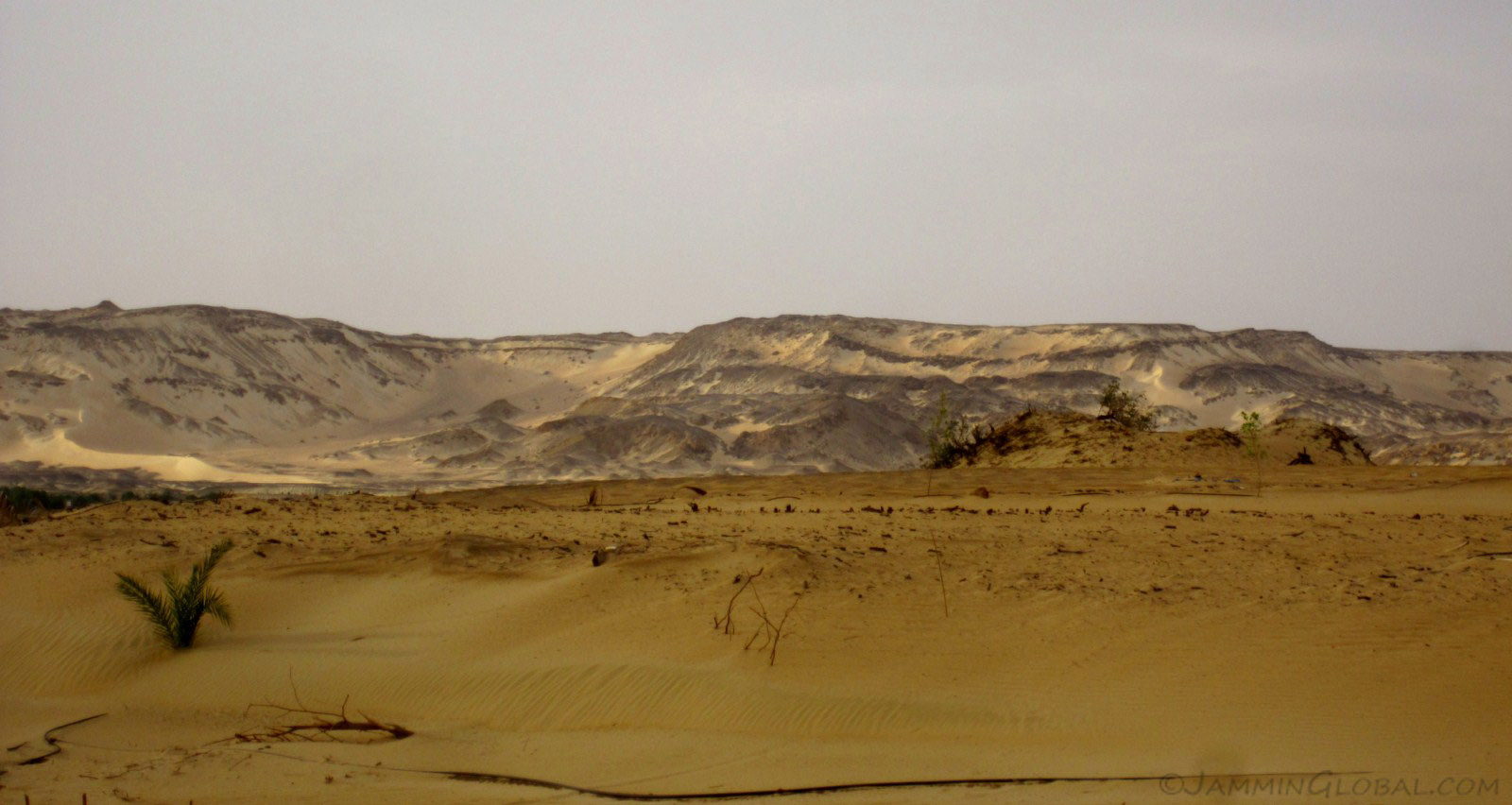
The hidden sun was throwing beautiful light on the nearby hills and the surrounding sand dunes.
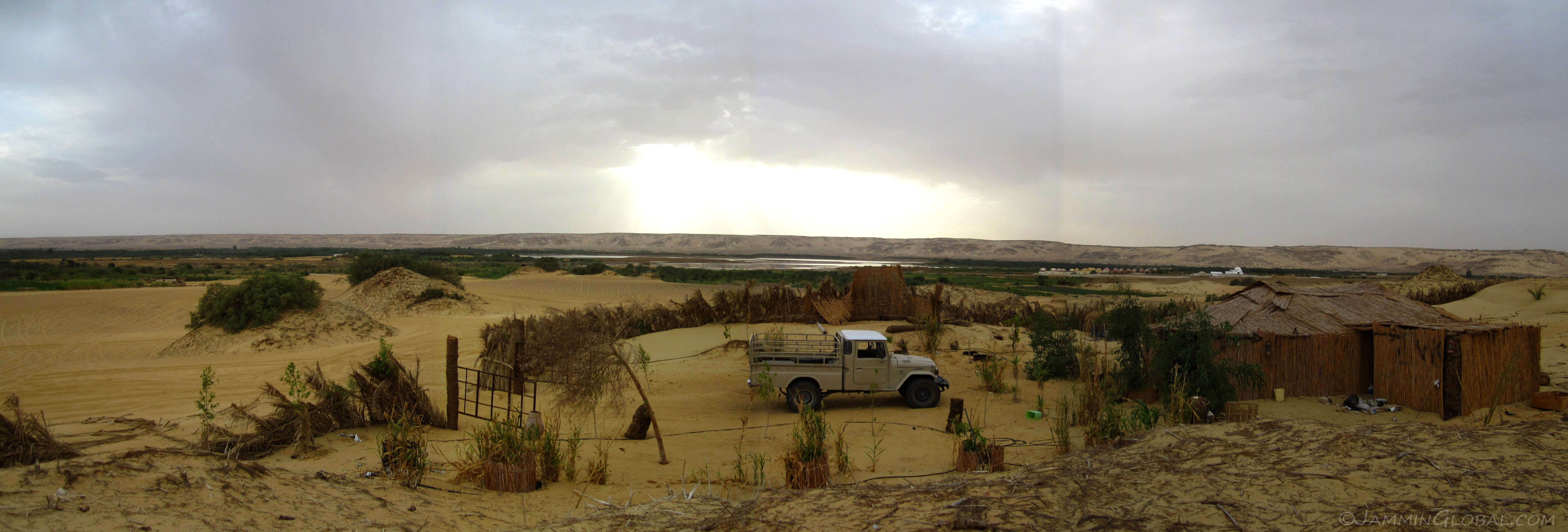
A panoramic view from atop the hill of this large oasis sustained by free flowing underground water, that even collected into a small lake. Click here to see the high resolution version.
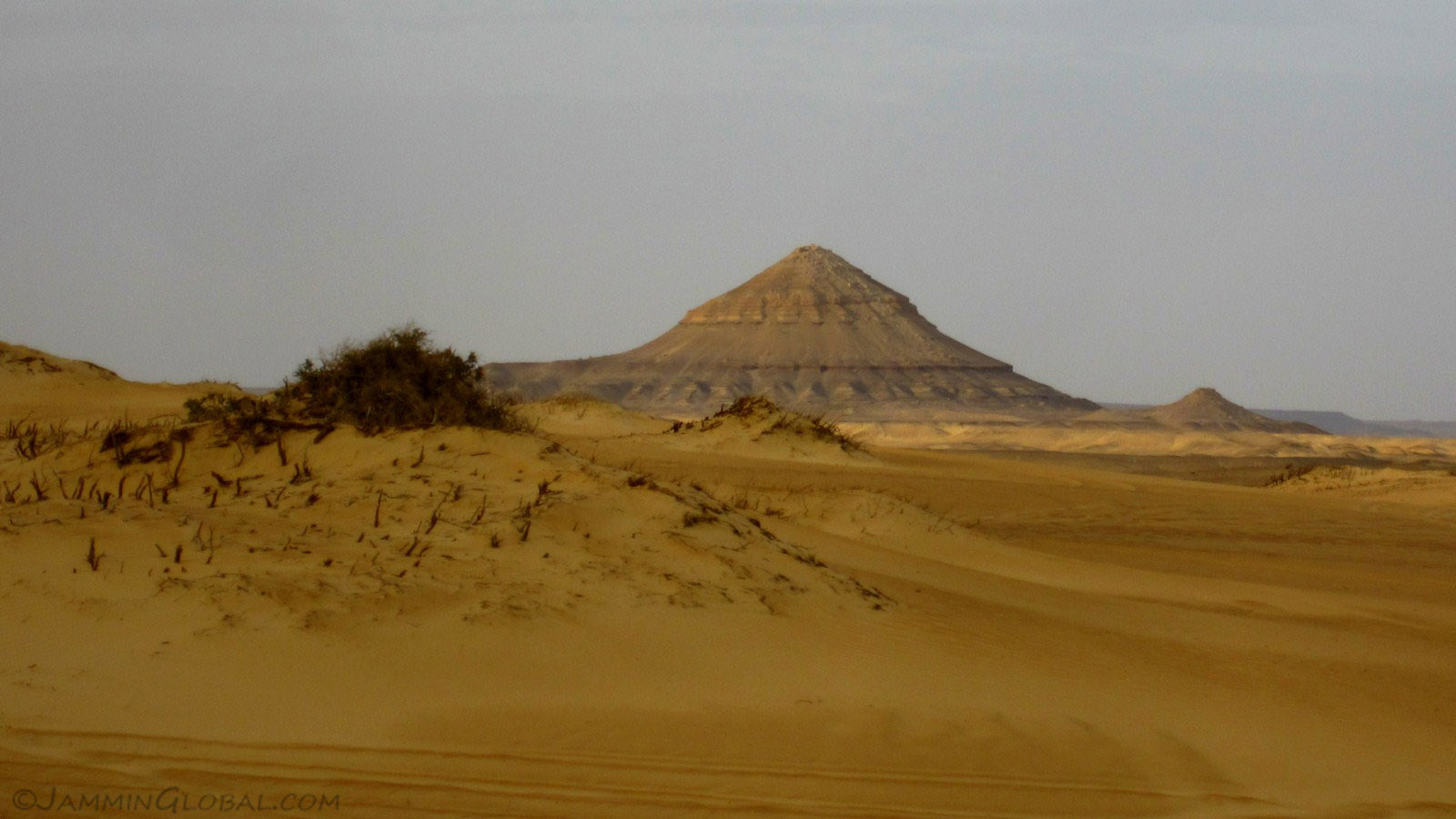
The aptly named Pyramid Mountain, shaped by the weathering of its stone by the fierce desert winds. I thought the Pharaohs might have gotten the idea of building their pyramids from natural shapes such as this, but it was most likely just an evolution of flat tombs with stones piled on top.
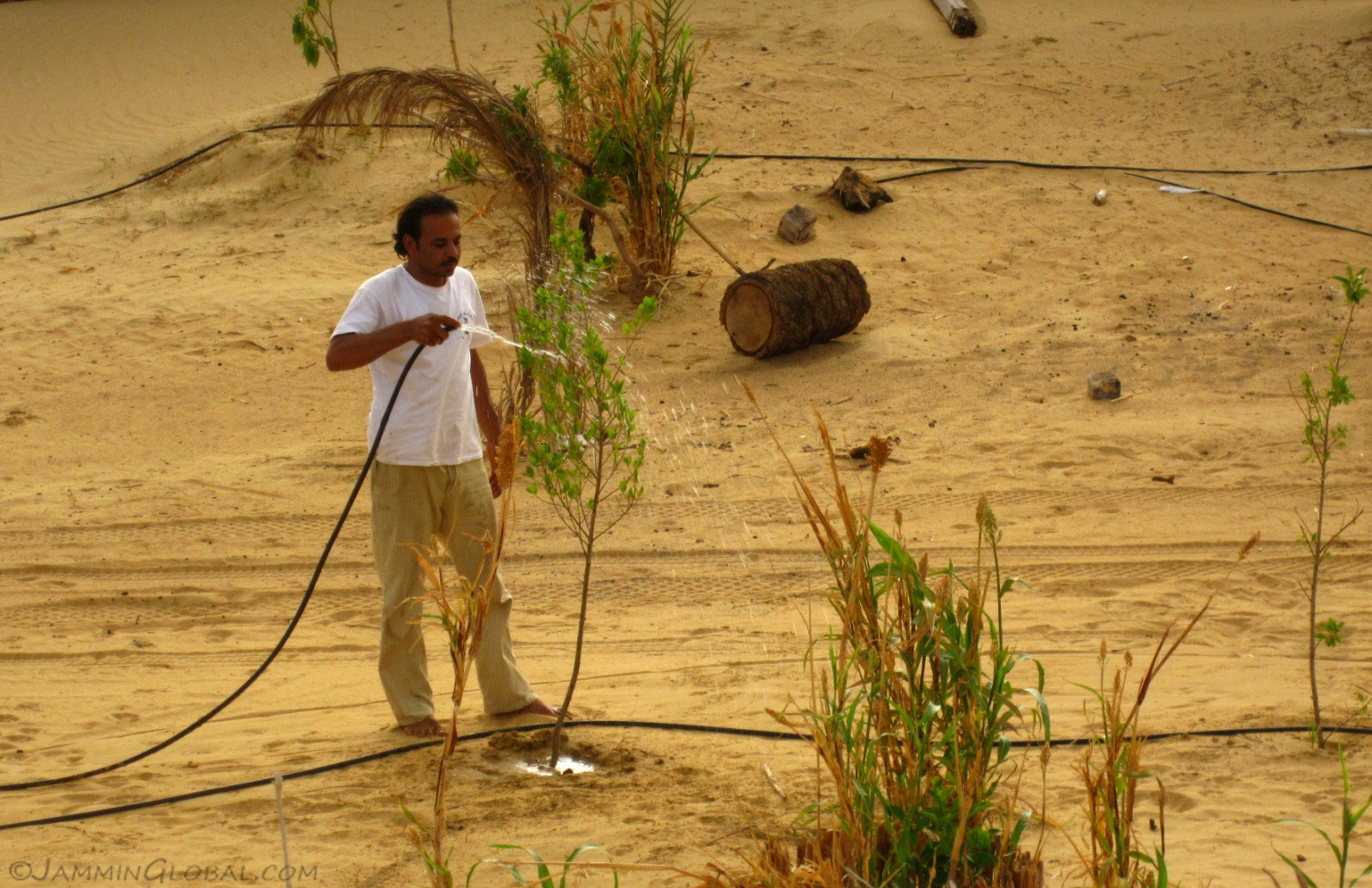
Taheer watering the future trees of his property.
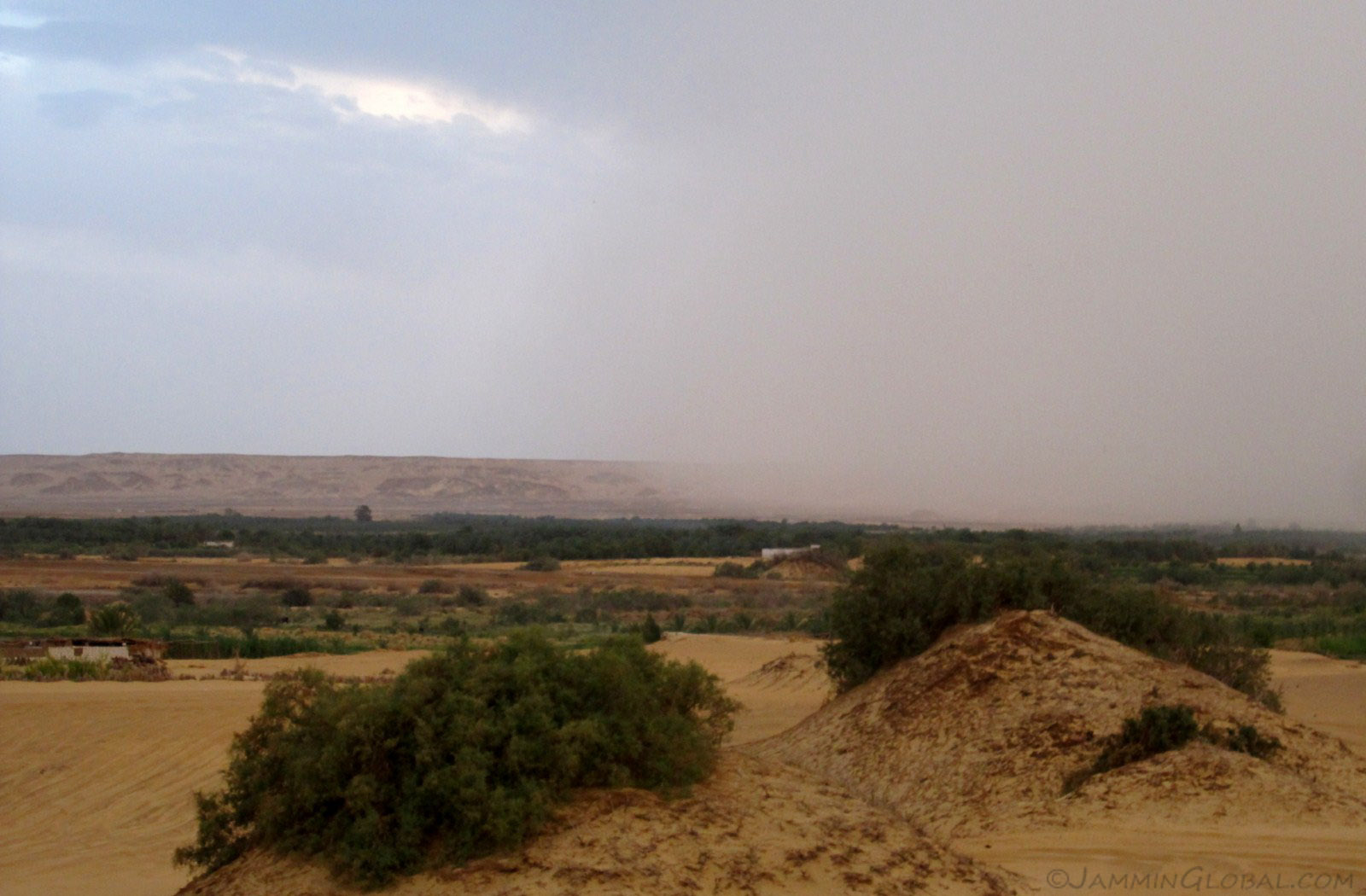
While we sat and relaxed on the hillock, I saw what looked like a sandstorm blowing in, but the others didn't flinch and it blew over without much effect.
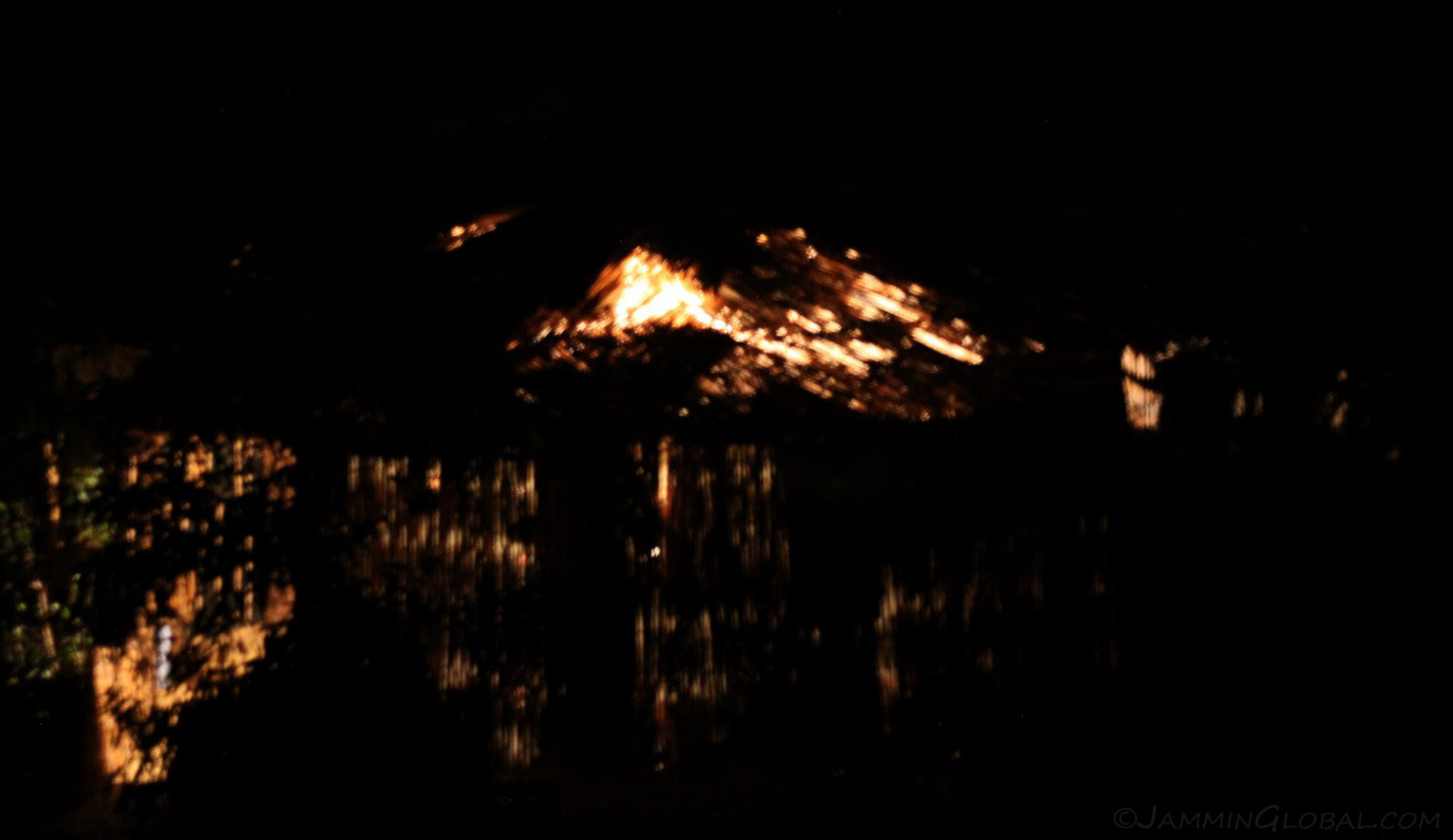
I was enjoying being out in the desert and asked Hamada if we could sleep outside, under the stars, which they said they regularly do. So, we went back into town, got some supplies: food, water and sleeping bags and spent the night out in the desert.
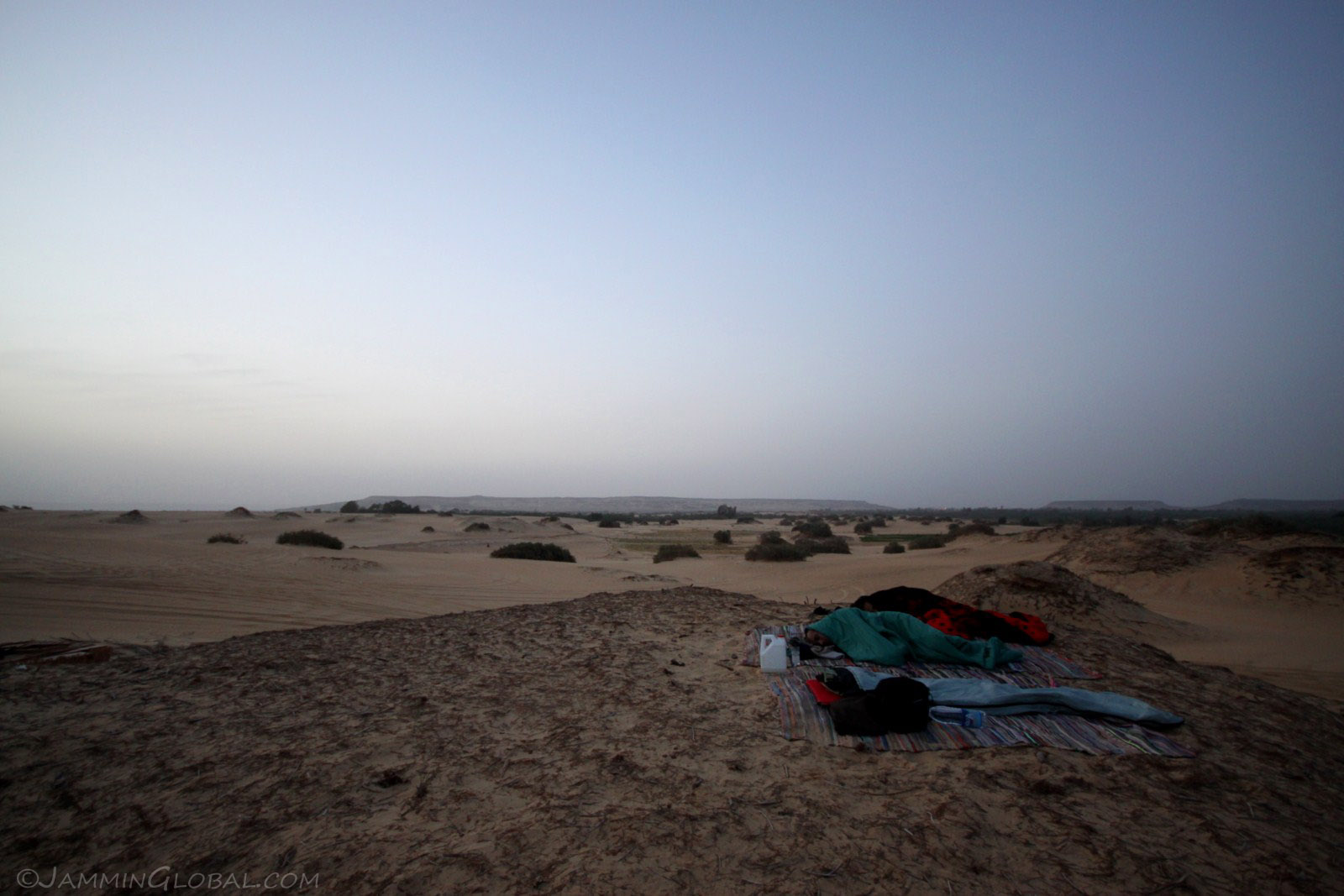
I easily awoke at 5 am to see the desert changing from night to day. It wasn't as cold as I expected but I put my silk liner inside my summer sleeping bag and that was sufficient. It did get a bit sandy, so I covered my head with a t-shirt.
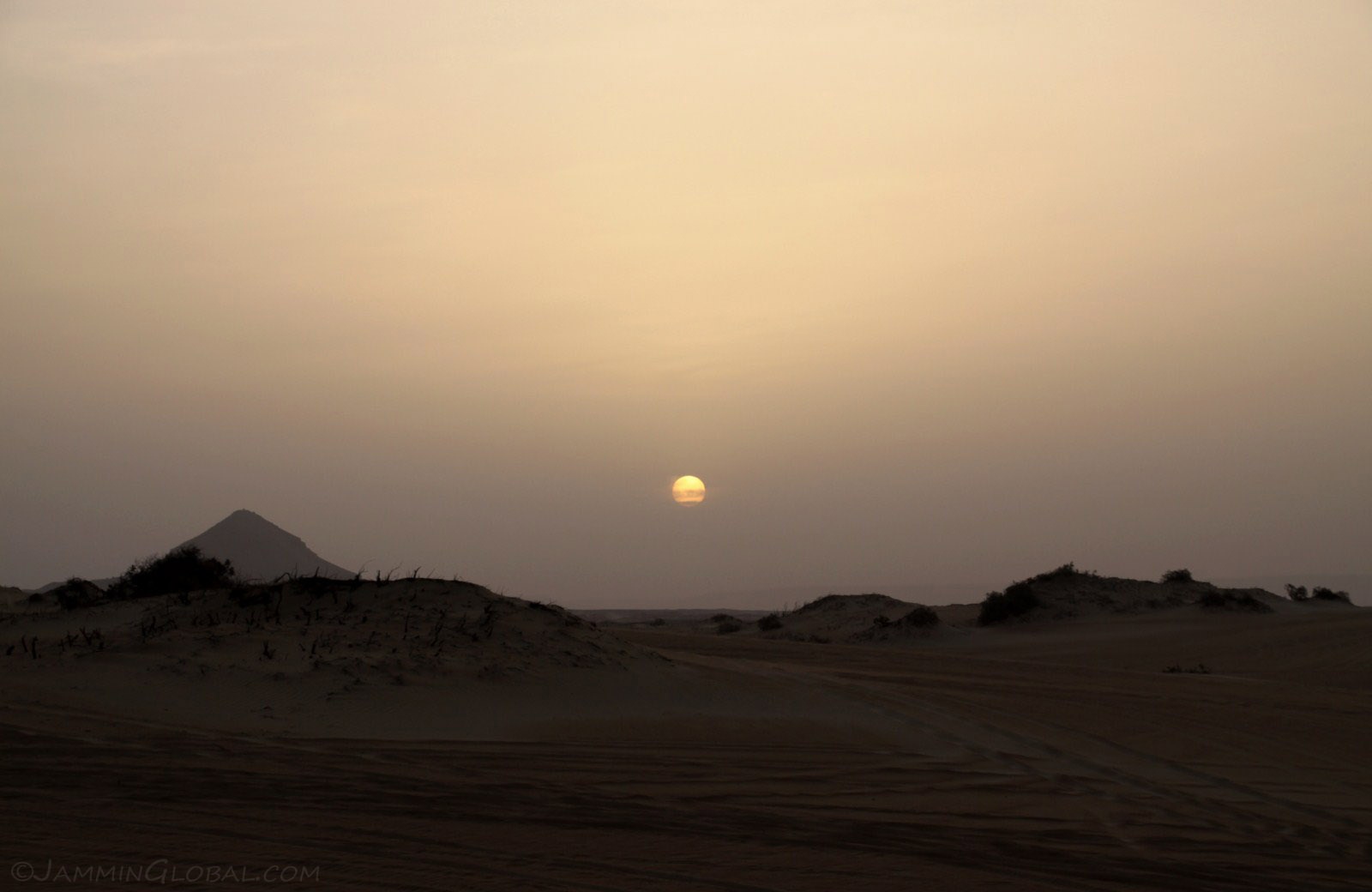
Our star, the Sun, rising above the haze by the horizon, next to Pyramid Mountain. You can imagine such a sight inspiring the ancients into deifying this experience and creating Ra, the Sun god.
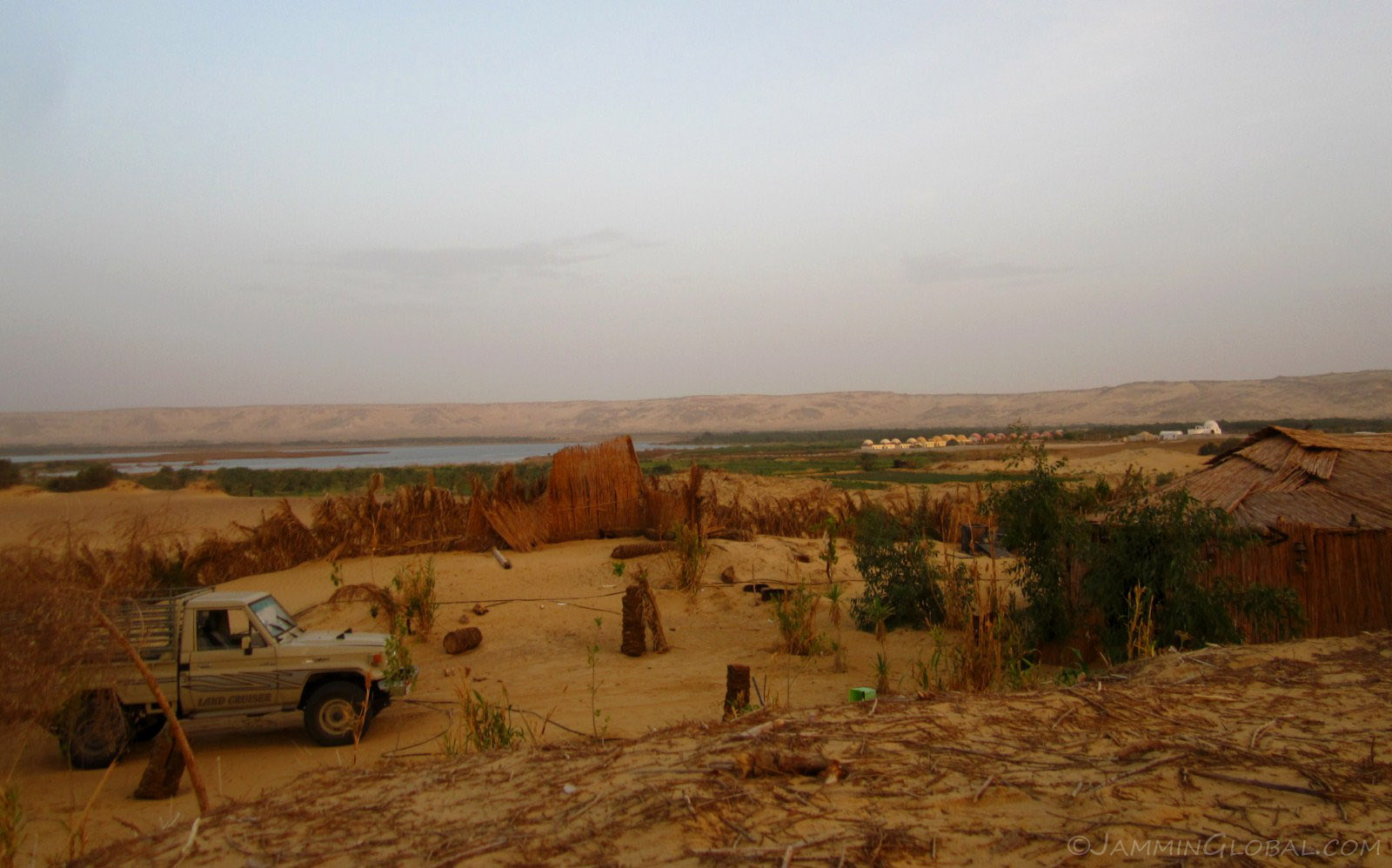
The first rays cast a beautiful light across Hamada and Taheer's desert lodge.
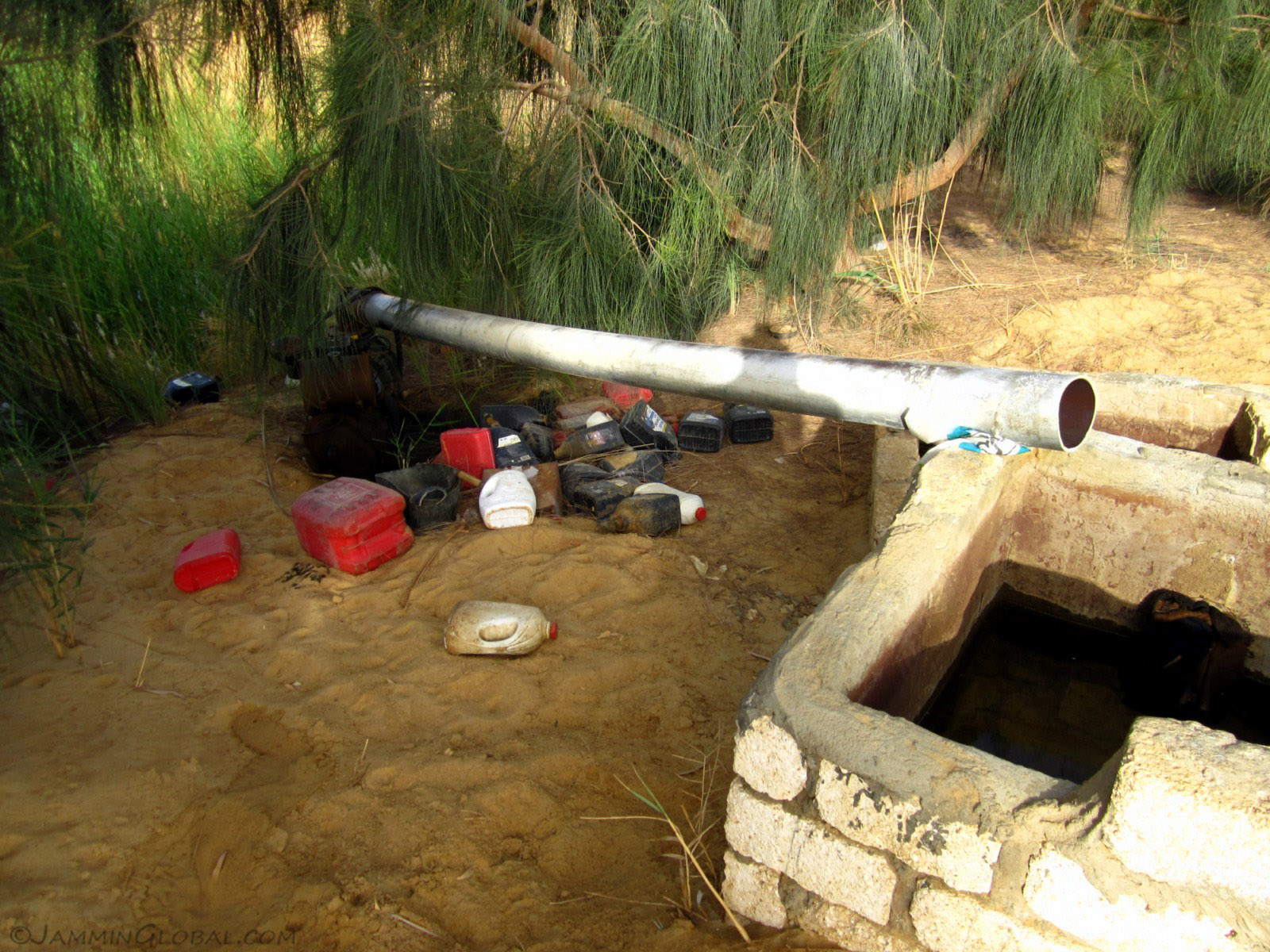
I couldn't go back to sleep once the Sun was up, so I explored around and came across this pump that had fuel containers scattered around it.
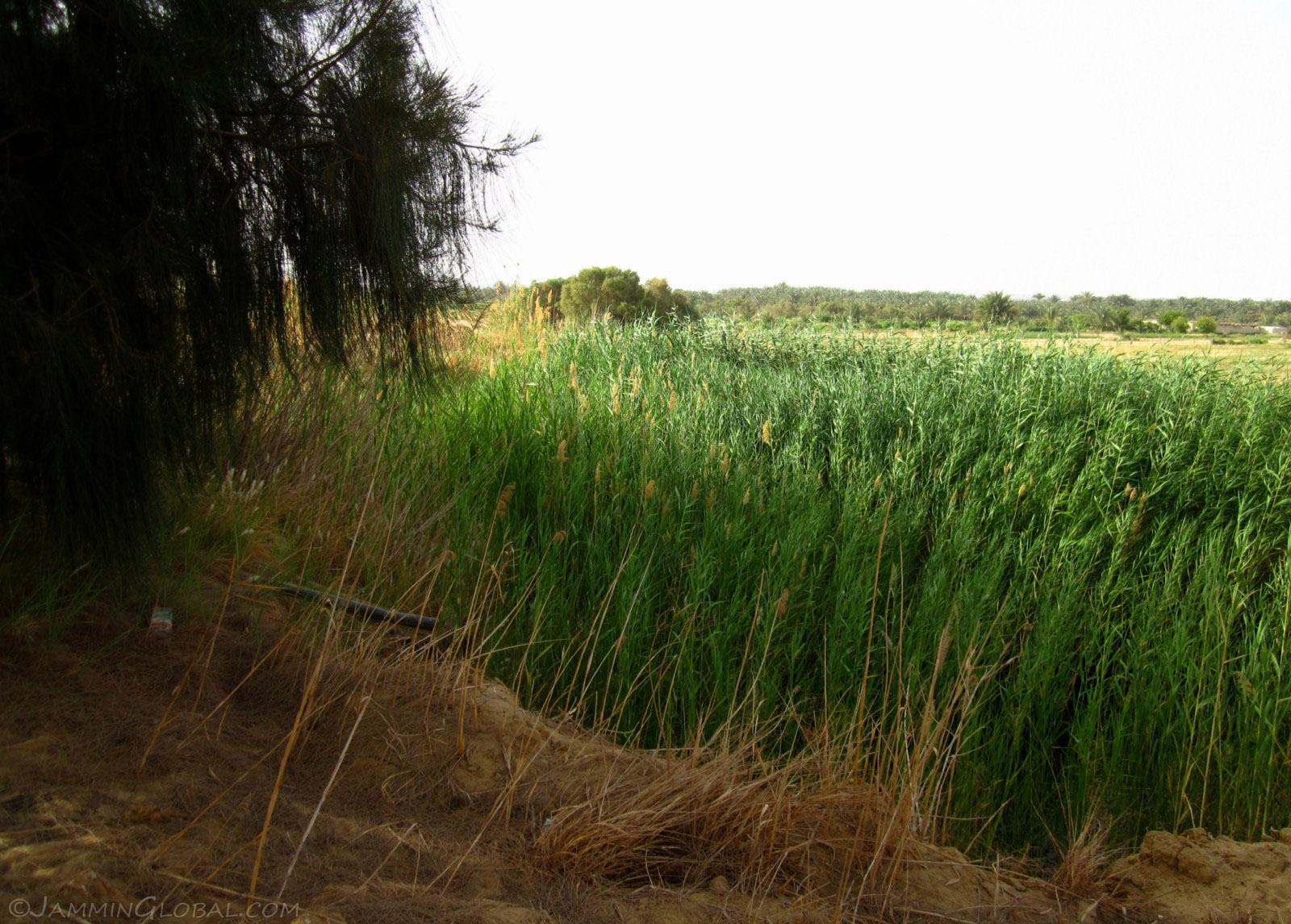
Densely-growing alfalfa near the water pump. This is the main fodder for donkeys, a key transport if you can't afford a vehicle here.
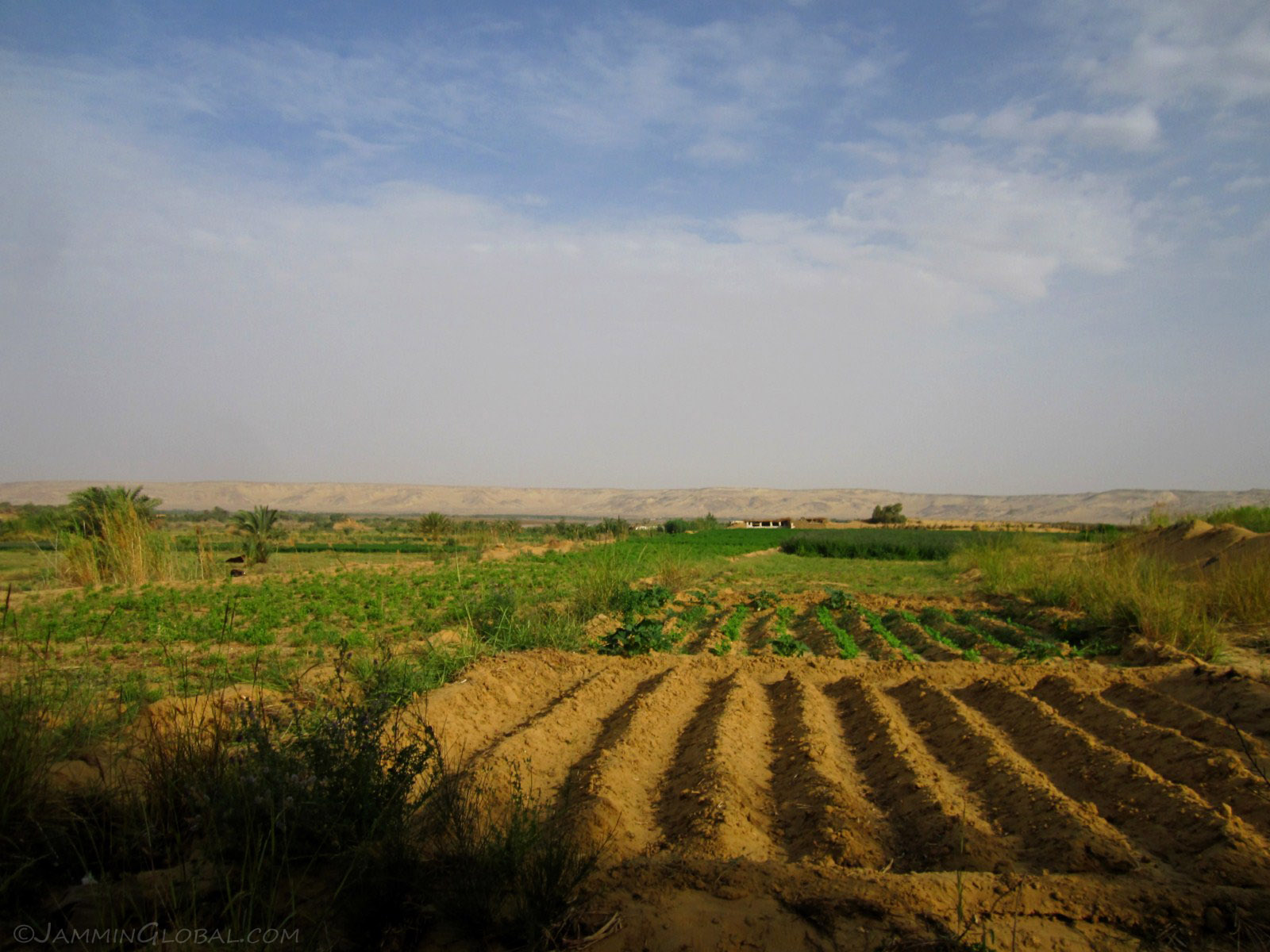
Freshly sowed fields sustained by water from the pump. It was just past 7 am and the Sun was already pretty intense.
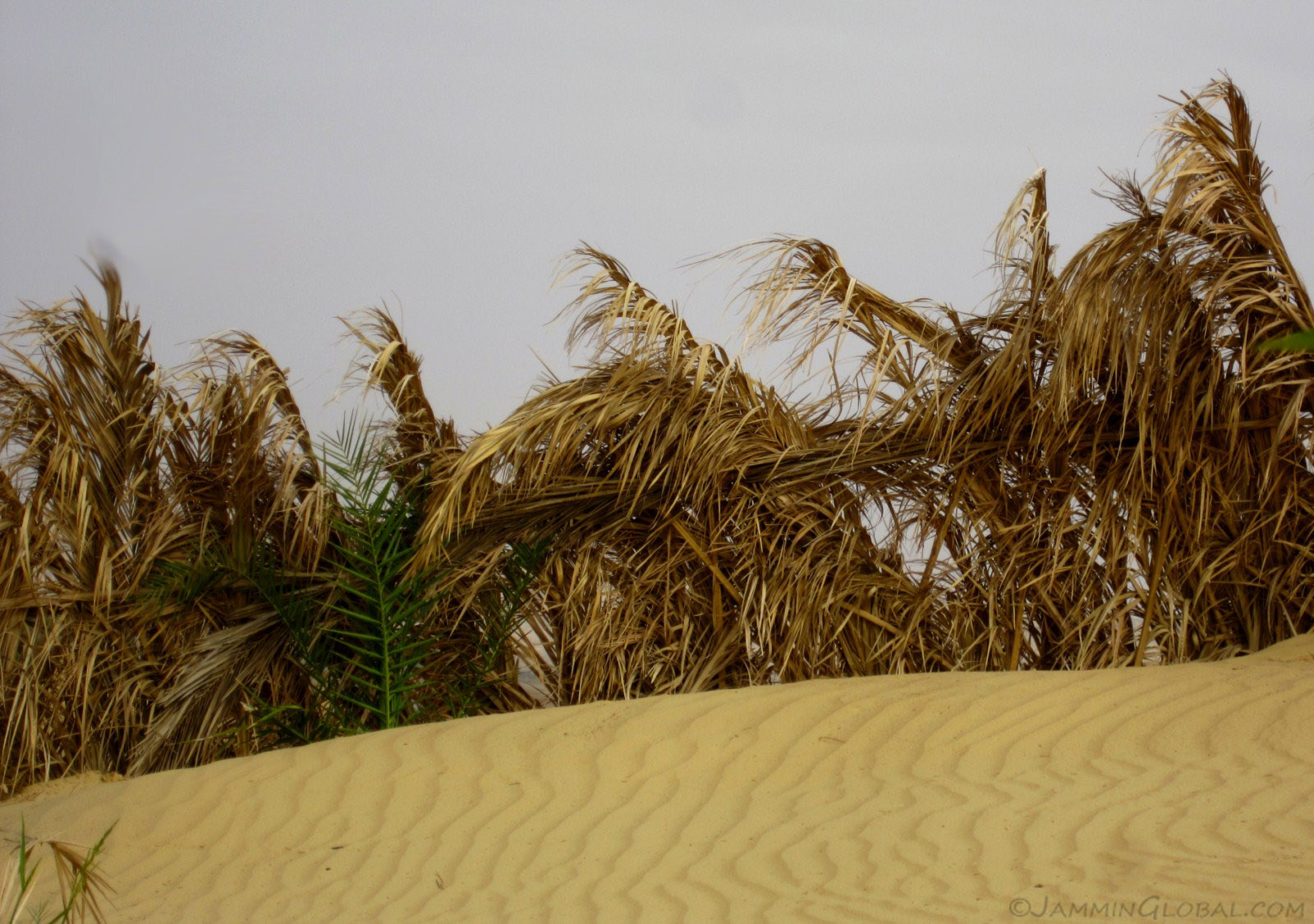
Back on the property that was fenced in with date palm leaves.
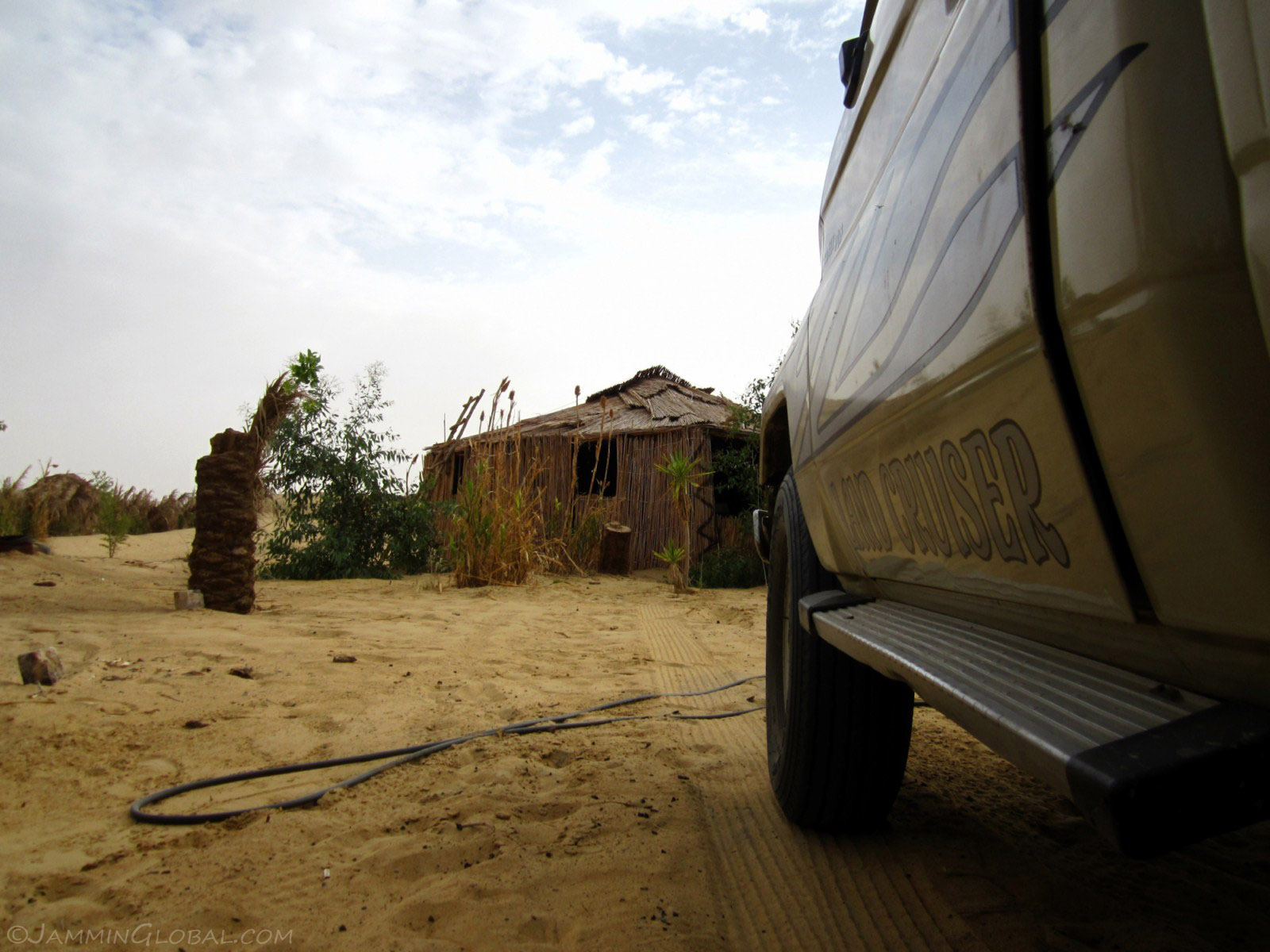
The Land Cruiser, at home in the desert.
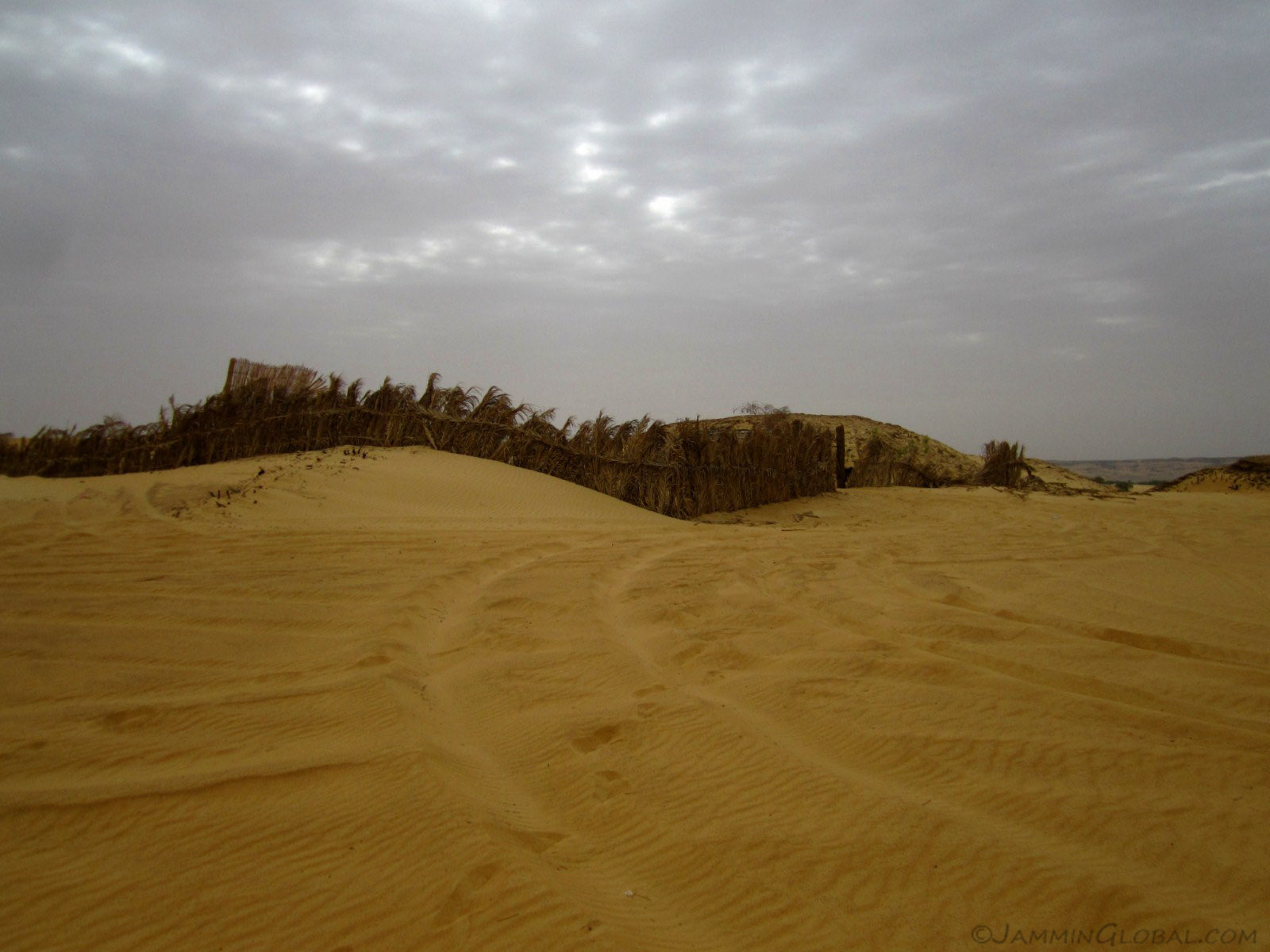
The date palm fence rising up from the sea of sand.
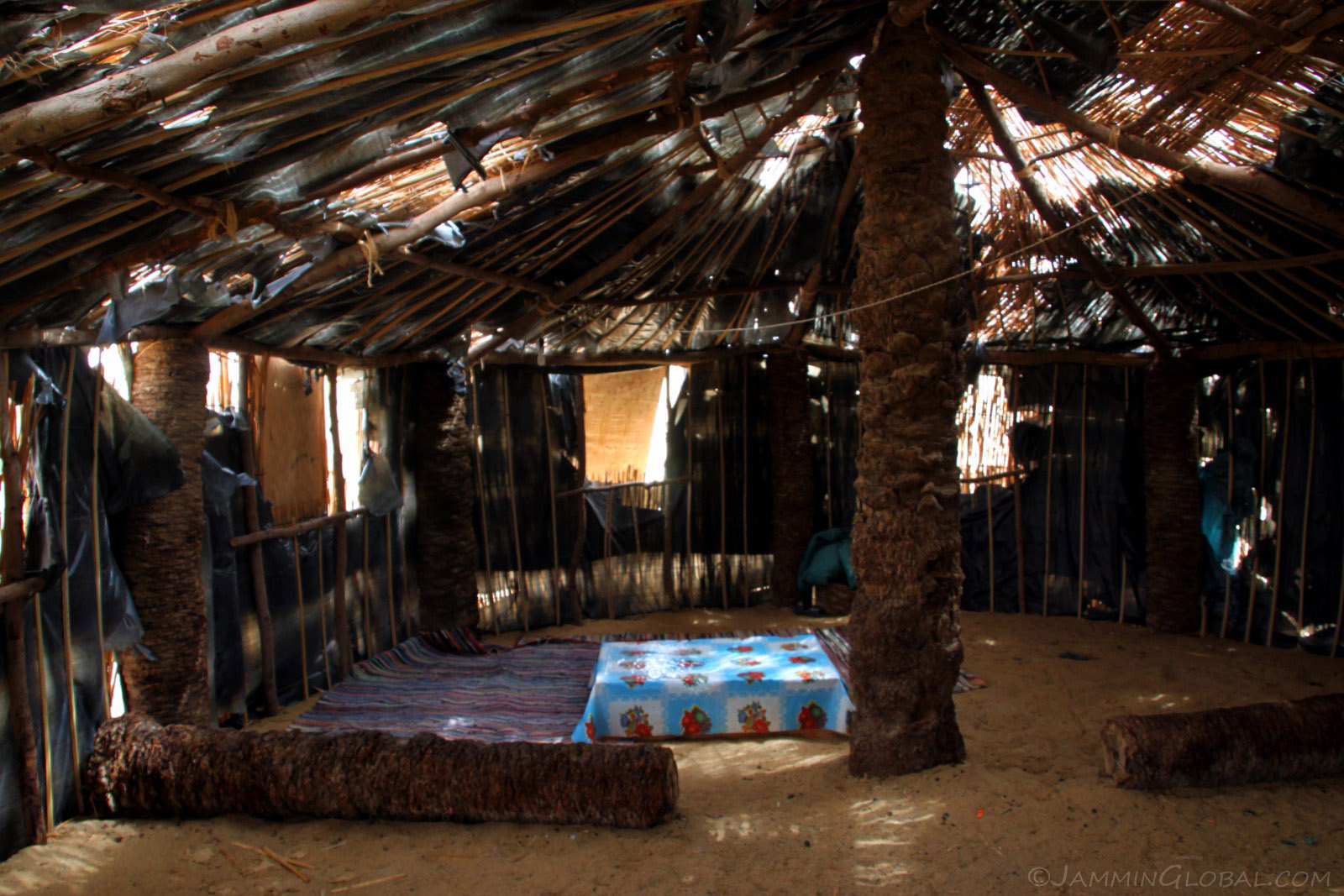
The inside of the hut on their property, made with date palm trunks and lined with plastic to keep the sand out. It's still a work in progress.
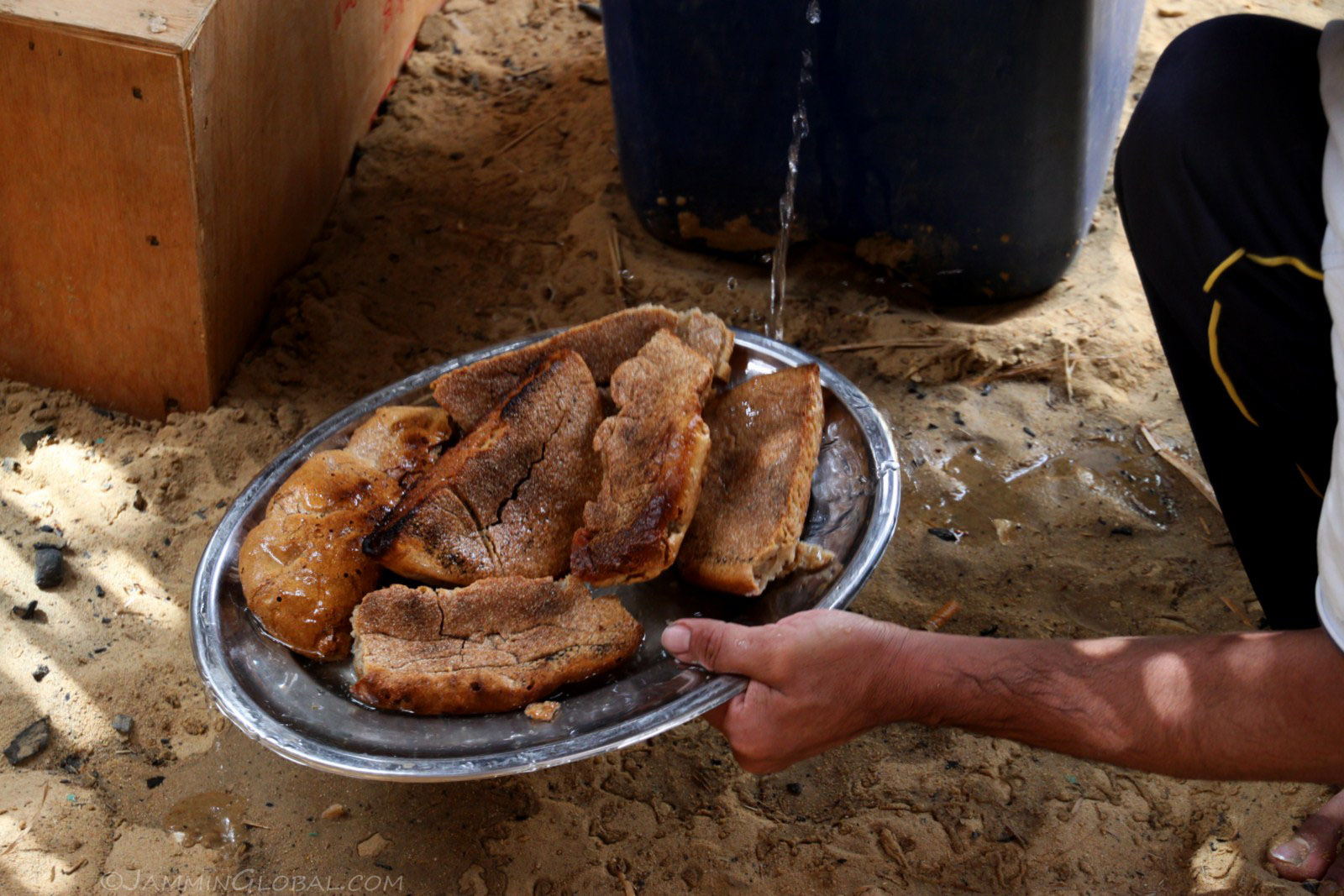
Hamada preparing some Bedouin bread. It's prepared by initially baking it under the sand and then left to dry and become rock hard under the Sun. This way it can be taken on long journeys across the desert and simply needs to be rehydrated to become edible again. It might sound strange to put water on bread, but it was surprisingly very tasty and not soggy.
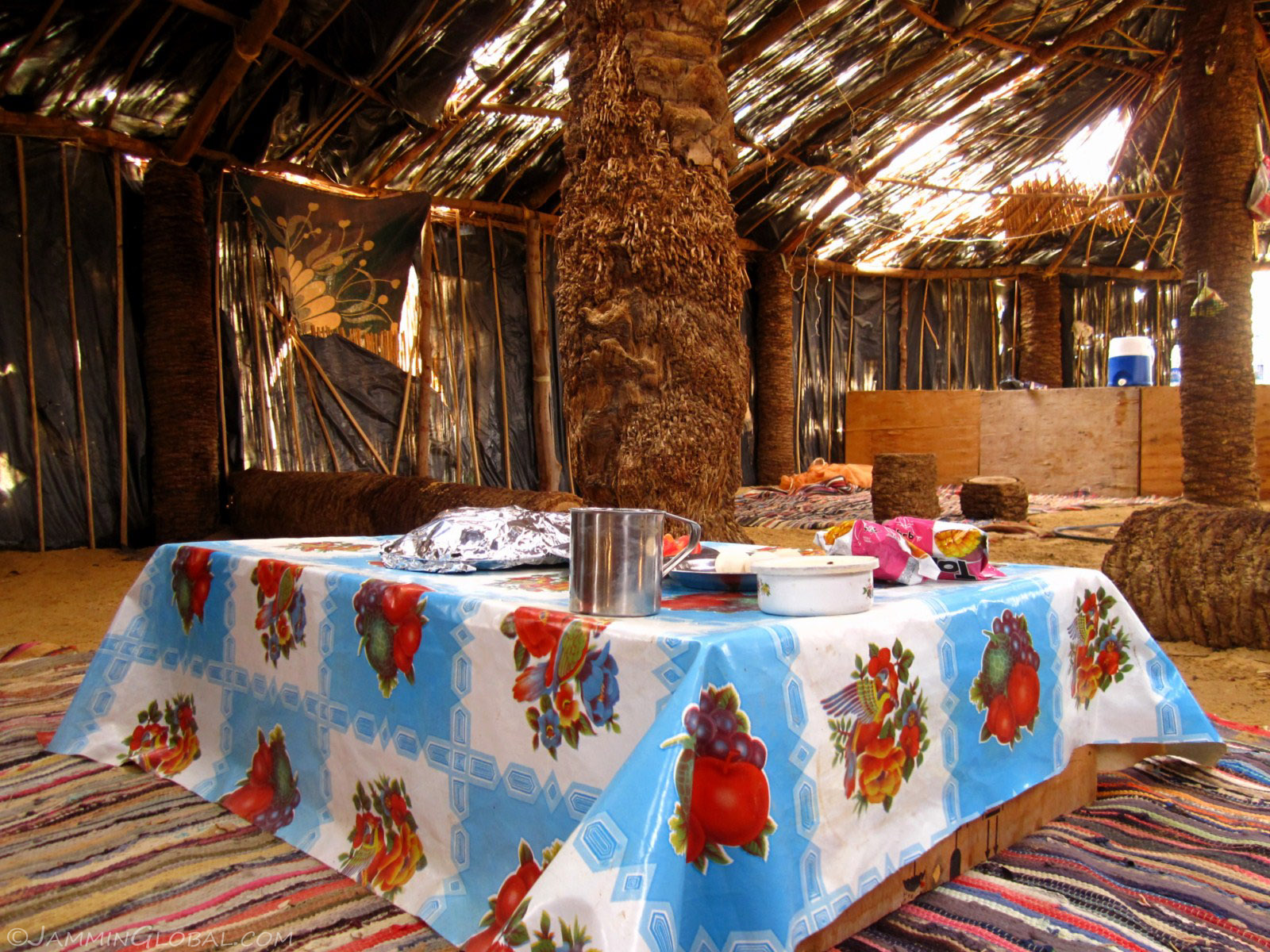
An inviting meal setting in a date palm hut in the desert.
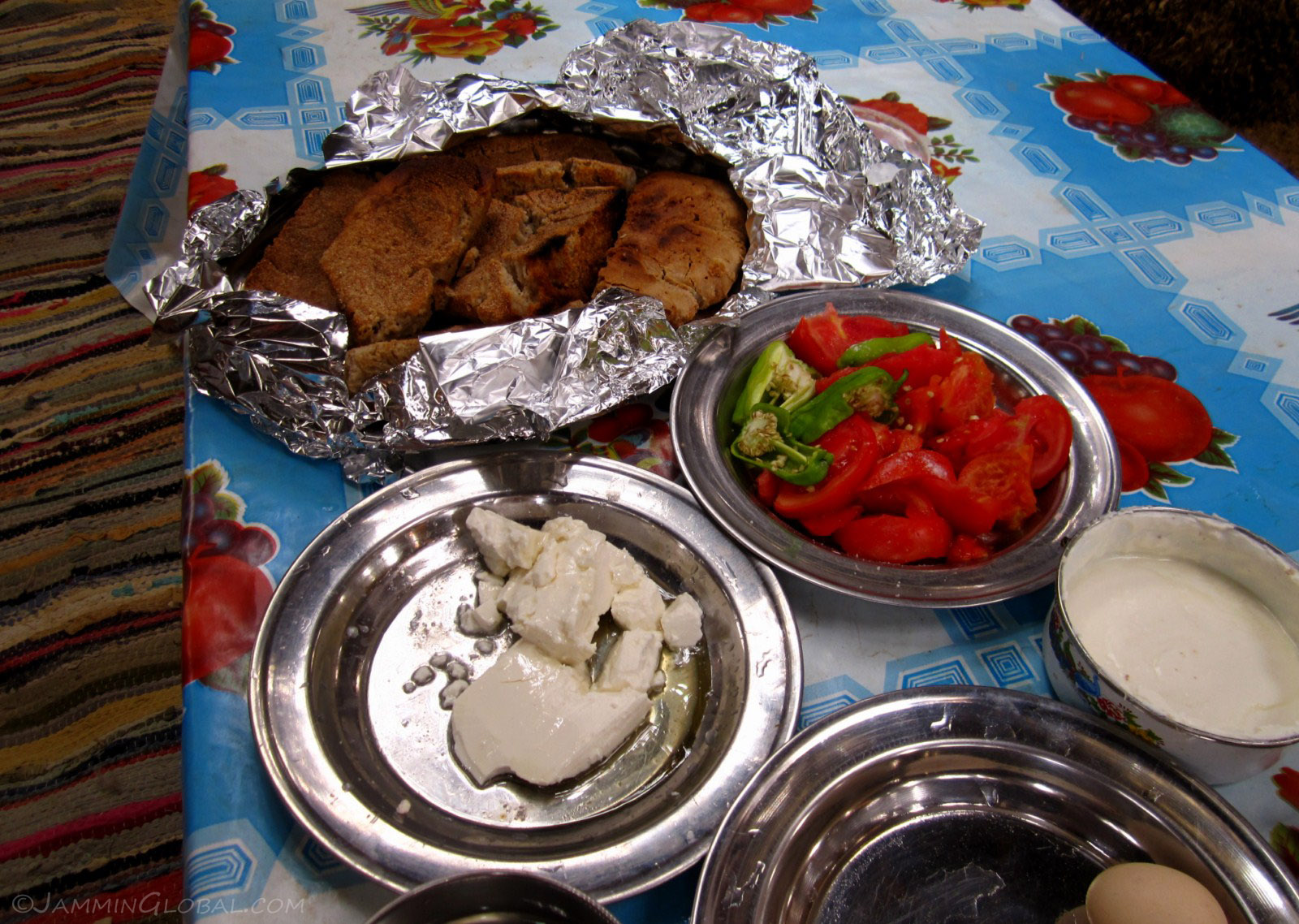
A tasty brunch of Bedouin bread, goat cheese, tomatoes and peppers, yoghurt and boiled eggs. Mmm, mmm, good.
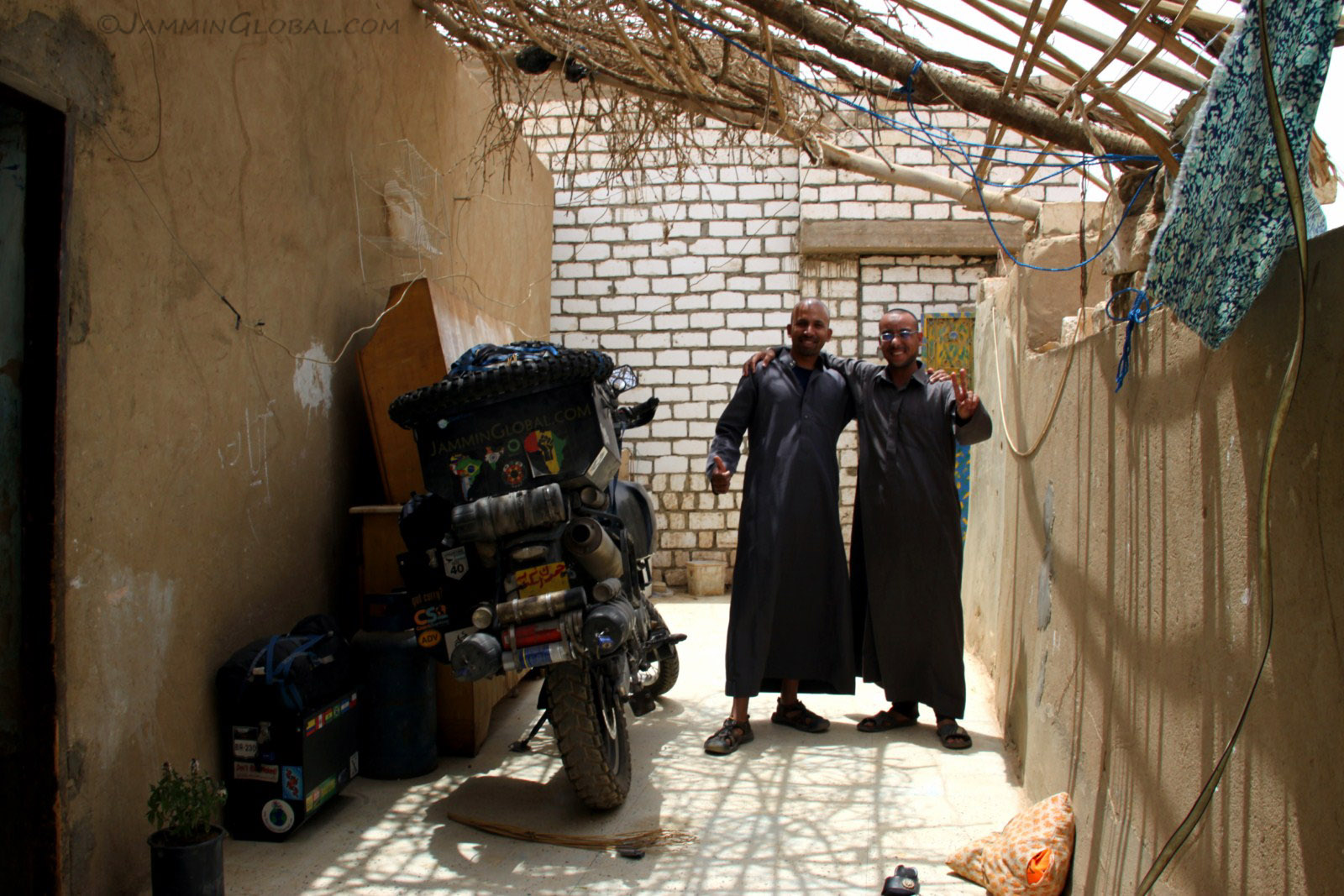
We got back in town and being a Friday, Hamada was heading for prayers at the local mosque. I asked if I could join him and he was happy to get me a jellabiya, the free-flowing dress of Arab men. His mother said I could pass as his brother. Since non-Muslims aren't allowed into mosques, especially during prayers, Hamada told me not to speak to anyone (of course since I couldn't speak more than a few words of Arabic) and to just follow him through the motions of prayer. He was quite impressed at how well I passed for a practicing Muslim.
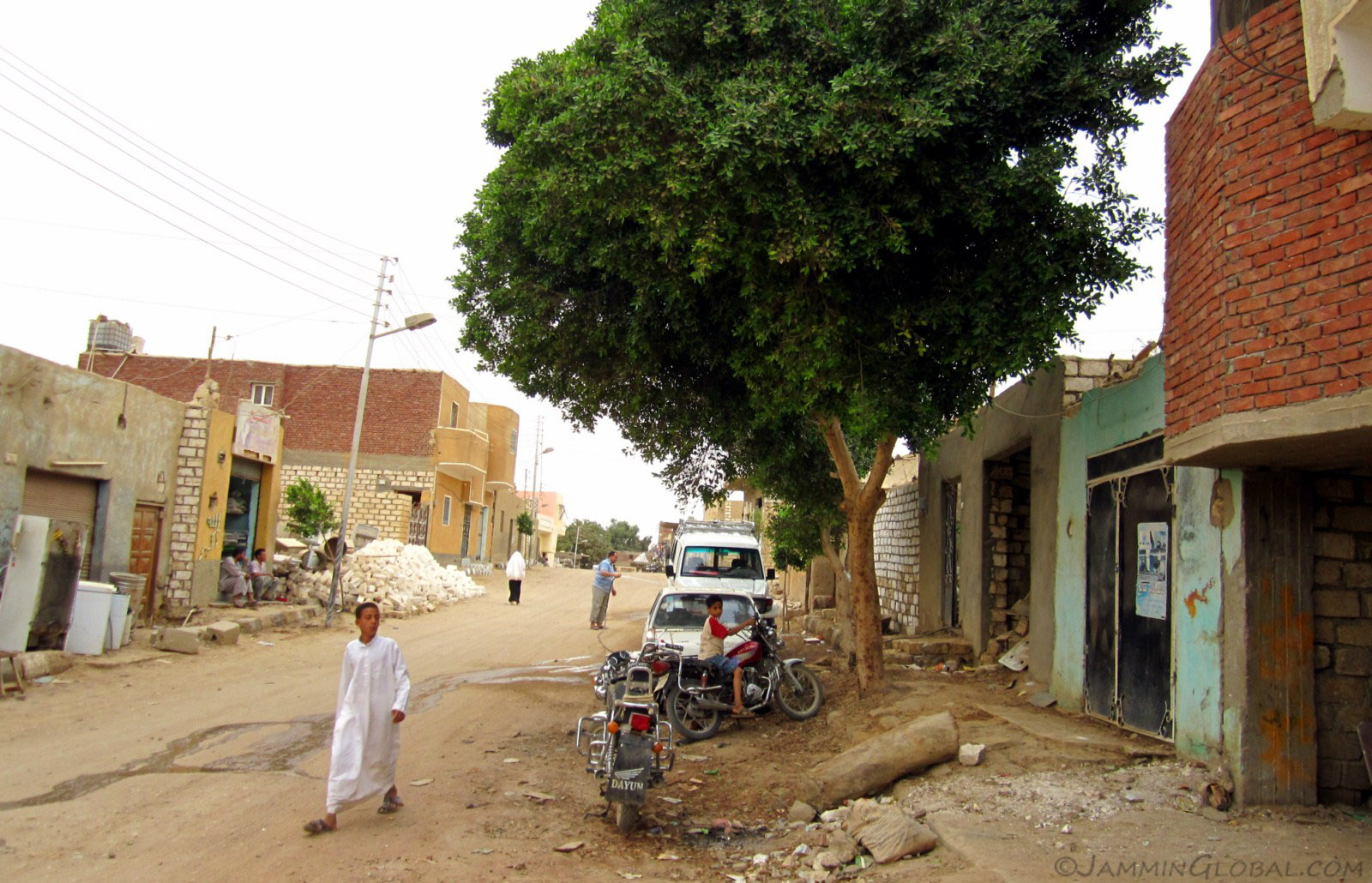
In the afternoon, we walked about the town, which wasn't that exciting, except for...
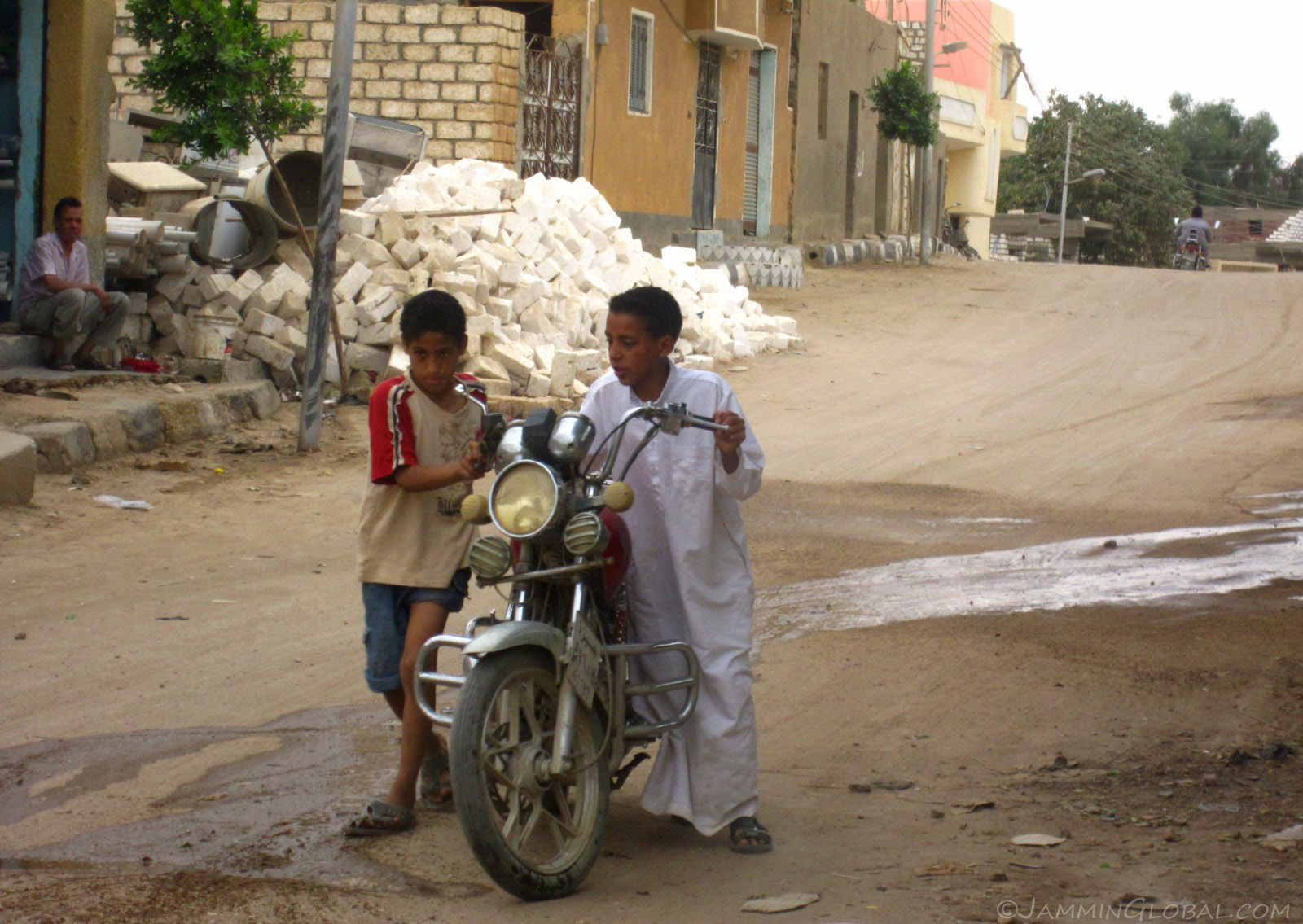
...the kids of Bahariya. What were these two up to with this motorcycle? This reminds me of my cousins who said they used to push their dad's scooter up a hill in our village outside Madras to learn how to ride without using any petrol.
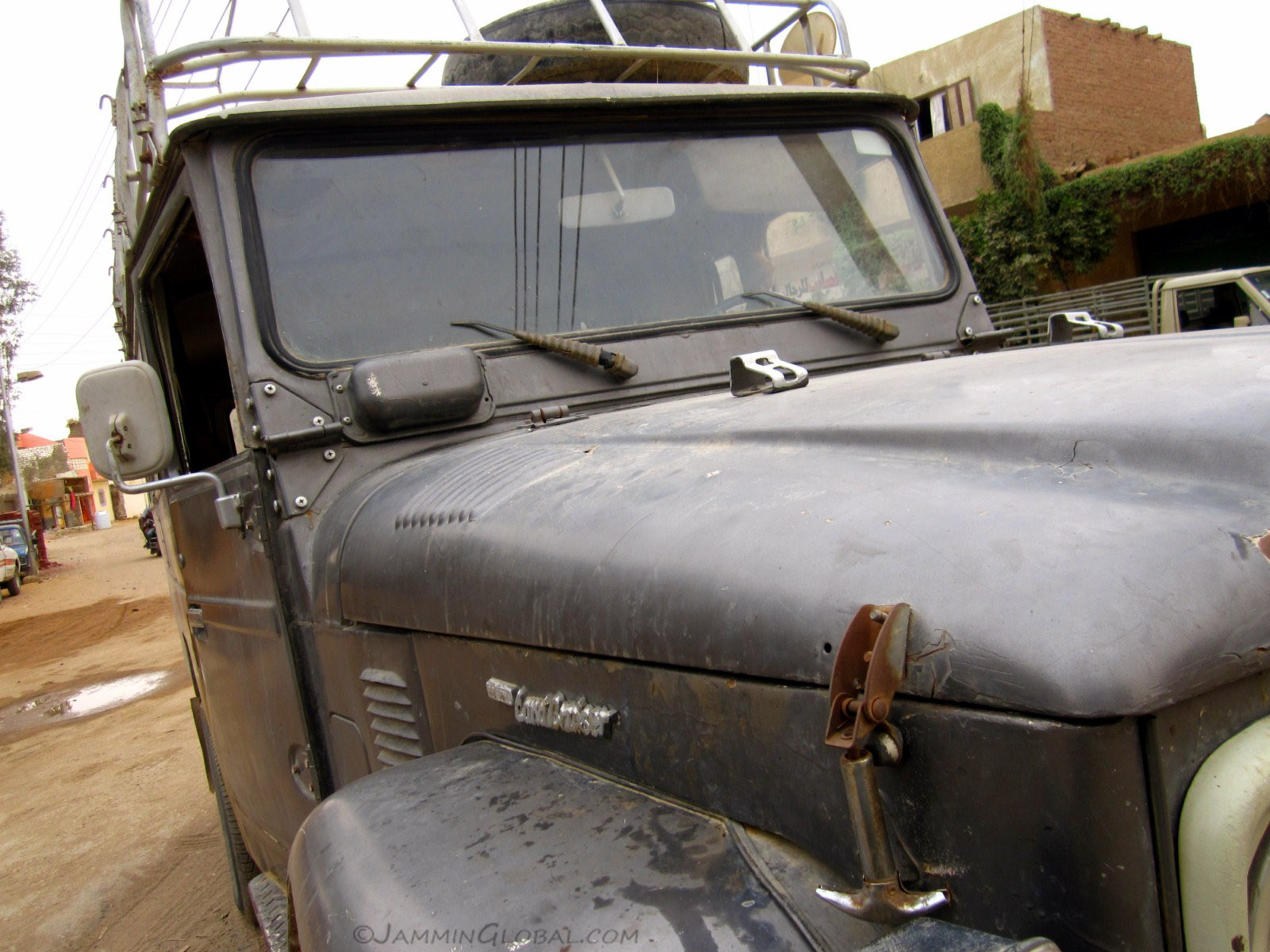
We spent some time meeting some of their friends and of course, drinking lots of mint tea. A strange thing about Bahariya is that almost 90% of the vehicles are Toyota Land Cruisers. This is an FJ40, the classic body style, built from 1960 to 1984. The world over, this particular vehicle has been relied on for rough and tough driving and is still considered the most dependable 4x4 by rebels, such as those just across the border in Libya.
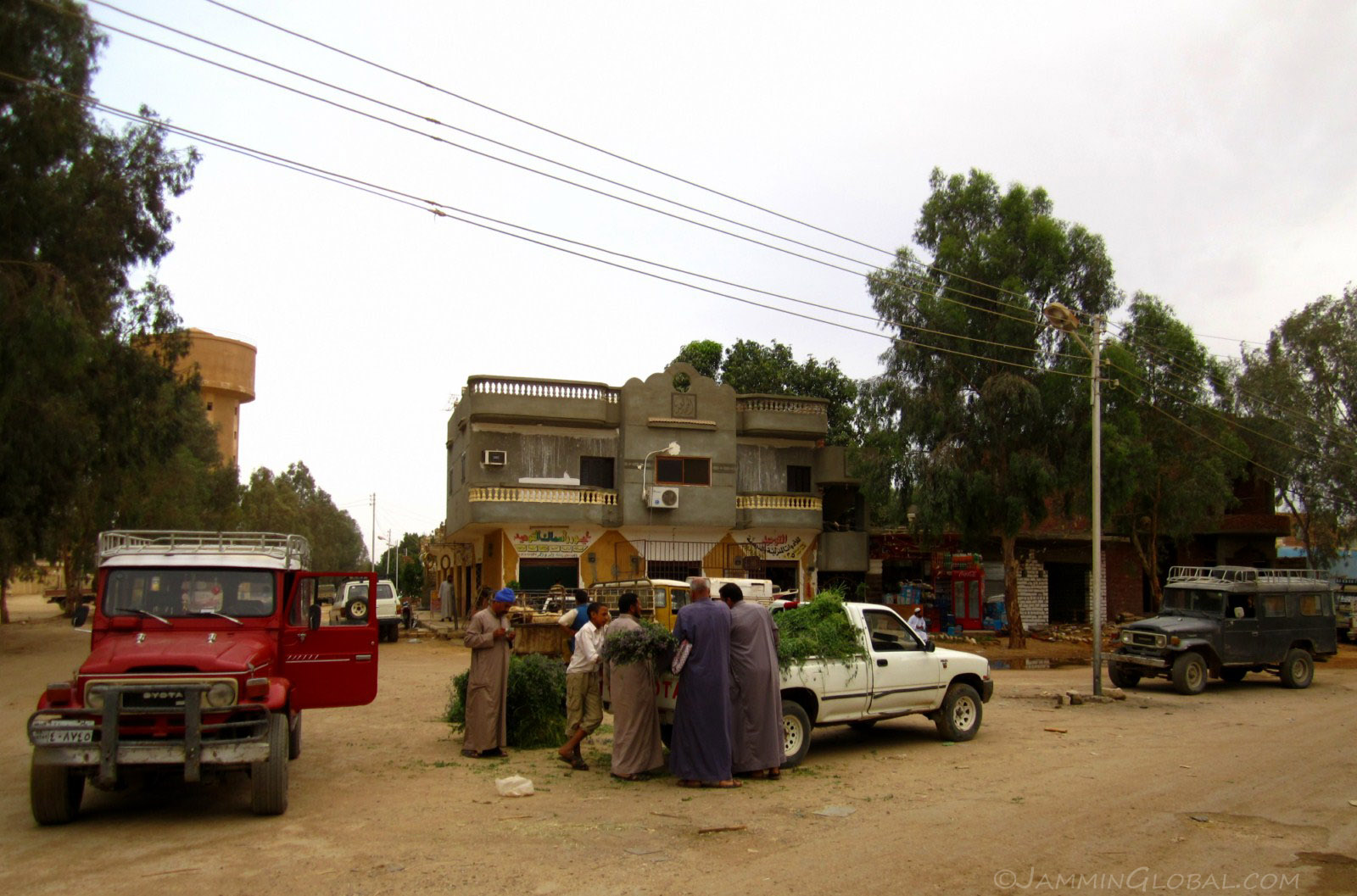
A white Toyota Hilux (another staple 4x4) stops in the square to sell some freshly harvested alfalfa and passersby stop to pick some up for their livestock. At one point, I counted 9 different Land Cruisers in my field of view. Hamada explained that as the Egyptian Army upgrades it Land Cruisers, they sell off the older models cheaply to the public, who grab them up as dependable desert cruisers.
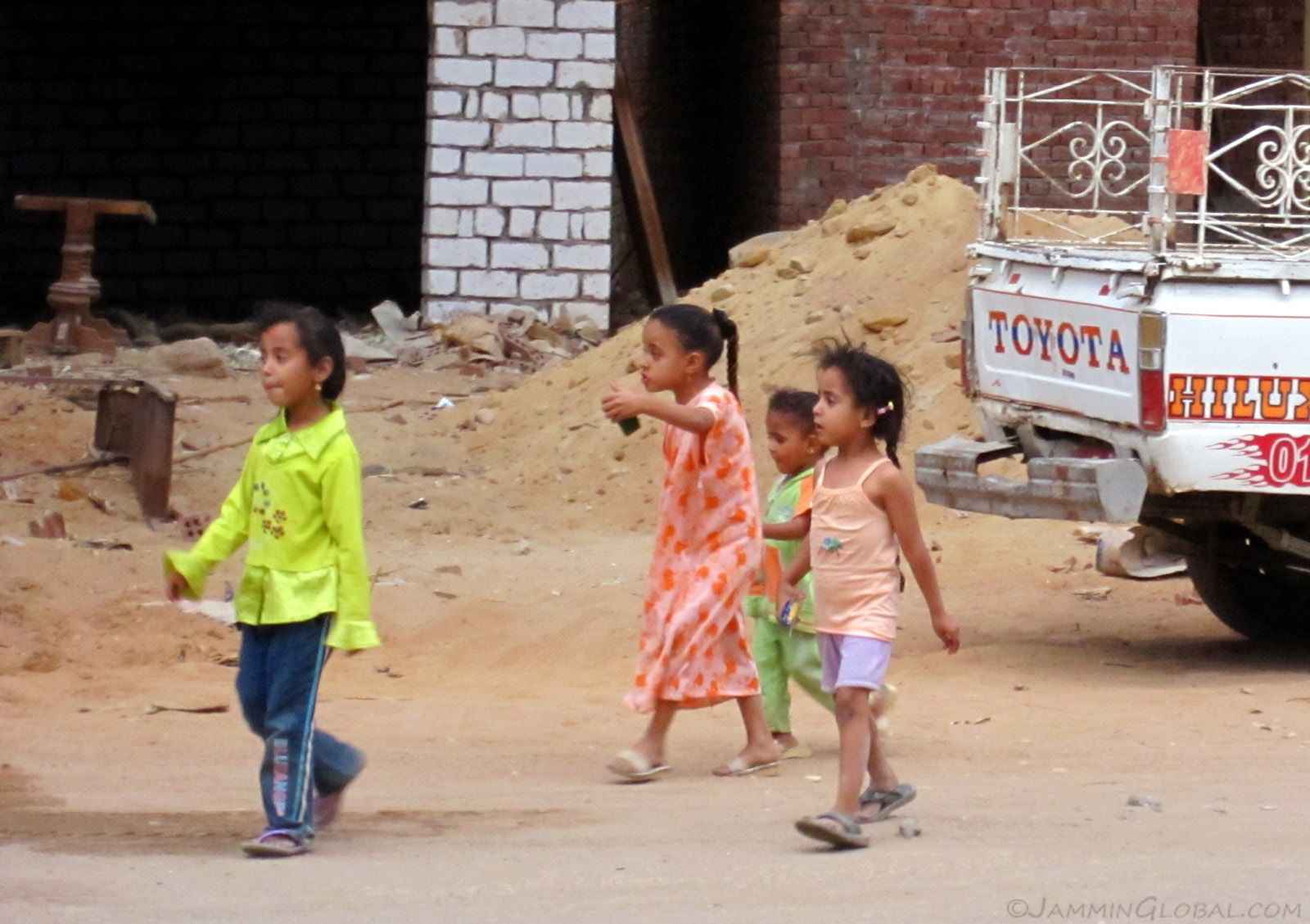
This gang of young girls strutted by, oozing confidence in their stride and maybe collecting protection fees from the shopkeepers.
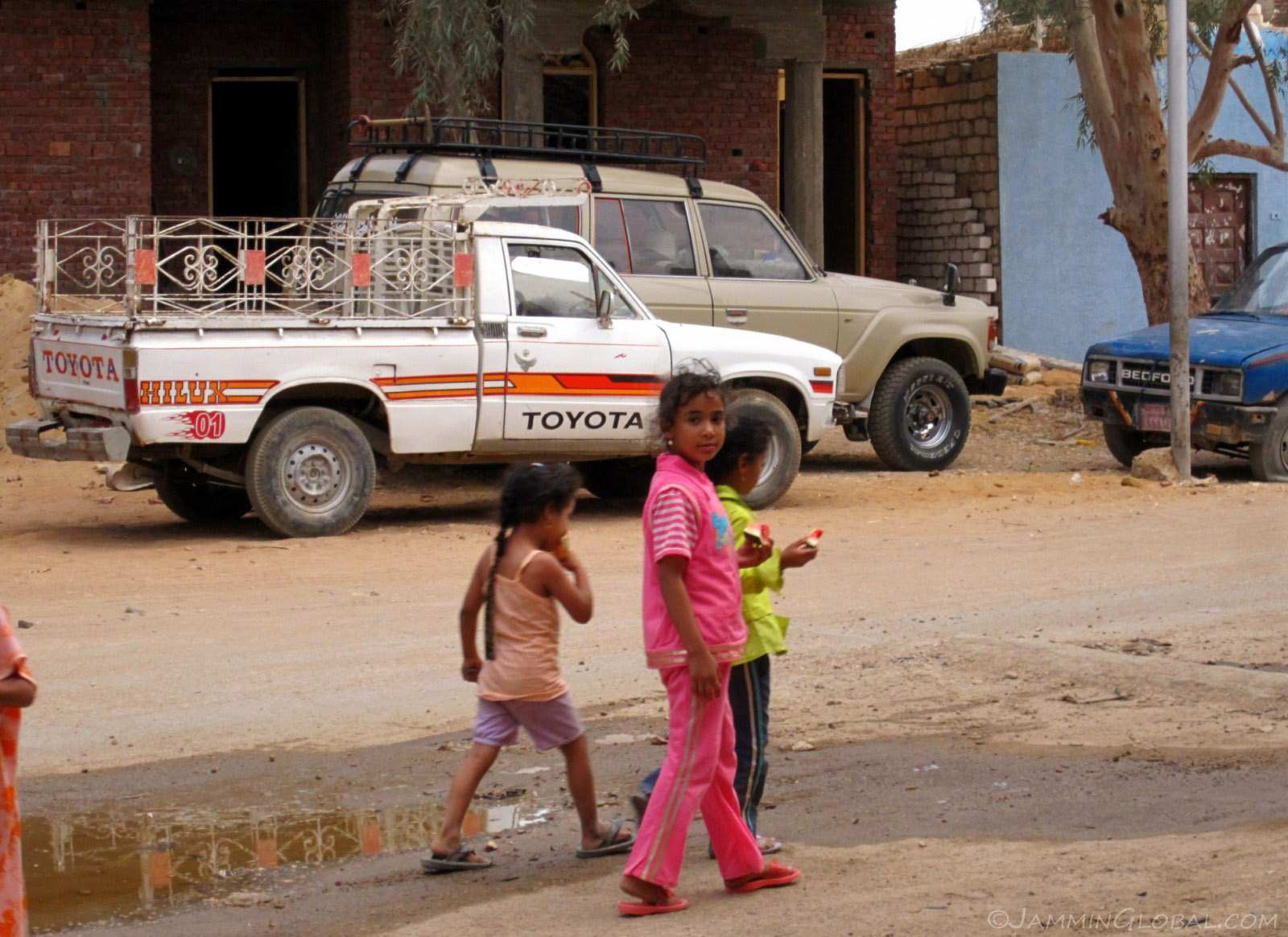
Nope, just some watermelon.
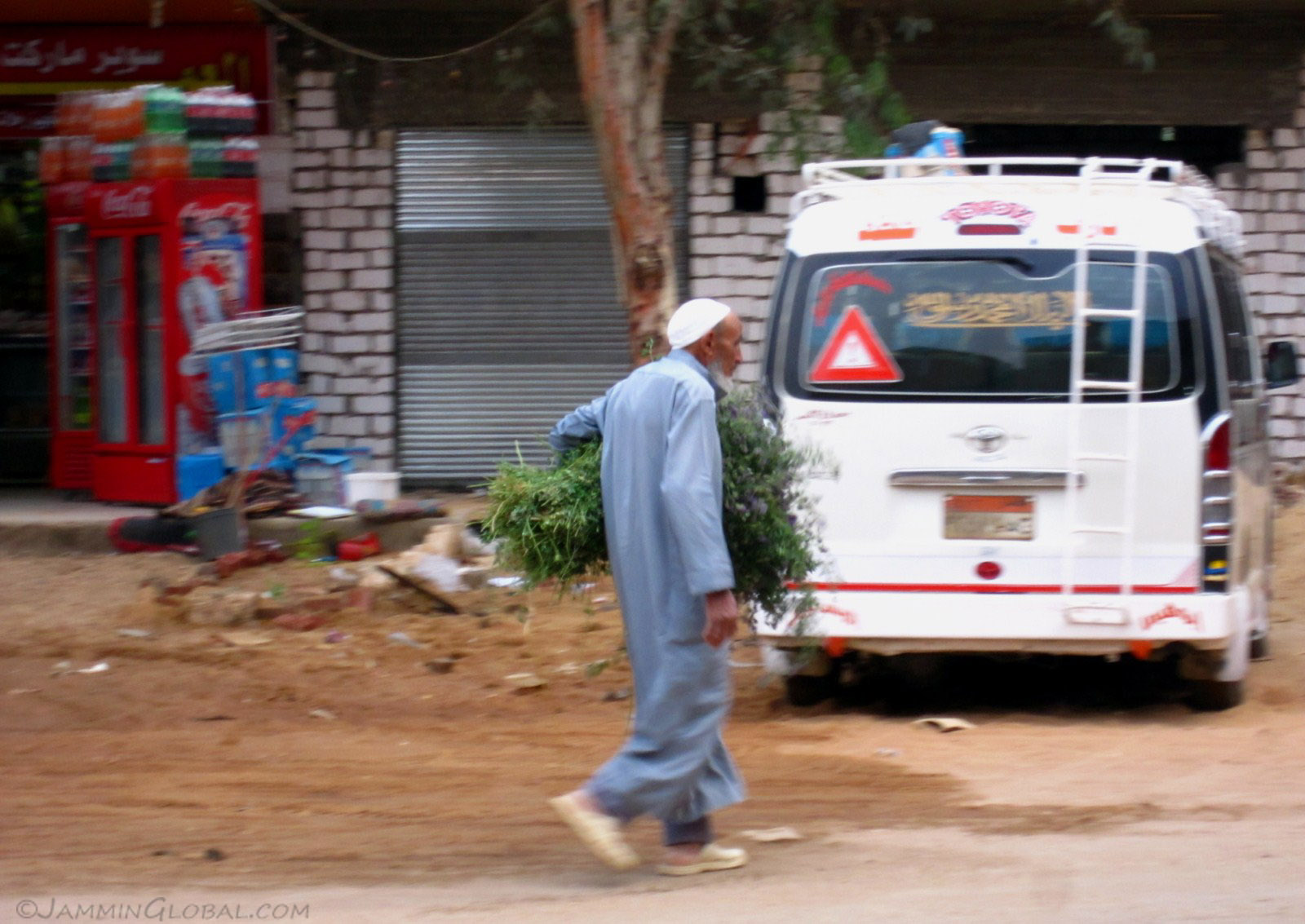
An elderly man walking away with some fresh alfalfa.
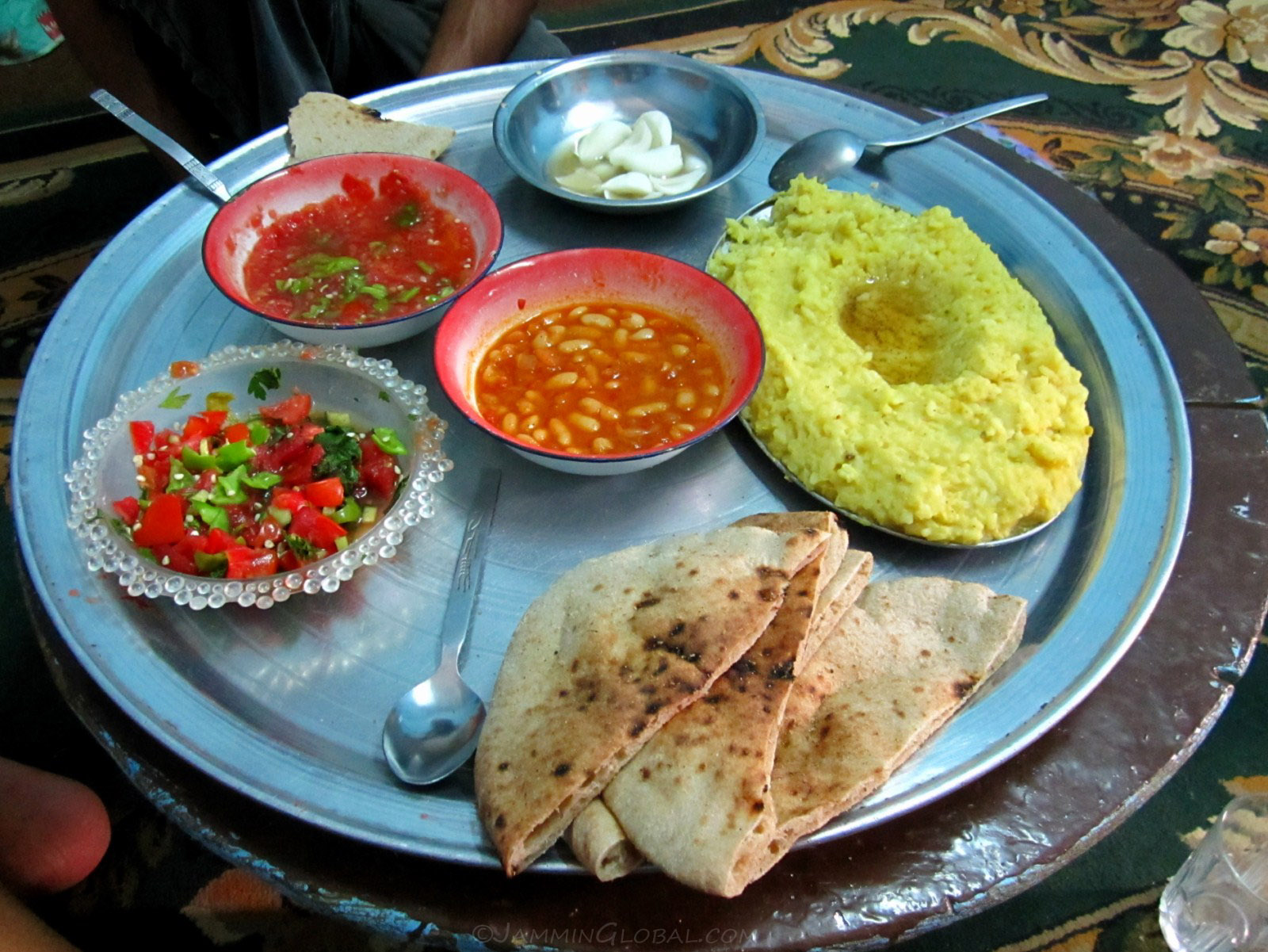
Back at Hamada's house for a tasty dinner of rice with lentils, lafa, beans, pickled onions and tomato salad. The rice with lentils looked like and tasted very much like a comfort food that my mother makes.
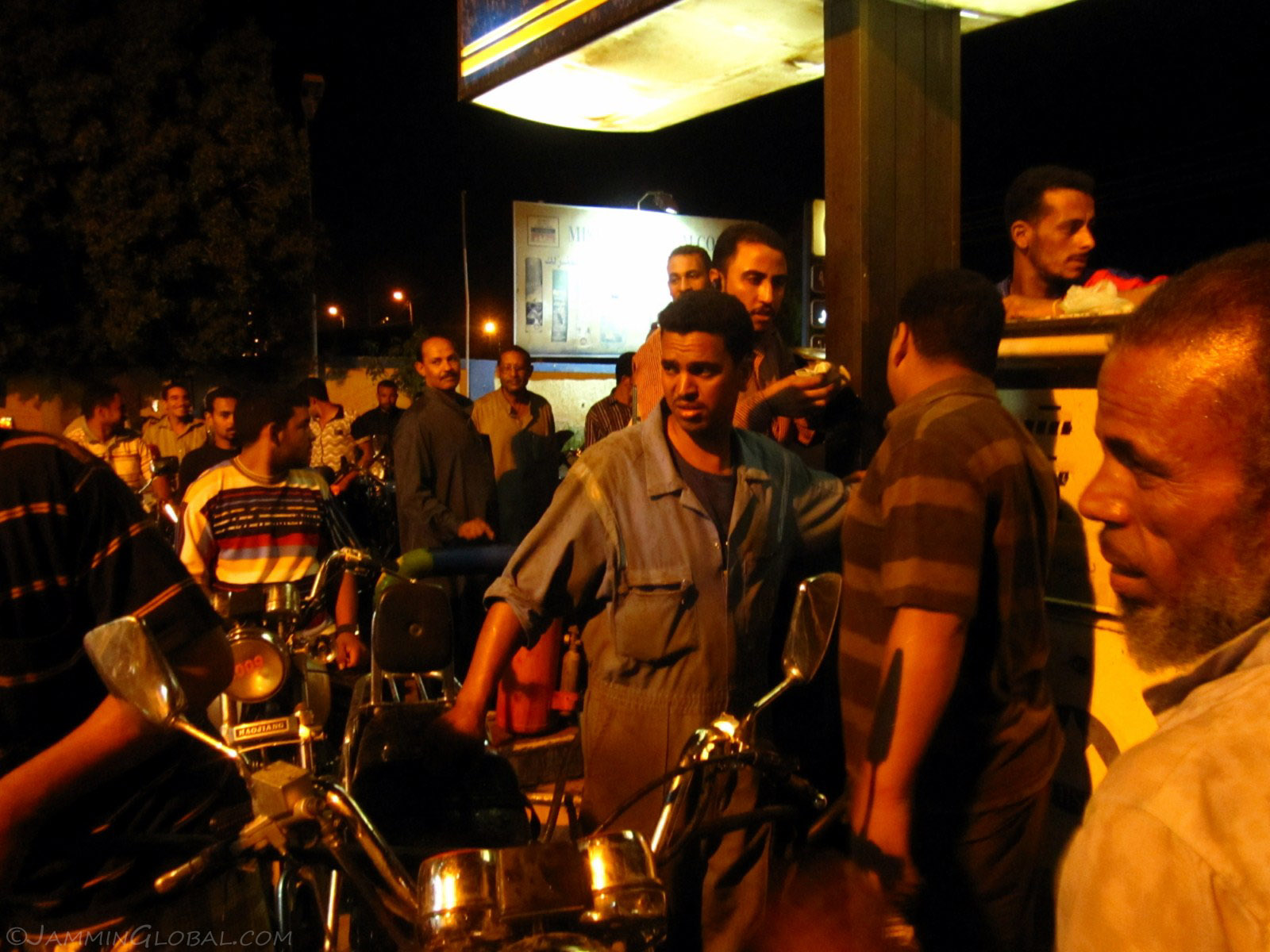
That evening, I managed to fill up with petrol as there wasn't any the previous day and the fresh delivery caused a rush but Hamada told me to go to the front of the line, which no one seemed to mind. With 40 liters (10.6 gal) in my tank from Cairo, I was good to go to the next oasis of Dhakla, but it's always safe to top up, especially as I wasn't sure of fuel availability further south.
Hamada was a great host for my two days in the oasis of Bahariya and I was thankful to experience a bit of Bedouin culture, especially as most of it is eroding with influence from Cairo. The night out in the desert with Taheer and Hamada was a sublime experience and got me geared up for some more desert camping coming up in the White Desert.
Next: Egypt, Part 10: Camping out in the White Desert
Previous: Egypt, Part 8: The Pyramids of Giza and The Sphinx